Southeast Arizona
- A rich assemblage of Sierra Madre bird species whose ranges just barely reach the US/ABA area in the Sky Islands of Southeast Arizona.
- Absolutely breathtaking scenery in the mountains, with incredible red rock canyons towering overhead.
- A diverse array of herptiles, mammals, flowers and butterflies. The Sky Islands have several endemics that are only found in these mountain ranges.

Tour Overview
Southeast Arizona birding tour highlights borderland specialties like Elegant Trogon, Spotted Owl, Rose-throated Becard, Mexican Chickadee, Thick-billed Kingbird and many more!
This tour is timed for the start of the monsoon season, known also as the second spring; the desert blossoms at this time, and it is the best season to find many of the hummingbirds and other specialties for which the region is famous.
Coinciding with afternoon rains, several species like Varied Bunting and Botteri’s Sparrow initiate their breeding season during the monsoons and are more visible than at other times of year.
The mountain canyons we visit are gorgeous places with plenty of opportunity to soak in the visually stunning scenery.
This tour covers a variety of habitats and elevations and should tally over 150 species of birds. In addition to the avian spectacle that is southern Arizona, this is a naturalist’s playground with lots of viewing opportunities for mammals, herps, butterflies and flowers.
Dates & Prices
Dates & prices, what's included, tour price includes.
- All accommodation (Good, comfortable)
- All breakfasts and lunches
- Ground transportation (typically 12-passenger vans)
- One EET guide with 4 - 8 participants, 2 guides with 9 - 12 participants in 2 vehicles
- All park, conservation and entrance fees
Tour Price Does Not Include
- Flights to and from start/ end location
- Evening meals
- Travel Insurance
- Items of a personal nature
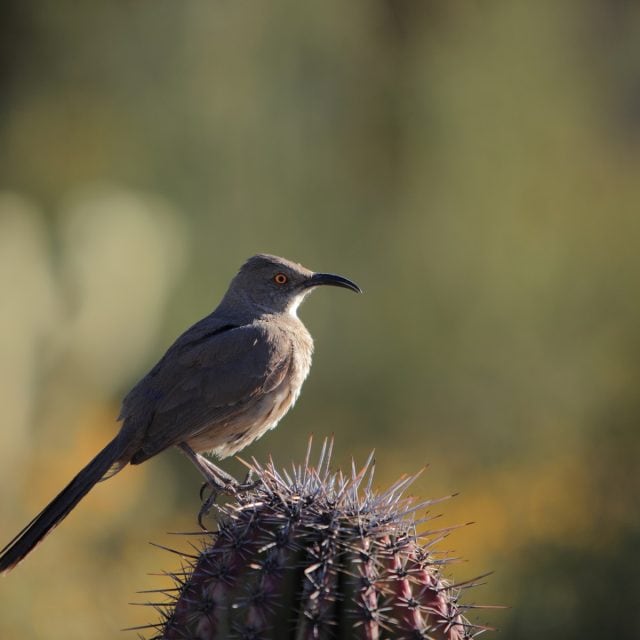
Day 1: Arrival and Orientation
Our Southeast Arizona birding tour begins in Tucson for our evening meet & greet dinner. Night in Tucson.
Day 2: Mount Lemmon
We travel up a paved road to the pine forests on nearby Mount Lemmon for excellent views of the city and desert below. We will also have a chance to see our first species of these forests.
Night in Tucson.
Day 3: Tucson area-Saguaro National Park
On our next morning, we search the Sonoran Desert’s Giant Saguaro cactus landscape for lowland birds such as Gilded Flicker, Gila Woodpecker, Costa’s Hummingbird, Verdin, Cactus Wren, Black-throated Sparrow and Phainopepla. Afterwards, in the heat of the day, we drive to higher elevations of the Chiricahua Mountains where we stay for the next few days. Night in Portal.
Days 4 & 5: Portal/Chiricahua Mountains
The Chiricahuas are a very special place. The spectacular vistas; the diverse habitats of deserts, canyons, and mountain highlands; and the rich history of the area all combine to make this a major highlight of any trip to southeast Arizona. The arid grasslands and deserts are good habitat for Prairie Falcon, Scaled Quail, Burrowing Owl, Juniper Titmouse, Bendire’s and Crissal Thrashers and Swainson’s Hawk. Cave Creek Canyon is just simply a joy to visit, and we explore the roadways and trails of this marvelous canyon. The wild and beautiful mountains are the only spot in the US one can reliably find Mexican Chickadees! The Chiricahuas are a treasure trove of amazing birds, with superb Elegant Trogons; several hummingbirds including Blue-throated, Rivoli’s and Broad-tailed; and Sulphur-bellied Flycatchers. In the high-elevation pinelands we look for specialties including Arizona Woodpecker, Greater Pewee, Pygmy Nuthatch, Yellow-eyed Junco, Hepatic Tanager and Short-tailed Hawk. Flocks of migrant warblers such as Townsend’s and Hermit mix with local breeders such as Olive, Grace’s, Virginia’s, and Red-faced Warblers and Painted Redstarts. Other goodies we should encounter include Mexican Jay, Woodhouse’s Scrub-Jay, Western Bluebird, Scott’s and Hooded Orioles, and Black-headed and Evening Grosbeaks.
At some point we try for some nighttime birds like owls and goatsuckers, as well as noting any of the fascinating snakes, lizards and toads that appear in the evening. Nights in Portal.
Days 6 & 7: Huachuca Mountains
We spend a final morning in Portal, looking for species we might have missed, before heading towards our next mountain range, the Huachuca Mountains. This is a great area for fantastic birds like Lucifer Hummingbird, Buff-breasted Flycatcher, Red-faced Warbler and Spotted Owl, and we spend two exciting days exploring this delightful mountain range.
The lush mesquite grasslands here are inhabited by Botteri’s, Cassin’s and Rufous-crowned Sparrows. Nearby mountains are cloaked in pine/oak woodlands that host a diverse array of woodland birds - Arizona Woodpecker, Cordilleran Flycatcher, Bridled Titmouse, Virginia’s and Black-throated Gray Warblers, Hepatic Tanager, Plumbeous and Hutton's Vireos, Spotted Towhee and Red Crossbill. Overhead we look for Zone-tailed Hawk, Northern Goshawk and Golden Eagle. Some very special birds we attempt to find include a loose colony of Buff-breasted Flycatchers, Eastern Bluebird, Spotted Owl, and Lucifer and White-eared Hummingbirds at hummingbird feeders.
Being so close to the Mexican border, these mountains have a long history of producing some real rarities. A few of the rarer species that have been somewhat regular the last few years include Tufted Flycatcher, Plain-capped Starthroat, Flame-colored Tanager and Rufous-capped Warbler – we will certainly try to find any of these species if they are present. We also have another chance here for Sulphur-bellied Flycatcher and Greater Pewee. Nights in Sierra Vista.
Day 8: Patagonia
Today, we visit the Patton Center, one of the best places in the US to see Violet-crowned Hummingbirds. We should also find Broad-billed, Black-chinned and Anna’s Hummingbirds, along with Yellow-breasted Chat, Bronzed Cowbird, Hooded and Bullock’s Orioles, and Lesser Goldfinch. The adjacent Sonora Creek Nature Conservancy is an excellent location for Thick-billed Kingbird and the hills nearby can be productive for Montezuma Quail and Black-capped Gnatcatcher. We also visit the rugged and exceptionally beautiful Atascosa Highlands to track down Five-striped Sparrows and Buff-collared Nightjars, both species that just barely slip over the Mexican border into the US. We are always on the lookout for Gray Hawk, Northern Beardless Tyrannulet, Varied Bunting, three species of Myiarchus flycatchers (Ash-throated, Brown-crested, and Dusky-capped), Vermilion Flycatcher, Bell’s Vireo, and Lucy’s Warbler. Night in Green Valley.
Day 9: Atascosa Highlands/Tubac
Today we work our way up to the Santa Rita Mountains. Rose-throated Becards have been found annually for a few years along the Santa Cruz River in Tubac, and we will certainly try for this strange sub-tropical bird. We should have time today to track down a species or two that we might have missed up to now. Night in Green Valley.
Day 10: Santa Rita Mountains and return to Tucson
We spend our final days in the Santa Rita Mountains, birding legendary Madera Canyon. This scenic canyon is full of birds like Painted Redstart, Arizona Woodpecker, Whiskered Screech-Owls and Rivoli’s (Magnificent) Hummingbirds, and it can be another excellent spot for Trogons. Climbing into the Santa Ritas, we stop at lowland washes and dry watercourses, outstanding localities for desert scrub species where we look for Ladder-backed Woodpecker, Pyrrhuloxia, Bell’s Vireo, Rufous-winged Sparrow, Canyon Wren, and Greater Roadrunner. Night in Tucson.
Day 11: Departure
Our Southeast Arizona birding tour ends today, you can depart anytime today.
What to Expect
Overview The Southeast Arizona tour is a moderately paced birding tour. We go birding early most days to beat the heat, and spend most of our time looking for birds.
Food We generally have breakfast at the hotel before we head out for the day. Sometimes we will have optional pre-breakfast walks. We often take a picnic lunch in the field, but will occasionally stop at a restaurant for lunch. Dinner is usually at the lodge or a nearby restaurant. Each evening after dinner we compile the day’s checklist, review the day’s activities, birds, mammals and other observations, and plan the next day’s activities.
Accommodation Accommodations during the stay are basic, and vary from comfortable three star hotels to rustic birding lodges.
Walking Most of the walking on this tour is easy, but there are a few steeper hikes with uneven surfaces. Participants must be able to walk for 2-3 hours for up to 5km (3 miles).
Driving Most days have a small to moderate amount of driving. There will be two longer drives between towns, but we make several rest and birding stops along the way.
Climate The temperatures will be mostly warm to hot. The maximum elevation on this tour is 2,000m (8000 ft). July in Arizona features an average high temperature of 41° C (105.9° F) and an average low of 27° C (81° F.) We should generally expect a little bit of rain this time of year, so a light rain jacket is recommended.
Featured Wildlife
While we cannot guarantee sightings of the birds or mammals listed below, we believe that encountering these species is quite likely during this tour.
- Elegant Trogon
- Zone-tailed Hawk
- Thick-billed Kingbird
- Botteri’s Sparrow
- Rufous-capped Warbler
- Red-faced Warbler
- Mexican Chickadee
- Short-tailed Hawk
- Rose-throated Becard
- Crissal Thrasher
- Bendire’s Thrasher
- Five-striped Sparrow
- Montezuma Quail
- Blue-throated Hummingbird
- Violet-crowned Hummingbird
- Lucifer Hummingbird
- Mexican Jay
- Arizona Woodpecker
- Sulfur-bellied Flycatcher
- Buff-collared Nightjar
- Mexican Whip-poor-will
- Whiskered Screech Owl
- Olive Warbler
- Gilded Flicker
- Spotted Owl
- And many more!
Past Tour Checklists
View the list of birds and other wildlife we encountered on our past tours.
- Southeast Arizona 2023 species list (ebird)
- Southeast Arizona 2022 species list (ebird)
Trip Reports & Inspiration
Tour reviews, you might also like.

South Texas

Arizona in Winter
- Conservation
- In the media
- Birding blog
- How to book
- Booking FAQs
- Plan your trip
- Land Tour FAQs
- Insurance FAQ
WHERE WE GO
- Mexico & Central America
- South America
- Australia & New Zealand

- Terms of Use
- Privacy Policy
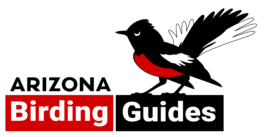
Arizona's premier local guiding service for birders and bird photographers
More birds. better photos. your list., our services.
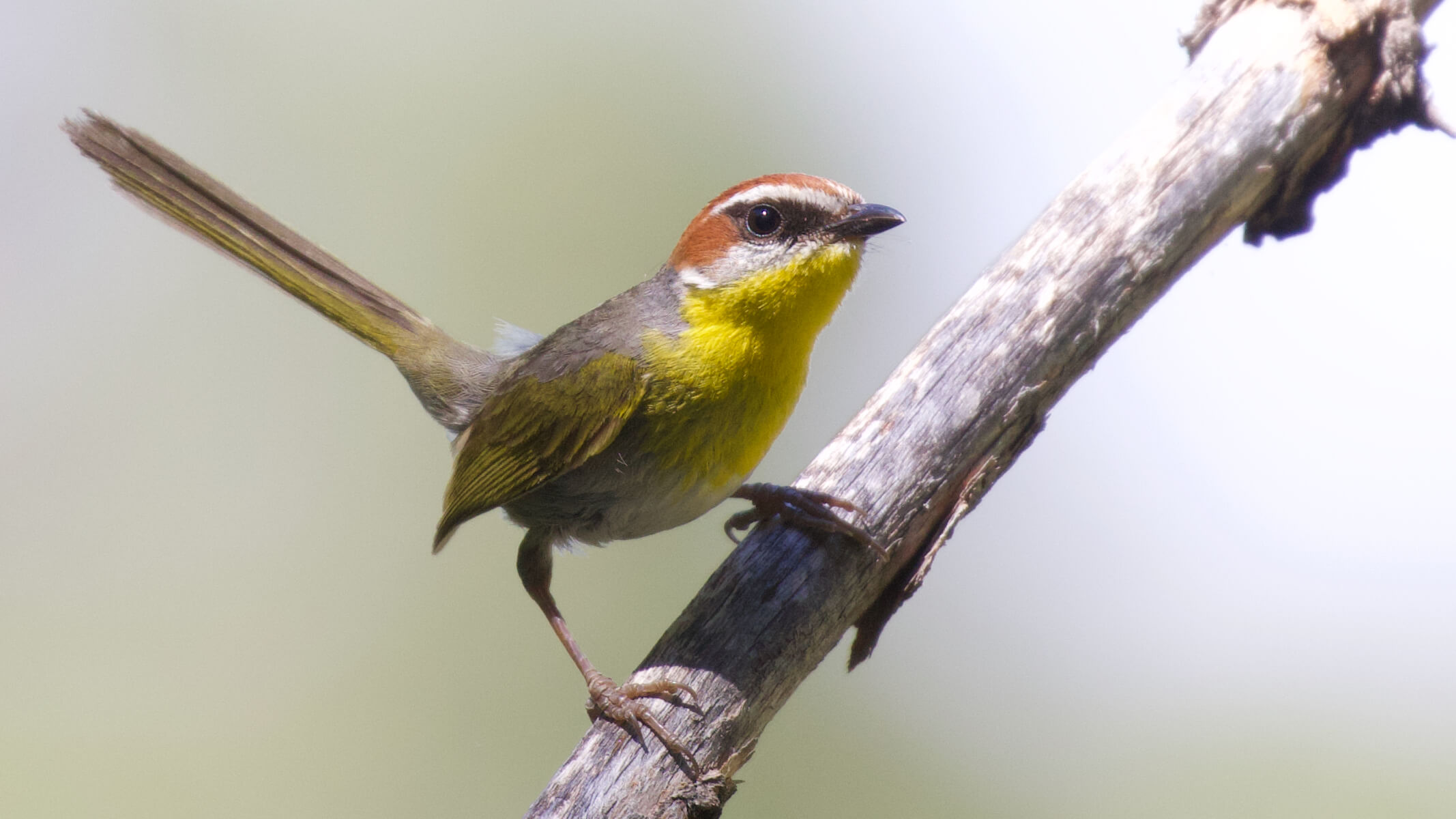
A popular choice for birders seeking to discover Arizona's spectacularly diverse birdlife. Starting at $250 .
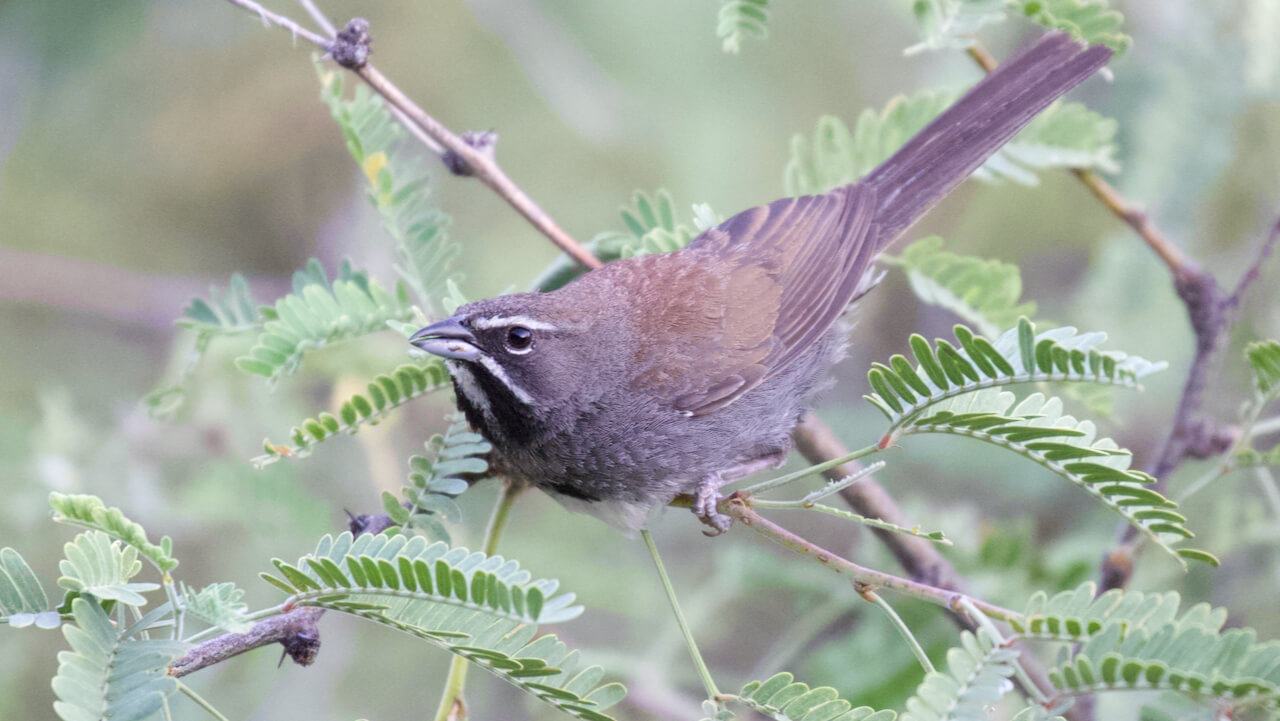
Bird Photography
A birding experience designed to get you the best possible photos of Arizona birds. Starting at $300 .
The BEST OF ARIZONA North AND South
We guide in all regions of the state, from the birder mecca of Southeastern Arizona to the world-famous canyon country of Northern Arizona. We want to get you the best of Arizona birds north and south – Elegant Trogons and hummingbirds to Pinyon Jays and California Condors.
Our REVIEWS
Arizona Birding Guides
Arizona Birding Guides is about following passions – passion for being in nature, for exploring beautiful places and amazing birds, for getting the best possible photo, and for having new experiences that create lasting memories. We are honored to be able to share our passion for Arizona birds with you!

Answers to your questions!
What time of year is best for birding in Arizona? Where should I go birding when I visit? What species of birds will I see while I’m there? Find answers to all your questions and more on our FAQ page.
Pro Tips For Birding IN Arizona
Get a copy of our free mini-guide, Pro Tips for Birding in Arizona , and learn how to make the most of your Arizona birding trip!
Check us out out on Ebird!
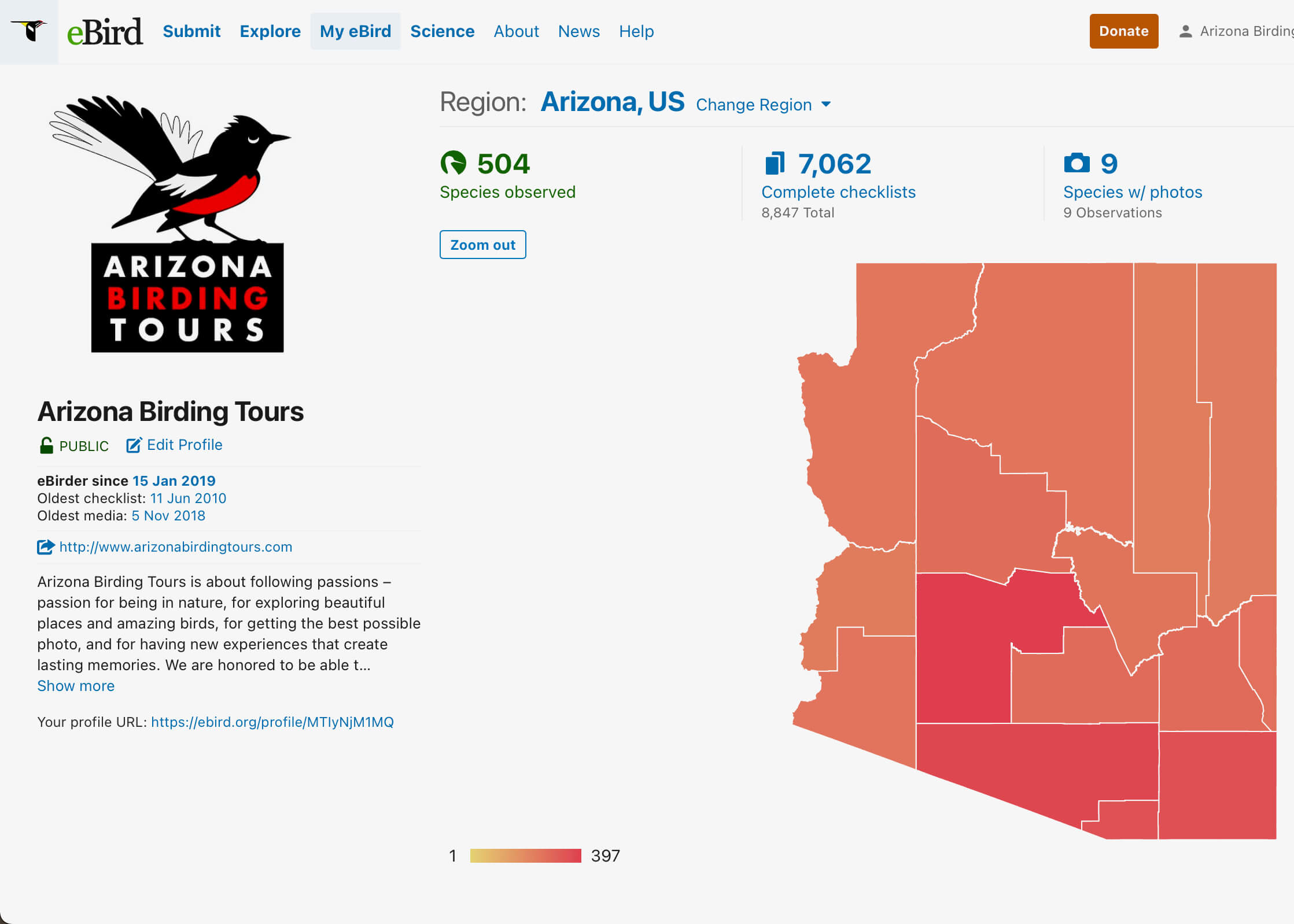
RESERVE YOUR DATES!
Follow us on facebook.
Birding Tour USA: Comprehensive Southeast Arizona – The Desert and Sky Islands
Go to: Northern Arizona Birding Tour | USA Birding Tours | Birding Tours in North America | All our birding tours
Dates and Costs
12 – 21 August 2024
Price: $3,870 / £3,199 / €3,757 per person sharing.
Single Supplement: $690 / £570 / €670.
* Please note that these currency conversions are calculated in real-time, therefore are subject to slight change. Please refer back to the base prices when making final payments.
12 – 21 August 2025
Price: $4,090 / £3,381 / €3,970 per person sharing.
Single Supplement: $720 / £595 / €699.
Recommended Field Guide
(Please also read our blogs about recommended field guides for the seven continents here )
Tour Details
Duration : 10 days Group Size : 4 – 8 Tour Start : Tucson Tour End : Tucson
Price includes:
Meals/Water Accommodation Transport Guiding fees
Price excludes:
Flights Personal insurance Alcoholic beverages Gratuities (please see our tipping guidelines blog ) Laundry service Personal expenses such as gifts
Featured Guide:

Comprehensive Southeast Arizona – The Desert and Sky Islands August 2024/2025
Southeast Arizona is a land of stark contrasts and spectacular scenery. In the lowlands, granite outcrops, towering Saguaro cacti, and sandy washes typify the Sonoran Desert , a landscape featured in so many ‘Western’ movies. The fabled Sonoran Desert is the home of such iconic species as Greater Roadrunner and Gambel’s Quail . Rising from the desert, isolated mountain ranges, clad in beautiful Madrean pine-oak woodland, provide a habitat found nowhere else in the United States. At remarkably cool (compared to the very hot desert plains below) higher elevations on these sky islands, pine forests can also sometimes be found. These forested mountain islands, with provocative names such as the Huachucas and Chiricahuas, are the northernmost outposts for a long list of primarily Mexican species such as Elegant Trogon and Mexican Chickadee . The canyons surrounding these mountains carry ephemeral streams to the parched lowlands below, creating ribbon-like groves of cottonwood that act as a conduit for even more tropical birds to enter south-eastern Arizona, such as Thick-billed Kingbird and Violet-crowned Hummingbird . Together, these contrasting habitats make southeast Arizona one of the most exciting regions to bird in North America, with more bird species than any other land-locked area of comparable size in the United States. With incredible birding areas like Cave Creek Canyon and the Ramsey Canyon Preserve and Nature Conservancy, it is no wonder why only California, Texas, and Florida have state lists longer than this relatively small region! The Arizona bird list boasts over 570 species! Of these species, 36 are only occasional anywhere else within the United States, making Arizona a must for North American birders.
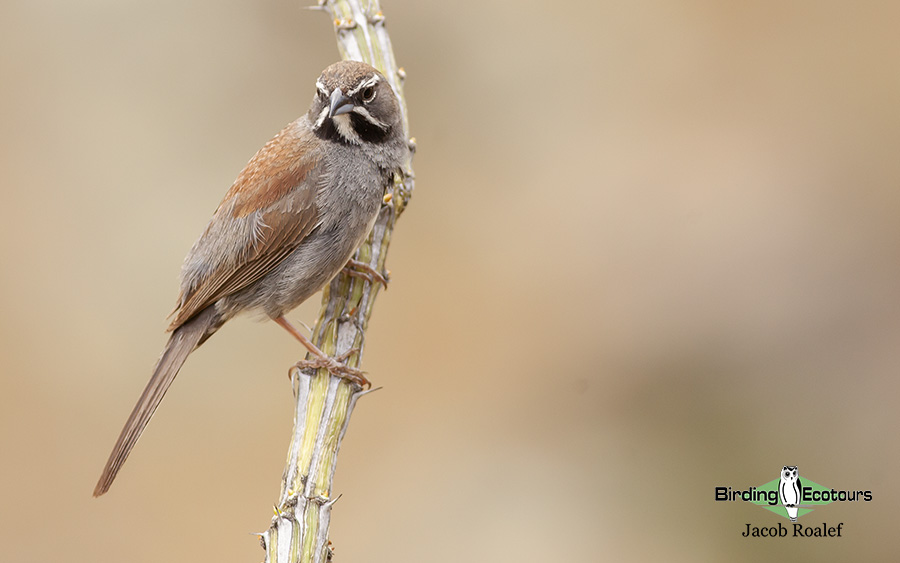
We begin this tour in the city of Tucson, where we explore the Sonoran Desert via Saguaro National Park , as well as travel up the impressive peak of Mt. Lemmon . In the southeast corner of the state, the Santa Ritas will provide us with our first true taste of birding the Madrean sky islands , with specialties such as Elegant Trogon . Further east we will punctuate our time spent in the upper elevation of the Huachucas with vigils at lowland hummingbird feeders for Violet-crowned Hummingbird and Lucifer Sheartail (Hummingbird). Heading even further east, we straddle the border with New Mexico and explore the Chiricahuas, which hosts more specialties like Mexican Chickadee and Olive Warbler .
If you combine this tour with our northern Arizona and Grand Canyon tour , you’ll be able to have the most comprehensive Arizona birding tour on offer and you’ll also be able to see a host of typical western species. It should also be noted that we run our southeast Arizona birding tour dates so you can combine it with the famous Southeast Arizona Birding Festival operated by the Tucson Audubon Society .
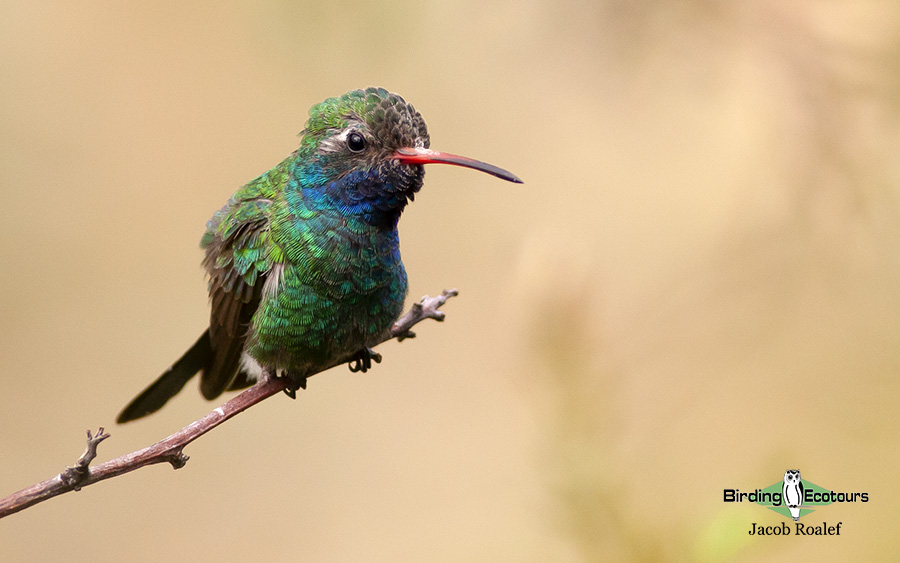
Itinerary (10 days/9 nights)
Day 1. arrival in tucson and initial birding.
After arrival at the Tucson International Airport, participants will transfer to the hotel to get checked in. From here, we will head out for our first dinner and a chance to get to know each other better. Following dinner, those who choose to, can go out exploring for several nocturnal species like Lesser Nighthawk , Elf Owl and maybe even a Common Poorwill . Then it is back to the hotel for the night.
Overnight: Tucson
Day 2. Birding Mt. Lemmon to Madera Canyon
We will start the morning heading up to the tallest peak in the Santa Catalina Mountains, Mt. Lemmon, which stands at an impressive 9,159 feet (2,792 m). We have several stops planned along the way as we reach different habitat types with the ascending elevation. First stop, a quick scan through a huge Saguaro forest looking for Gilded Flicker , Black-tailed Gnatcatcher and Brown-crested Flycatcher . Further up, we will reach Rose Canyon Lake to search for several great birds including Common Black Hawk , Yellow-eyed Junco , and Pygmy Nuthatch . Higher and higher we go until we reach the pines near the top for high altitude species such as Broad-tailed Hummingbird , Hermit Warbler , Cordilleran Flycatcher, and the special Red-faced Warbler . After lunch and a bit more birding, we will start our descent of the mountains and continue south for our next session of birding in the sky islands.
We will stop in the town of Green Valley for dinner before heading back out for a relaxing evening watching the feeders at the Santa Rita Lodge in Madera Canyon. They regularly attract fantastic birds including Hepatic Tanager , Arizona Woodpecker , and Rivoli’s Hummingbird . In the past, the feeders have hosted several amazing rarities and perhaps one might be hanging around! As the sun sets, we will travel up to the top of the canyon and try for Mexican Whip-poor-will , Northern Pygmy Owl , and Whiskered Screech Owl . Then it is back to the hotel and time for bed.
Overnight: Green Valley
Day 3. Santa Rita Mountains birding
Today we will explore the canyons of the Santa Rita Mountains. Recent reports may dictate where we visit first, however there are loads of amazing birding areas here such as Box, Florida, and Madera Canyons. The past several years Box Canyon has hosted one or two breeding pairs of the rare Five-striped Sparrow . With any luck we will be able to score at least one of these along with Varied Bunting and Golden Eagle . Then we will visit Florida Canyon, the most reliable location for the special Black-capped Gnatcatcher , plus other great species like Northern Beardless Tyrannulet . Of course, we cannot forget about exploring Madera Canyon itself where we will spend more time searching the riparian areas for Elegant Trogon , Sulphur-bellied Flycatcher , Painted Redstart and more! Another evening brings another chance at nocturnal species if we were unsuccessful the previous night.
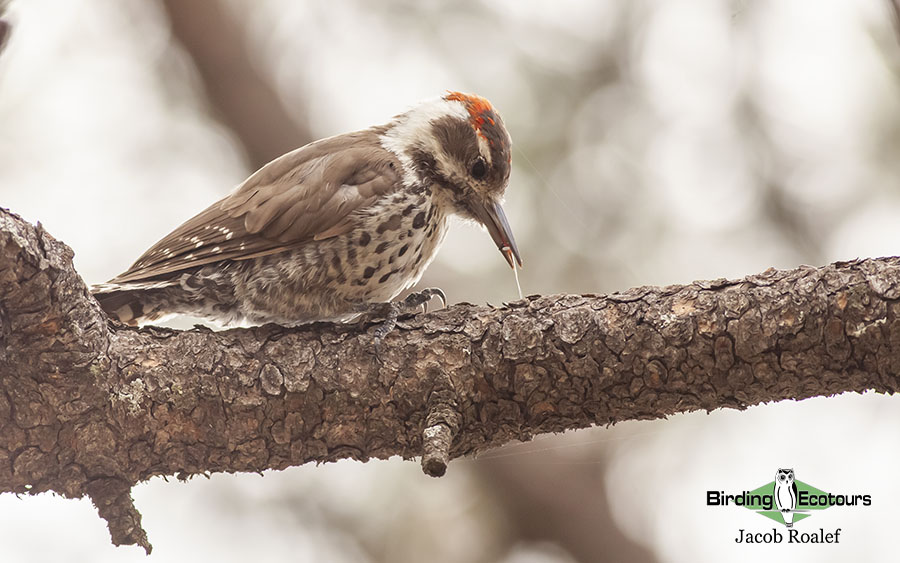
Day 4. California Gulch and more Santa Rita Mountains
Today starts off with some more morning birding in the Santa Rita Mountains targeting any species or locations we may have missed the previous day. Around midmorning, we are scheduled to make the journey to California Gulch. Until recently, this area was the only reliable and known spot to see the rare Five-striped Sparrow , of which it is estimated only 50 territorial males come to the US each year. Recently, a few more pairs have been discovered in easier-to-access locations, as the growing trend of southern breeding specialties shifting northwards continues. The other main attraction of California Gulch is the chance for Buff-collared Nightjar in the evening, as darkness engulfs the landscape. Our drive back out of this area will be a long one, but if the skies are clear we will be in for an amazing cosmic display as well as the chance for Common Poorwill on the roadsides. If we manage to get lucky and locate these species elsewhere, we will spend the day exploring the canyons of the Santa Ritas and save ourselves the long journey to the gulch.
Day 5. Tubac/Tumacacori and transfer to Sierra Vista
The morning will begin with some enjoyable birding in the lowland riparian areas along the Santa Cruz river in Tubac and Tumacacori, before it gets too hot. Many fantastic species can be found here including a few nesting pairs of Rose-throated Becard in recent years, as well as Summer Tanager , Grey Hawk and Cassin’s Kingbird . We will continue our journey towards Sierra Vista with a few more stops along the way like at the relaxing Paton Center for various hummingbirds and the world-famous Patagonia Rest Area to search for specialties including Violet-crowned Hummingbird and Thick-billed Kingbird . We will also stop at Patagonia Lake State Park and the Sonoita Creek State Natural Area for a few water birds like Neotropic Cormorant and Mexican Duck , uncommon in the standard arid habitats surrounding it. Finally, we will arrive in the Huachuca Mountains where we will spend the remainder of the evening at the Ash Canyon Bird Sanctuary feeders, a favorite hangout of the Lucifer Sheartail (Hummingbird).
Overnight: Sierra Vista
Days 6-7. Birding the Huachuca Mountains
Straddling the border with Mexico, the Huachuca Mountains are the second of the Madrean sky islands on our itinerary, offering a slightly different set of specialties from the Santa Ritas, such as the semi-colonial Buff-breasted Flycatcher and the charismatic Spotted Owl . A series of canyon outlets on the eastern flank of these mountains, such as Carr, Ramsey, Hunter, and Miller Canyons, provide access to the pine-oak woodlands where these species occur. Occasionally rarities such as White-eared Hummingbird or Rufous-capped Warbler appear and we will adjust our plans accordingly to target these birds. In addition to the amazing canyon birding, the Sierra Vista area hosts several fantastic grassland habitats for us to explore, like Las Cienegas National Conservation Area and the San Pedro Riparian National Conservation Area. As the scrublands begin to bloom with the rain, the fantastic Cassin’s and Botteri’s Sparrows begin singing and establishing territories. The grasslands are also full of other great wildlife such as Burrowing Owl , Pronghorn Antelope and Black-tailed Prairie Dog . We will have two amazing days to explore this region that are sure to be filled to the brim with birds and fun!
Day 8. Birding Portal and the Chiricahua Mountains
We will be up early this morning as we leave the Huachucas behind and head towards the final range of the sky islands. The Chiricahua Mountains, which means “Big Mountain” in Opata, rise spectacularly out of the surrounding desert as the single-largest mountain mass south of the Gila River in Arizona, while also boasting the most diverse land-locked plant and animal community in the United States. Starting in the lower-elevation desert valley around dawn, we explore the area around Big Thicket while we straddle the border with New Mexico searching for the ridiculously curve-billed Crissal Thrasher . As the day heats up, we retreat to the cooler forests along the South Fork Cave Creek Trail – a trail renowned for its breeding population of Elegant Trogon , the star of any birding trip to Arizona. More common specialties such as Bridled Titmouse , Mexican Jay , and Painted Redstart also occur here. Near the top, the Chiricahua Mountains claim the only accessible population of Mexican Chickadee on public lands in the United States, so we make a special effort to see them on this itinerary. The higher elevations also give us a nice opportunity for other great species such as Olive Warbler , Red Crossbill and Steller’s Jay . In the afternoon, we will drive up to the Paradise Road junction around East Turkey Creek in search of the above species. A little further along this road the old mining town of Paradise hosts excellent feeders, which attract the localized Juniper Titmouse .
Overnight: Portal
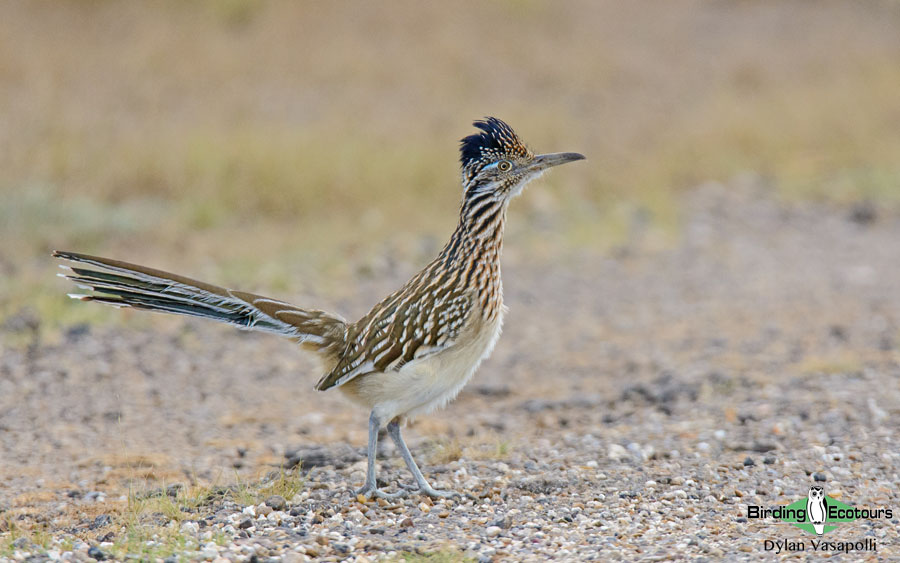
Day 9. Portal to Tucson
The next morning will be spent exploring the Chiricahuas a bit further in search of species missed the day before while also enjoying the incredibly scenic views these mountains have to offer. Driving the canyon roads early in the morning yields a good chance for a wandering Montezuma Quail to make an appearance. Another visit to local feeders is sure to produce the stellar Blue-throated Mountaingem , yet another hummingbird specialty of this region.
After a successful few days birding in the Chiricahua Mountains, we will say goodbye to the sky islands and start our journey back to Tucson, stopping at a few places along the way. First stop is Lake Cochise in Willcox, a true water oasis in the middle of the desert, stocked with plenty of thankful shorebirds and waterfowl. American Avocet , Wilson’s Phalarope and Cinnamon Teal are a few of the potential species here. After an enjoyable time scanning through these birds, we’ll continue on to St. David. This small town is known to host a few pairs of Mississippi Kite , the most westerly known population of this species. After dinner in Tucson, we will enjoy our final Sonoran Desert sunset as well as have a chance to track down any missing nocturnal species.
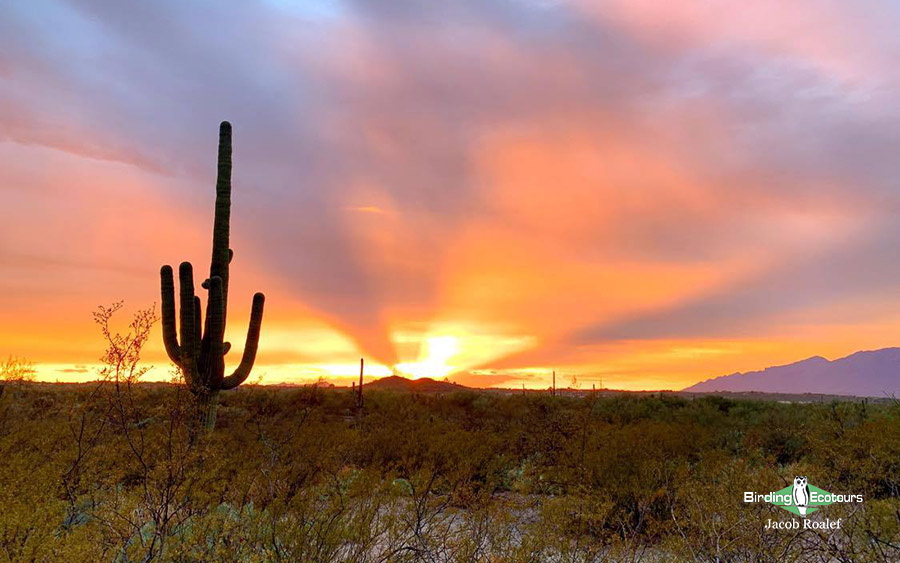
Day 10. Tour concludes
For some, the Desert and Sky Island Arizona tour concludes this morning after a successful run through the southeastern portion of the state. You will be dropped off at the Tucson International Airport for your flights home. For others, it may be the start of an exciting second itinerary, to northern Arizona . Participants joining the second tour will be transferred from Tucson to Phoenix for Day 1 of that itinerary.
Please note that the itinerary cannot be guaranteed as it is only a rough guide and can be changed (usually slightly) due to factors such as availability of accommodation, updated information on the state of accommodation, roads, or birding sites, the discretion of the guides and other factors. In addition, we sometimes have to use a different international guide from the one advertised due to tour scheduling.
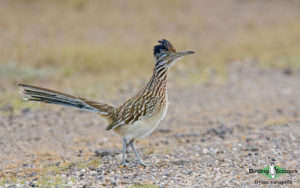
Greater Roadrunner
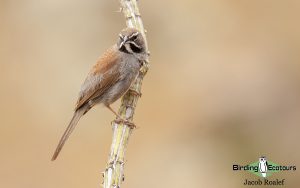
Five-striped Sparrow
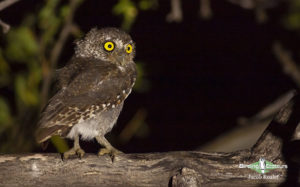
Olive Warbler
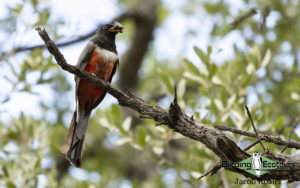
Elegant Trogon
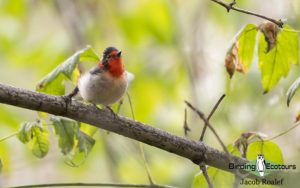
Red-faced Warbler
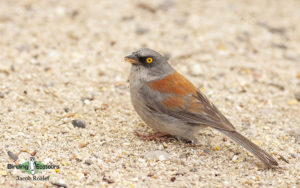
Yellow-eyed Junco
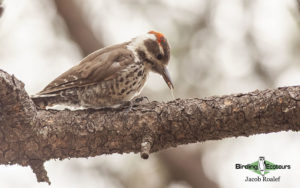
Arizona Woodpecker
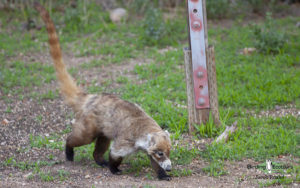
White-nosed Coati
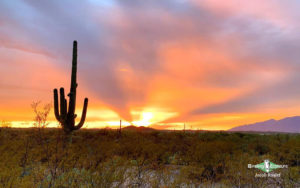
Sonoran Desert
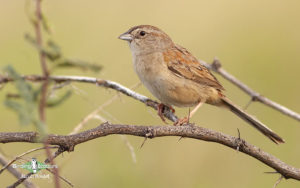
Botteri's Sparrow
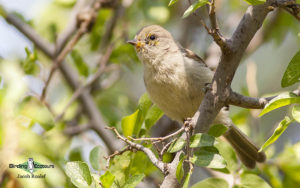
Lucifer Hummingbird
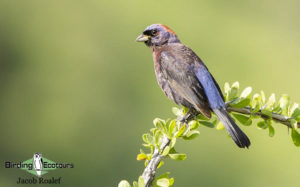
Varied Bunting
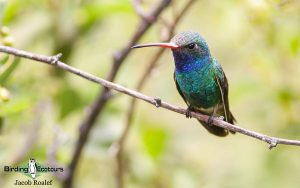
Broad-billed Hummingbird
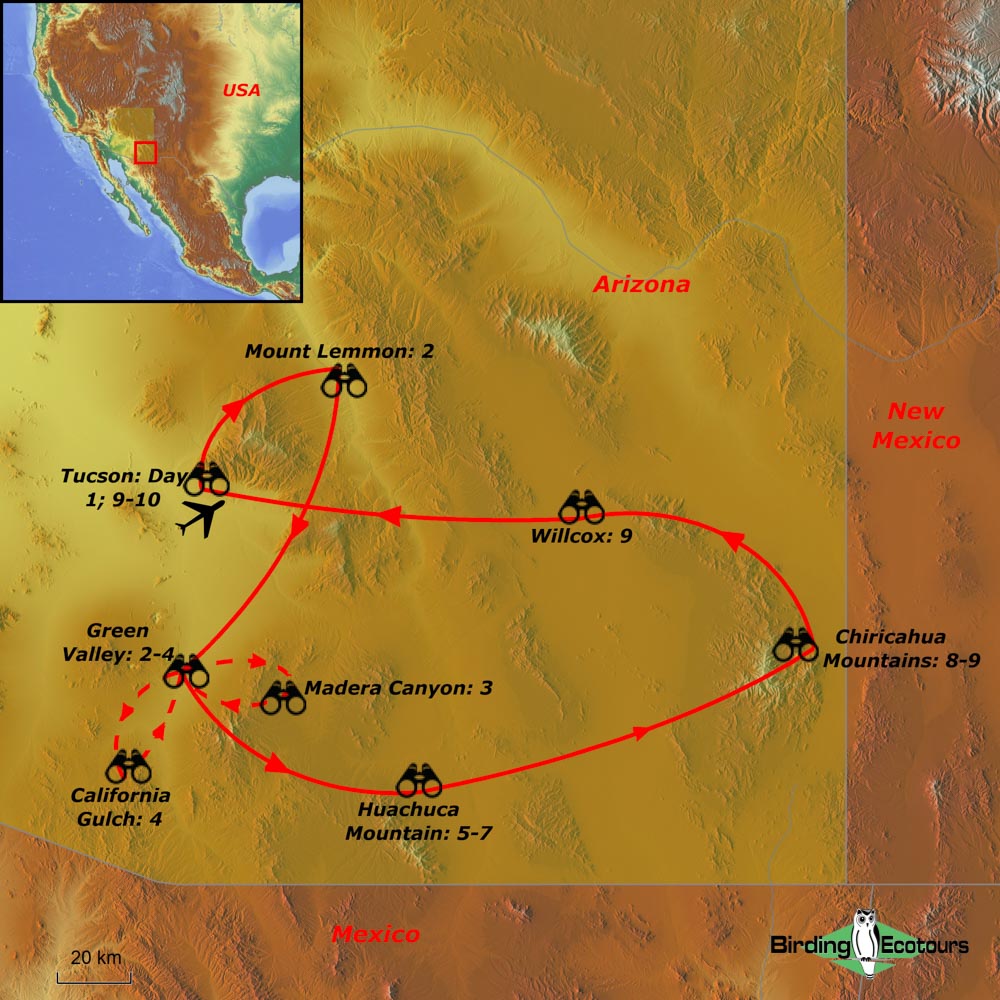
USA – Southeast Arizona: The Desert and Sky Islands Birding Trip Report
14 – 23 august 2022, by jacob roalef.
DOWNLOAD TRIP REPORT
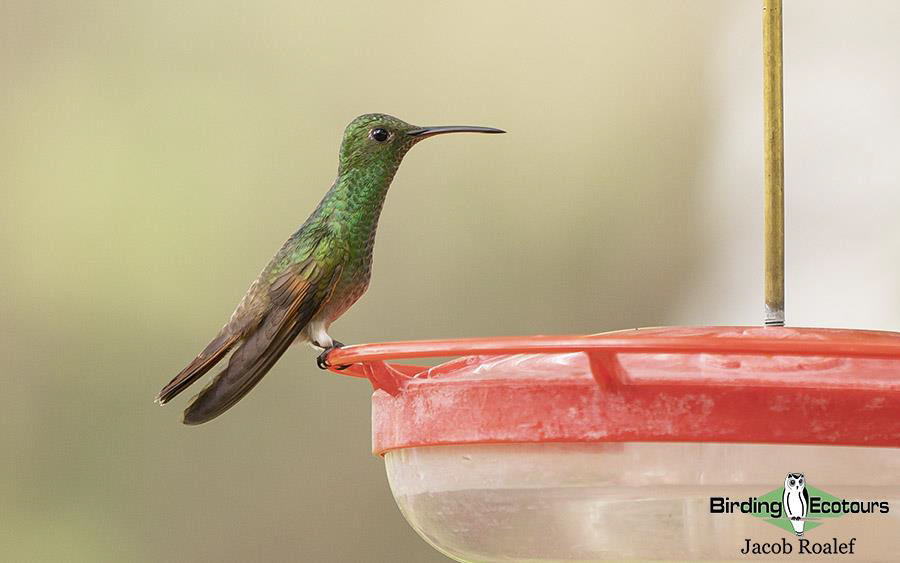
This ten-day set departure tour of Southeast Arizona commenced in Tucson, Arizona on the 14 th of August 2022 and concluded back in Tucson on the 23 rd of August 2022. On this tour we visited numerous fantastic birding locations including Santa Rita Lodge, Mt. Lemmon, Sweetwater Wetlands, Montosa Canyon, Paton’s Center for Hummingbirds, Ash Canyon B&B, Las Ciengas National Conservation Area, Rustler Park, the George Walker House and many more.
This tour connected with many fantastic target birds and regional specials, including 13 species of hummingbirds, giving us a quality list for our ten days in the desert. Avian highlights included Greater Roadrunner , Montezuma Quail , Lucifer and Violet-crowned Hummingbirds , Black Tern , Northern Goshawk , Zone-tailed Hawk , Western Screech-Owl , Arizona Woodpecker , Sulphur-bellied Flycatcher , Rock Wren , Five-striped , Botteri’s and Cassin’s Sparrows , Red-faced Warbler and Pyrrhuloxia . We were also able to see some rarities for Arizona including two Berylline Hummingbirds , White-eared Hummingbird and Ruddy Ground-Dove .
A total of 189 bird species were seen, with two additional heard only species bringing the total recorded to 191, which is a new record for this trip. In addition to the birds, some other animals were spotted including Pronghorn , Black-tailed Prairie-Dog , Harris’s Antelope Squirrel , Striped Skunk and a Desert Tarantula . Full bird and mammal checklists can be found at the end of the report.
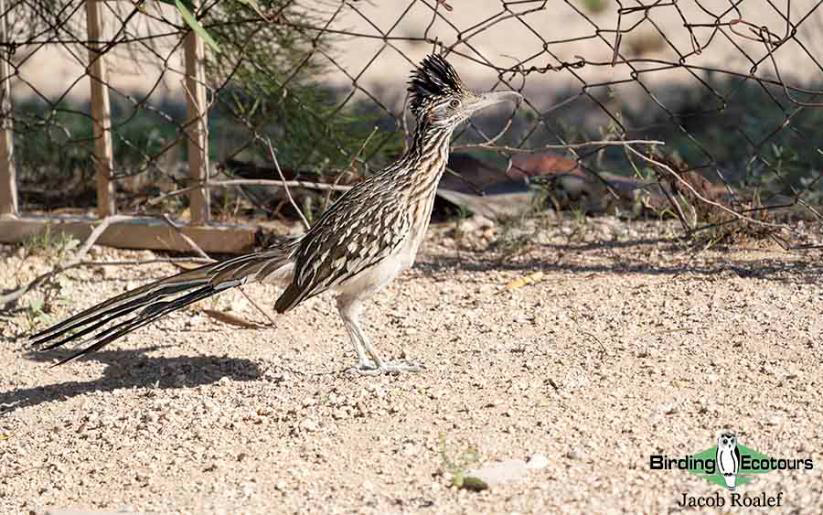
Detailed Report
Day 1, 14 th august 2022. arrival and sweetwater wetlands birding.
The first morning of the trip was mainly spent gathering up some of the participants who were already in the area from the night before. We decided to head off and do some mid-morning birding at Sweetwater Wetlands. These lovely little oases near Tucson are a great introduction to desert birding and species and here we got our first taste of desert specials, including Vermillion Flycatcher , Ladder-backed Woodpecker , Abert’s Towhee and Verdin . After a tasty lunch, we ventured to another local park called Lakeside Lake where we saw a lingering and probably injured Snow Goose . This was a strange bird for the desert, in extreme heat. In addition to the goose, there was Lark Sparrow , Great-tailed Grackle and Gila Woodpecker . We headed to the airport to gather the rest of our group before heading to a superb Mexican food dinner. Sadly, an incoming monsoon prevented any evening birding, so we headed to the hotel for rest instead.
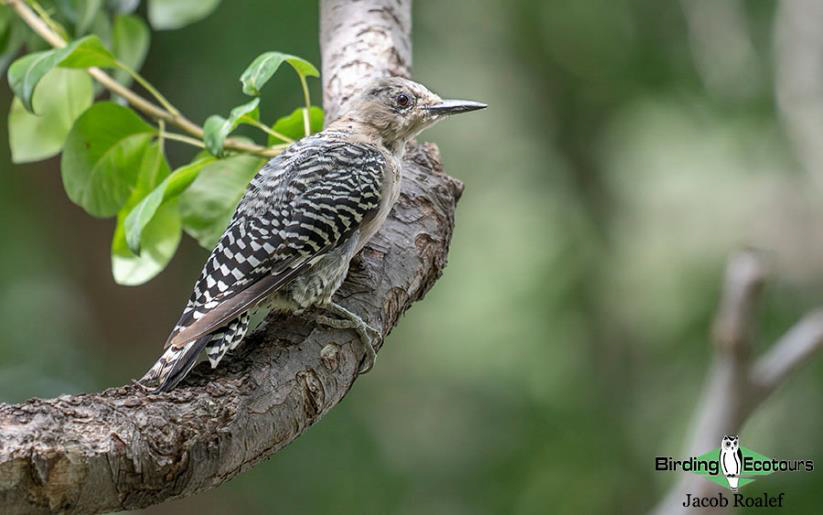
Day 2, 15 th August 2022. Mt. Lemmon and down to Green Valley
We had breakfast and coffee at the hotel before loading up our van and heading up Mt. Lemmon . Our first stop on the way up was the Babad Do’ag Vista where we were surrounded by Saguaro Forest. Here in the desert lowlands, we noted a few species including Cactus Wren and Black-throated Sparrow before we continued our journey upwards. Pulling off at the Windy Point Vista, we enjoyed some spectacular views before a Zone-tailed Hawk cruised right over our heads! Down below us in the rocks and shrubs, we managed to find Rock Wren , Black-throated Grey Warbler and Mexican Jay . More driving and higher altitude led us to Rose Canyon Lake, an area full of conifers which were quite different from the cacti down at the bottom. Temperatures were pleasant and a lovely mixed flock kept us entertained with Red-faced , Grace’s and Hermit Warblers , Painted Redstart , Western Bluebird and Pygmy Nuthatch all present and an Olive Warbler made a brief appearance. Yellow-eyed Junco and the striking Acorn Woodpecker were plentiful throughout the area as well.
We traveled to the small town of Summerhaven on top of the mountain and enjoyed some pizza for lunch. We noted Steller’s Jay , Broad-tailed Hummingbird , Black-headed Grosbeak and Pine Siskin before making our way down the mountain and towards Green Valley.
Once we arrived in Green Valley, we headed straight for Santa Rita Lodge , a relaxing spot full of feeders, which always makes birding that bit easier. This was a great way to spend the remainder of the afternoon as we enjoyed Broad-billed and Rivoli’s Hummingbirds , Mexican Jay , Arizona Woodpecker , Bridled Titmouse and Lesser Goldfinch . It was back to Green Valley and dinner at the hotel after a long day of successful birding.
Day 3, 16 th August 2022. Montosa Canyon and the Santa Rita Mountains
This morning we grabbed some coffee nearby and headed off to Montosa Canyon. It was a beautiful morning with a pleasant temperature and we began birding along a small creek and ridge of the canyon.
Right away we were onto some interesting species including Varied Bunting , Bell’s Vireo , Loggerhead Kingbird and Northern Mockingbird . We continued further along the road to a known location for our target species of the day. While we were searching, we managed to come across some other nice species such as Hooded Oriole and Crissal Thrasher . Finally, the Five-striped Sparrow began singing and flew down the slope to give us some incredible views, before moving back into the dense vegetation.
We headed back out of Montosa Canyon and got a nice breakfast at the hotel before spending the rest of the morning at Canoa Ranch Conservation Park and Desert Meadows Park in Green Valley. These lovely little parks held some great birds and despite the heat we picked up Redhead , Spotted Sandpiper , Swainson’s Hawk and Yellow-headed Blackbird . The Desert Meadows are full of native plants and birds. After a quick loop through the park, we had a list containing Bewick’s Wren , Broad-billed Hummingbird , Curve-billed Thrasher and Gambel’s Quail .
After lunch we took a little siesta before meeting up again for some evening birding. We headed back up Madera Canyon to the Old Baldy Trail, however the bird activity was slow. A few Mexican Jays , a Sulphur-bellied Flycatcher and a family of Acorn Woodpeckers highlighted our time here. We headed down the mountain slightly for a picnic style dinner and enjoyed views of a Hepatic Tanager while we ate. As the sun was setting, we headed back up to try for some night birding, however a huge monsoon rolled in right as it was getting dark and we had to bail out. It wasn’t raining at the bottom yet and we managed a new experience with some Lesser Nighthawks hunting the streetlights.
Day 4, 17 th August 2022. Madera Canyon and Santa Gertrudis Lane
We headed back up Madera Canyon as we still had some unfinished business with a few key target species. We started off with a brief check-in at the Santa Rita Lodge feeders. Unfortunately the feeders were empty, but still hosted the usual suspects like Rivoli’s Hummingbird , Lesser Goldfinch and Mexican Jay .
We quickly moved on to the Old Baldy trail to take another hike up along the river. Again, the birding was rather slow and our targets nowhere to be found in their usual area. However, we did manage to see Painted Redstart , Acorn Woodpecker , Sulphur-bellied Flycatcher and Hutton’s Vireo .
We checked back in at the lodge which was now open and full of food. Action was certainly better than earlier in the morning with new species like Wild Turkey , Hepatic Tanager and Black-chinned Hummingbird . We waited for a while, staking out the feeders, while some of us visited the nice gift shop. After about 45 minutes, our target made a quick appearance, a brilliant Berylline Hummingbird and a true rarity for the United States.
We were feeling lucky and got a nice tip that the targets at the top of the mountain were hanging out further up than previous years, so we ventured back and hiked that trail for a third time. This time, we went even higher up and scored fantastic views of a male Elegant Trogon and a recently fledged juvenile! Our determination paid off.
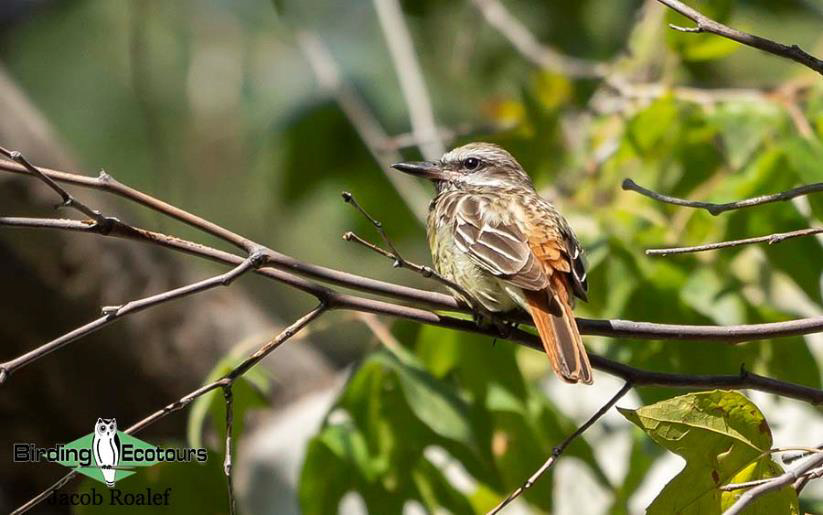
We headed back to Green Valley for lunch and a siesta before meeting again for some evening birding. We headed south to Santa Gertrudis Lane. This little area was hopping with great bird activity (and mosquitoes). Despite the biting insects around us, we had a fantastic time here, scoring species like Grey Hawk , Black Phoebe , Tropical Kingbird , Lucy’s Warbler , Summer and Western Tanagers , Indigo Bunting , Bullock’s Oriole and the regional special species Thick-billed Kingbird . It was a great way to close out an amazing day of birding.
Day 5, 18 th August 2022. Through Patagonia and over to Sierra Vista
Leaving the Santa Rita Mountains behind, we headed off to the Huachuca Mountains. We went back to Canoa Ranch for our first stop, to give this location a shot in the morning before the temperatures began to soar. The birding was better and we observed Great Blue Heron , Pyrrhuloxia , Cassin’s Kingbird , Vermillion Flycatcher and American Kestrel .
From here we continued on our way to Patagonia with a quick drive-through stop at Patagonia Lake. We noted Black Vulture , Mexican Duck and Say’s Phoebe . Next up was the famous Patagonia roadside rest area. There was a small group of White-throated Swifts circling overhead to greet us as we disembarked from the van and headed across to the small trail. Along the trail we managed to find our target species, a nesting Rose-throated Becard . Unfortunately, we had to maintain distance as the female was frequently visiting the nest, her movements so fast that she made it near-impossible to catch a clear view. We gave it a while, hoping to catch a better glimpse, which a few of us managed, before we moved on and headed for lunch.
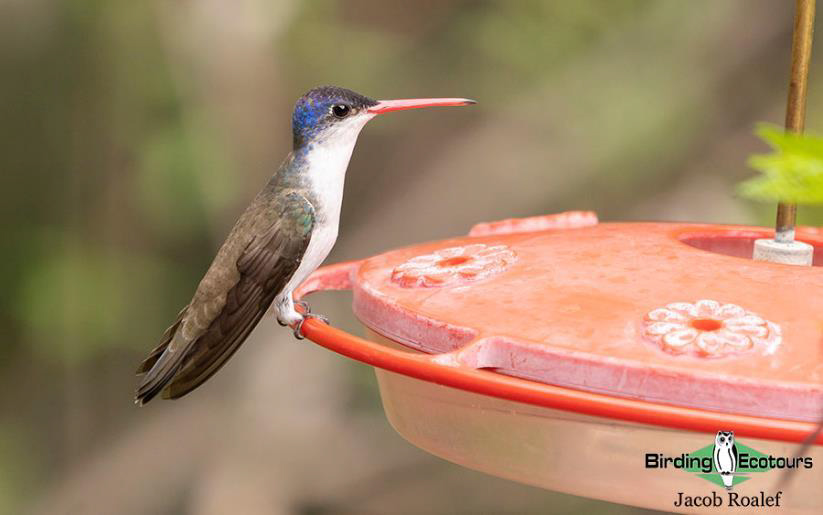
After lunch we visited the peaceful Paton Center for Hummingbirds . There was lots of bird activity here with the star of the yard, the Violet-crowned Hummingbird , making frequent appearances. Amazingly a Berylline Hummingbird dropped into the feeders three times, making it the second one in a single trip for us!
A few of us also managed views of the rare Ruddy Ground-Dove which had been visiting the yard on and off. In addition to these rarer species, we also saw Yellow-breasted Chat , Yellow-billed Cuckoo , Anna’s Hummingbird , Inca Dove , Green Heron and Northern Cardinal .
A quick cruise through the nearby neighborhood had us finding a Mississippi Kite . A pair were known to recently have a nest in this area, so it was great to catch up with one of these magnificent birds. We finally made it to the Huachuca Mountains and our first stop was the Ash Canyon B&B feeders. Possibly one of the most peaceful areas to bird, the yard was highlighted by Lucifer , Costa’s , Calliope and Rufous Hummingbirds , Ladder-backed Woodpecker and Black-headed Grosbeak . Another quick drive through a neighborhood had us enjoying some Scaled Quails in addition to many Gambel’s Quails . We finally settled down for a delicious Italian dinner after a top-notch day of birding.
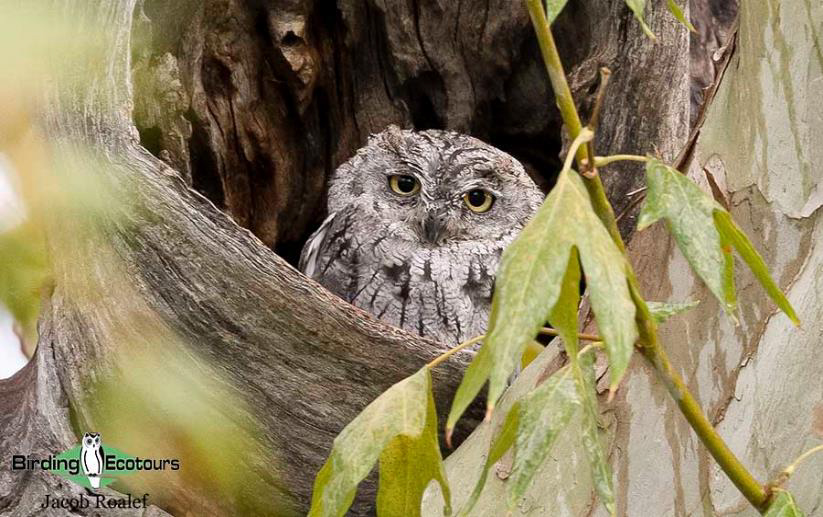
Day 6, 19 th August 2022. Carr and Miller Canyons
After breakfast we headed up the rocky and bumpy switchbacks which led into Carr Canyon. The cooler air at this higher altitude was perfect for birding as we wandered the campsites throughout the morning. We came across several mixed flocks which included Cassin’s and Plumbeous Vireos , Grace’s , Black-throated Grey , Hermit and Red-faced Warblers , Brown Creeper , Northern Flicker and White-breasted Nuthatch .
We circled around for a few hours before finally spotting the top target of this site, the Buff-breasted Flycatcher ! This little bird finally cooperated and gave us all a nice view. On our way back down the canyon, we spotted several other new species including Woodhouse’s Scrub-Jay , Virginia’s Warbler and Eastern Bluebird .
After lunch and a much-needed siesta, we headed back out for a little more birding. Along the entrance road to Brown Canyon we managed to find an adorable Western Screech-Owl sticking out of a tree cavity, despite the light rain. We then headed off to the Beatty’s Guest Ranch for a little feeder watch as we kept a careful eye on the sky and the storms looming nearby. Rivoli’s , Anna’s , Black-chinned and Broad-billed Hummingbirds highlighted the feeders here and we eventually called it a day as the rain began creeping in.
Day 7, 20 th August 2022. Las Cienegas NCA and Whitewater Draw
The forecast for the day did not look promising so we routed the best we could to avoid storms and rain. Our first birding destination after breakfast was the grasslands of Las Cienegas National Conservation Area .
Right at the entrance we were greeted by singing Chihuahuan Meadowlarks (recently split from Eastern Meadowlark) and a Horned Lark perched along the wire fence. We drove through this massive area, scanning closer and listening for any activity, making stops whenever we spotted something. This area yielded some fantastic birds including Cassin’s , Botteri’s and Grasshopper Sparrows , Blue Grosbeak , Grey Flycatcher , Northern Harrier and Lark Bunting as well as a few sightings of Pronghorn .
Unfortunately, our progress was halted when we came across a stream rushing across the road. We had to turn around and go back to a different entrance to finish our birding and visit a colony of Black-tailed Prairie Dogs . Overall, it was a great morning and we managed to stay out of bad weather.
We headed towards the town of Tombstone for lunch and a little cowboy western scenery. After this we ventured out to Whitewater Draw, a body of water in the middle of desert habitat. We picked up tons of new species for the trip as we made a circle around the lake. Highlights included Eared Grebe , Ruddy Duck , Sora , Wilson’s Phalarope , Great Egret , Black and Forster’s Terns , Black Phoebe , American Yellow Warbler and Lazuli Bunting .
On our way out of the park we noticed a sign stating this was an owl roosting area and about 15 seconds later we were all enjoying views of a Great Horned Owl in the trees! Then a little further up we noticed a strange structure on a collapsed building, so we looked into the hole with our scope and there was the face of an American Barn Owl staring back at us. A five-minute whirlwind of unexpected owls. After this we headed back to Sierra Vista for dinner and to celebrate the day’s birding, where we managed to avoid the monsoons.
Day 8, 21 st August 2022. Stateline Road and the Chiricahua Mountains
We set off before sunrise, as we had some distance to travel and wanted to be birding in the desert before it got too hot. After a quick stop in Douglass for restrooms, we made it to Stateline Road where an unkindness of Chihuahuan Ravens were waiting for us, allowing us time to better study and properly ID them. We continued along this road, with New Mexico on our right and Arizona on our left. We logged species such as Cactus Wren , Lark Sparrow , Lark Bunting , Loggerhead Shrike and Blue Grosbeak for our New Mexico list.
We then left the desert behind and headed into Portal and the Chiricahua Mountains. First up were some feeders in town where we picked up our first Blue-throated Mountain Gem as well as Canyon Towhee , Ladder-backed Woodpecker and a covey of Gambel’s Quails . It had been raining overnight and into the morning so we decided to go to Paradise first and let the river crossings up the mountain reduce a little. Paradise was home of George Walker House , another fantastic feeder setup. We were greeted by the pleasant host and owner, who gave us a full breakdown of the yard whilst we watched the feeders. It wasn’t long before the rare White-eared Hummingbird made a visit at a far feeder. This yard was also the best location in southern Arizona for Juniper Titmouse and it did not disappoint, as two birds made multiple visits to the feeders.
It was time to head up the mountain towards Rustler Park at the top. As we got higher, we got into a nice flock of birds along the road, so we hopped out. It turned out to be one of the best flocks of the whole trip! It was loaded with birds including Townsend’s , Grace’s , Hermit and Red-faced Warblers , Brown Creeper , Bridled Titmouse and the true regional special Mexican Chickadee . Not much further up the road we spotted a lone Band-tailed Pigeon perched in the distance. It would take a few more encounters before we all managed a view, but we did in the end.
After a nice picnic, we did some birding at the Pinery Campground and Rustler Park. Nothing new was seen but we did see another Mexican Chickadee as well as Hermit Warbler , Spotted Towhee and Painted Redstart . It was raining off and on throughout our time up the mountain, but overall things were pleasant and ok for birding. On our way down we had perhaps the best sighting of the trip, a Montezuma Quail in the middle of the road! We watched as it slowly crossed and walked into the grass next to the road allowing us all to see. Incredible! After dinner a few of us went out for some night-time exploring where we managed to score a curious Striped Skunk in the road, but the birds were being quiet.
Day 9, 22 nd August 2022. Wilcox and back to Tucson
We headed back out to the desert along Stateline Road to look for new species. We came across our first Scott’s Oriole of the trip as well some other nice species like Bullock’s Oriole , Curve-billed Thrasher , Cassin’s Sparrow and Swainson’s Hawk . We then headed back to Portal and the feeders there.
The skies were clear and we had a few new sightings, like a Harris’s Antelope Squirrel . The real highlight had to be a juvenile Bronzed Cowbird following its ‘mom’ – a female Hooded Oriole – around as it was begging for food. After watching these birds eat, it was our turn for a delicious brunch. We loaded the van up and took off on our long trip back to Tucson. We stopped at the Pinery Campground again on our way out of the mountains and found a distant Great Horned Owl as well as our first House Wren of the trip.
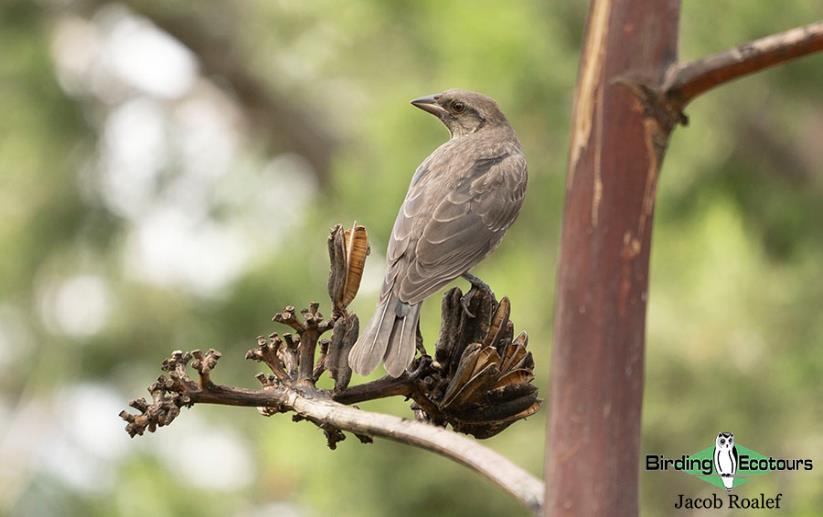
Continuing onwards, we made another stop at Lake Cochise in Wilcox. This location was loaded with waterbird species. We ticked off many species including Cinnamon and Green-winged Teals , American Avoc et, Black-necked Stilt , Least and Western Sandpipers , Long-billed Dowitcher , Red-necked Phalarope and White-faced Ibis .
After another hour or so of driving, we made it into the outskirts of Tucson where we stopped for dinner. Since most evenings had been a rain-out so far, we decided to have another try and headed off to Saguaro National Park East. Desert birding here was enjoyable and highlighted by Rufous-winged Sparrow and Gilded Flicker . Scenery to match and a breath-taking desert sunset and rainbow helped us see the day out. As the sun set, we spotted a huge Desert Tarantula crossing the road. We headed off to our hotel for our final night of the tour.
Day 10, 23 rd August 2022. Local Tucson birding and departure
After saying goodbyes, most of the participants were dropped off at the Tucson airport for their morning flights home. Two participants, however, did not have to leave until the afternoon, so we decided to do a little local birding at Reid Park. Before leaving the hotel, we were greeted by a friendly Greater Roadrunner next to the van and a Vermillion Flycatcher on the nearby fence.
Reid Park hosted a tiny pond which held mostly domestic farm ducks, however, there were a few interesting species including two new ones for the trip, American Wigeon and Neotropic Cormorant . This was a great way to finish off a very successful tour of Southeast Arizona! All the participants were asked to list their top five favorite species of the trip and the winners were Montezuma Quail , Elegant Trogon , Violet-crowned Hummingbird , Acorn Woodpecker and Red-faced Warbler .
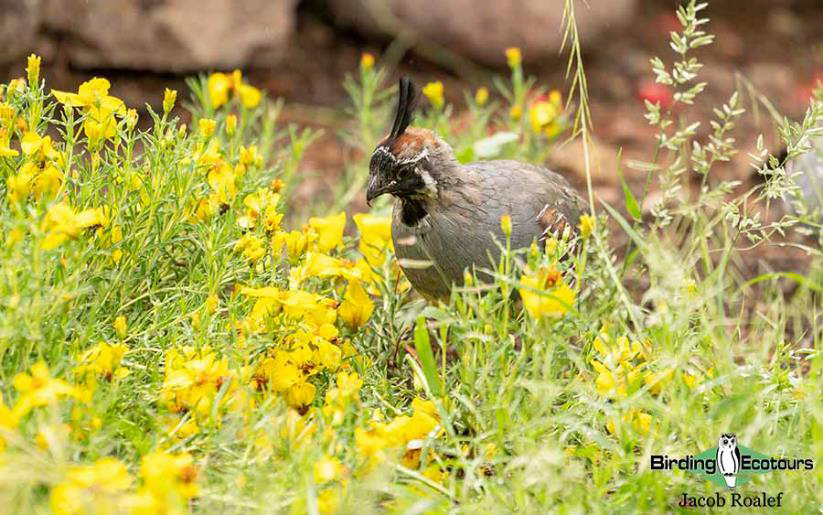
Bird List – Following IOC (12.2)
Birds ‘heard only’ are marked with (H) after the common name, all other species were seen. Species seen only on the pre-trip day of this trip are marked with (+) after the common name.
The following notation after species names is used to show conservation status following BirdLife International: CE = Critically Endangered, EN = Endangered, VU = Vulnerable, NT = Near Threatened.
Mammal List
Please see the downloadable PDF above with the full species lists included. This is a sample trip report. Please email us ( [email protected] ) for more trip reports from this destination.
GENERAL INFORMATION ARIZONA
Thanks for considering or booking our Arizona tour! With any luck we may soon be looking at Grey Hawk, Thick-billed Kingbird, Violet-crowned Hummingbird, and many more new and exciting species. In addition we may find one or two real local rarities, such as Yellow Grosbeak, Rufous-capped Warbler, or Roseate Spoonbill. On a prior tour we found Purple Gallinule! Hummingbirds almost always put on a great show, and we will make every possible attempt to see California Condor at the Grand Canyon.
Please inform us if any of your flights, times, or arrangements change. During your air travel to Tucson you will need to have your flight schedule and valid passport (or photo ID for US citizens) readily accessible. Increased security measures have been implemented at all airports to insure safer travel. If you have not flown in recent months you may wish to contact your travel agent, airline, or departure airport for current requirements. Arrive at the airport in plenty of time, be patient and cooperative, and be prepared for you and your luggage to be thoroughly checked. Smile and say “thank you” when everyone is finished.
TRIP INSURANCE
You should purchase travel insurance and trip cancellation insurance to protect your investment in case of injury or illness to you or your family prior to or during the tour. One supplier of this coverage that we suggest is Allianz Travel Insurance, The World Access Building, 2805 North Parham Road, Richmond, VA 23294, USA. Their toll-free phone numbers are 1-866-884-3556, 1-855-284-0331, and 1-800-284-8300 .You can apply by phone or, for US residents, via the Internet here .
IDENTIFICATION
We will not cross the border into Mexico during the tour, but we may pass through one or more border patrol checkpoints within the US. Please bring proof of citizenship if you are not a US citizen. A passport is always acceptable.
WALKING AND CONDITIONS
There is a moderate amount of walking each day of the tour. These walks are not fast-paced and for the most part not terribly strenuous, although they may be a bit hilly and rocky. We try to do most of our walking early in the day before it gets too warm. A possible walk up Miller Canyon to look for Spotted Owl is one of the more strenuous walks, even though it is only about a two-mile round trip. We may also go into Florida Canyon and California Gulch. We will take our time and do a lot of birding along the way. These walks are always optional, but are planned to provide you with the best possible birding opportunities. We will do our best to make another arrangement if you do not wish to join a particular walk. A good regime of exercising and walking from now until the tour begins will help make things easier and more enjoyable for you on the tour.
You can expect temperatures to range from 60 ° F (15 °C) to the low 90 ºF (33 °C) for much of the tour. There may be some cooler temperatures early and late in the day, especially in the mountains. On the other hand there may be a few days that are a bit warmer. We do our best to stay out of the really hot areas at midday and spend our time in the shady, cooler mountains and canyons. There is a daily chance of some desirable rain, so a raincoat can be handy and double as a jacket on a chilly evening when looking for Elf Owl or Common Poorwill. A little rain will cool the temperatures considerably and make the birds more active. A small umbrella can be very handy to keep you and your binoculars dry. It is always best to have your raingear in the van, just in case.
The step into our Ford Transit 12-passenger van is approximately 14 inches (35 centimeters) high, not much higher than on an average van. Please let us know if a small step stool would be useful for you.
We drink plenty of water every day. Please remember to bring a personal water bottle with you. There will be gallon jugs of water in the van from which to fill your personal bottle. Please let us know if you have any other favorite drinks, such as sodas or juice. Your guide will buy these at the grocery store and then have them in a cooler in the van. We need to know your exact preferences, especially caffeinated versus decaffeinated. There are probably ten different kinds of Coke, so please be as specific as possible. Upon your request your guide will purchase wine or beer for you, if you wish, for the end of the day. Again, please be specific with your request, and your guide will do his best to get just what you prefer. You can reimburse him for any wine or beer at a later time, as the cost of alcoholic drinks is not included in the tour fee.
PACKING LIST
Items that we suggest you bring, based upon years of experience in Arizona, include:
Loose, comfortable clothing.
Sweatshirt, sweater, or jacket
Raincoat and small umbrella. Your raincoat can also serve as a windbreaker.
Plastic bags to protect equipment and hold wet or dirty gear
A hat for sun protection and to reduce glare
Sunglasses will be useful.
Comfortable walking shoes and hiking boots. If you bring new ones be certain to break them in before the tour. Open-toed shoes (sandals, flip-flops) are okay around the lodge or going to dinner, but not while birding.
Sunscreen and insect repellent. Some people add a long-sleeved shirt for extra protection.
Hand sanitizer
Alarm clock and flashlight, with extra batteries for both. Each person should have a flashlight.
Binoculars are a necessity. The better the quality and condition of your binoculars, the more you will enjoy the birds and wildlife that you observe.
The guide will have a high-quality spotting scope to share with the group. If you have a scope and are willing to bring it, please let us know. We would like to have at least one additional scope if possible.
Camera and chargers
Personal water bottle, so that you can carry water with you during our walks. This is not optional; it is an absolute necessity so that everyone remains healthy and hydrated. There will be gallon jugs of water in the van for you to fill your personal bottle.
You may want to bring a few of your favorite snacks. There will be fruit, crackers, cookies, and a variety of drinks in the van.
Daypack or fanny pack to carry personal items during our walks
Health insurance card
Any prescription medicines you will need for the length of the tour, which you should pack in your carry-on. Aspirin, hydrocortisone cream, and antibiotic cream may be useful. There will be a basic first aid kit in the van.
Tweezers can be extremely useful to remove an unwanted cactus spine. Put them in your checked luggage, not in your carry-on because they would be confiscated at the security gate.
Helpful field guides include National Geographic , Robbins , or Peterson’s Western Guide . Many people use the Sibley or Kaufman field guide. Identification apps on your phone are becoming increasingly popular and useful.
Mammal, reptile, wildflower, cactus, and other nature guides are always helpful.
Airline schedule, passport (or photo ID if you are a US citizen)
When you pack your suitcase keep in mind that there is no guarantee that it will arrive in Tucson when you do. Probably it will, usually it does, but it may not. Thus your carry-on luggage is very important. Pack in your carry-on everything that you absolutely must have for the first few days, including a change of clothes, binoculars, all medications for the entire tour, airline schedule, passport or photo ID, money, and other essential items. Either wear comfortable hiking shoes or put a pair in your carry-on. Open-toed shoes are not advised for birding. Sandals and cacti do not mix! Items such as scissors, nail clippers, tweezers, tools, anything sharp, or anything that could be construed as a weapon should be in your checked luggage, not in your carry-on.
Two small bags are much easier to handle when loading the van as opposed to one large one. You can do laundry at several of our motels. So if you want to pack light plan on enough clothes for five to six days and do a load of laundry along the way. You may want to bring a small container of laundry detergent.

Download General Information Arizona
‘The Southeast Arizona tour is in the perfect area to see the maximum number of species and rarities. This tour has the perfect guide, Jacob Roalef, who works diligently to make sure that each participant sees all the birds he finds. This tour has the perfect number of participants to have fun, share knowledge and get to know each other. I would highly recommend this tour!
Jacob was an outstanding guide and I can’t say enough good things about him!. First, he knew the birds and could identify them by ear and sight. He made sure that each of us saw the bird(s) he had heard, seen or scoped. He also provided information about field marks, habitat, behavior and other interesting facts about the birds. Additionally, he knew a lot about the environment and gave us good context for the area that our tour covered. He was very diligent in finding the “rarities,” and then persistent until we saw them. Jacob also was very perceptive about each individual on the tour and gave equal attention to each of us based on our skill level in birding and our personal quirks. He is fun and funny, patient and well-organized and a safe and good driver. I innocently asked if there had ever been a flat tire on ones of his tours and that jinxed us because we indeed had one at 7,800 feet after a rain. Jacob was cool, calm and collected and what could have been a disaster ended with hilarity and a Band-tailed Pigeon. He facilitated and contributed to the camaraderie and banter that our group shared. I hope to go on another tour that Jacob guides.’
All Rights Reserved, Birding Ecotours
Join our newsletter for exclusive discounts and great birding information!
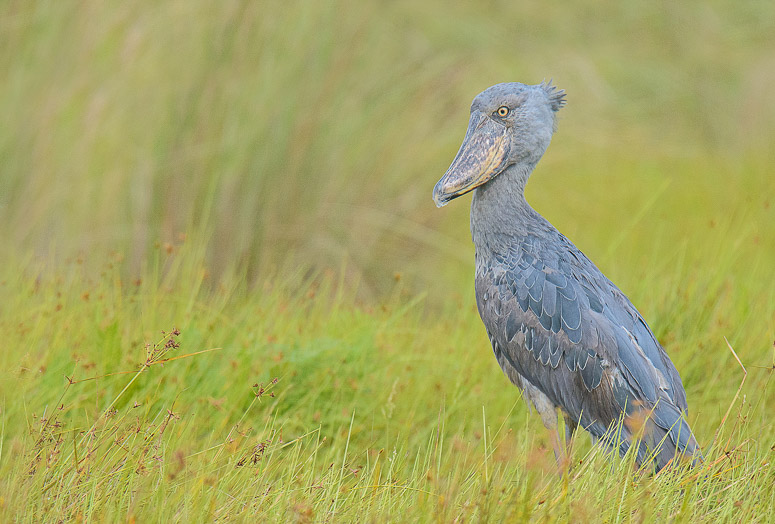

- DESTINATIONS
- SEARCH FOR TOURS or QUICK LINKS
- TOUR CALENDAR
- REPORTS & PHOTOS
- BIRDS OF A FEATHER SERIES
- PHOTO GALLERY ARCHIVE
- GUIDES & STAFF
- LATEST NEWS
- HEALTH PROTOCOLS
- CONSERVATION SUPPORT
- PRIVATE TOURS
- JOIN OUR MAILING LIST
- ABOUT FIELD GUIDES
- INFO & POLICIES
- TRAVEL RESOURCES
- GUIDING CAREERS

Arizona: Birding the Border
Mention Southeast Arizona to a birder, and images of gaudy hummingbirds, tanagers, lofty and cool pine-covered mountains rising out of the flat desert, trogons, rare nightbirds, refreshing stretches of lush riparian woodland, a rare stray or two from south of the border, and warblers with red faces will no doubt come to mind.
Southeast Arizona has a greater variety of breeding birds than any other area of comparable size within the US. Among the many possibilities are the fantastic Elegant Trogon, as many as ten or more of those gaudy hummingbirds, the very local Five-striped Sparrow, the unbelievable Montezuma Quail, stunning Painted Redstarts and Red-faced Warblers, eight or more species of owls, and the exquisite Varied Bunting.
This short tour visits the best available sites to give us a very good chance of finding virtually all of the regular Southeast Arizona specialties at a comfortable pace. Our loop begins and ends in Tucson with stops in the Santa Rita, Huachuca, and Chiricahua mountains, the Patagonia/Sonoita Creek and Nogales areas, California Gulch, and the San Pedro River. Our time is spent mostly in those cool and lofty mountains and refreshing riparian stretches (that's where the birds are!). Stop daydreaming and join us in May for some of the best birding in North America!
For a similar itinerary in the July/August monsoon season, see our ARIZONA'S SECOND SPRING tour .
Select the KEY INFO tab or click here for our itinerary plus space requests, status, fees, limits, and guides for any departure.
Client comment "I've done several trips with Field Guides and have been very satisfied with every trip. This was a fantastic trip. All aspects met or exceeded my expectations. A wonderful leader, interesting new locations, and great birds. John Coons was wonderful, both in his birding skills of course (and his knowledge of Arizona flora and fauna, among other things), but he is also a very personable leader, with fun stories and a good sense of humor. Office service was very good. Caroline Lewis helped me book an extra night at the Tucson hotel, and all my interactions with the Field Guides staff were professional and without any issues." G.J., ARIZONA: BIRDING THE BORDER 2019
Other Tours in USA
Itineraries • tour status • details • space requests.
- 2024 sample (PDF)
- 2025 (PDF expected Aug 2024)
DEPARTURES • We have 4 departures currently scheduled through 2026, with details including limits, guides, fees, and space available listed below.
May 9-18, 2025 Guided by: Chris Benesh Tour Manager: Caroline Lewis Tour Limit: 7 Status: Open - Space is still available on this tour, and we are accepting provisional bookings. No deposit is required until you receive the itinerary. Click below to book space. Tour Fee: Fee TBD / 2024=$4125 REQUEST SPACE OR MORE INFO
May 16-25, 2025 Guided by: Micah Riegner Tour Manager: Caroline Lewis Tour Limit: 7 Status: Open - Space is still available on this tour, and we are accepting provisional bookings. No deposit is required until you receive the itinerary. Click below to book space. Tour Fee: Fee TBD / 2024=$4125 REQUEST SPACE OR MORE INFO
May 8-17, 2026 Guide: TBA Tour Manager: TBA Tour Limit: 7 Status: Open - Space is still available on this tour, and we are accepting provisional bookings. No deposit is required until you receive the itinerary. Click below to book space. Tour Fee: Fee TBD / 2024=$4125 REQUEST SPACE OR MORE INFO
May 15-24, 2026 Guide: TBA Tour Manager: TBA Tour Limit: 7 Status: Open - Space is still available on this tour, and we are accepting provisional bookings. No deposit is required until you receive the itinerary. Click below to book space. Tour Fee: Fee TBD / 2024=$4125 REQUEST SPACE OR MORE INFO
Enjoy looking through the 8 most recent Field Guides triplists for this tour linked below!
- 2023 (May departure guided by Micah Riegner)
- 2023 (May departure guided by Chris Benesh)
- 2022 (May departure guided by Chris Benesh)
- 2022 (May departure guided by John Coons)
- 2021 (May departure guided by Dave Stejskal)
- 2021 (May departure guided by Chris Benesh)
- 2021 (May departure guided by John Coons)
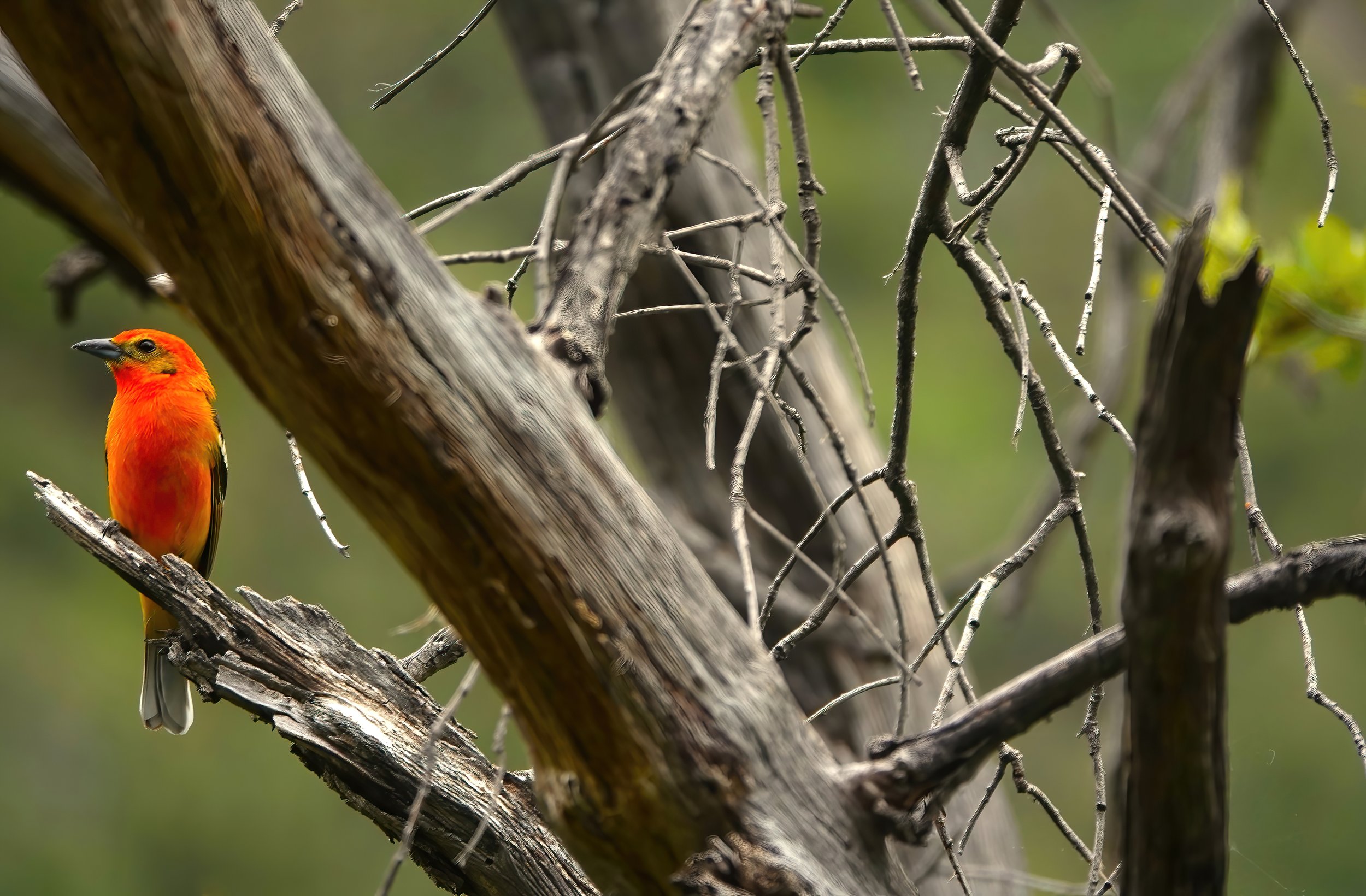
Southeastern Arizona Bird Tours
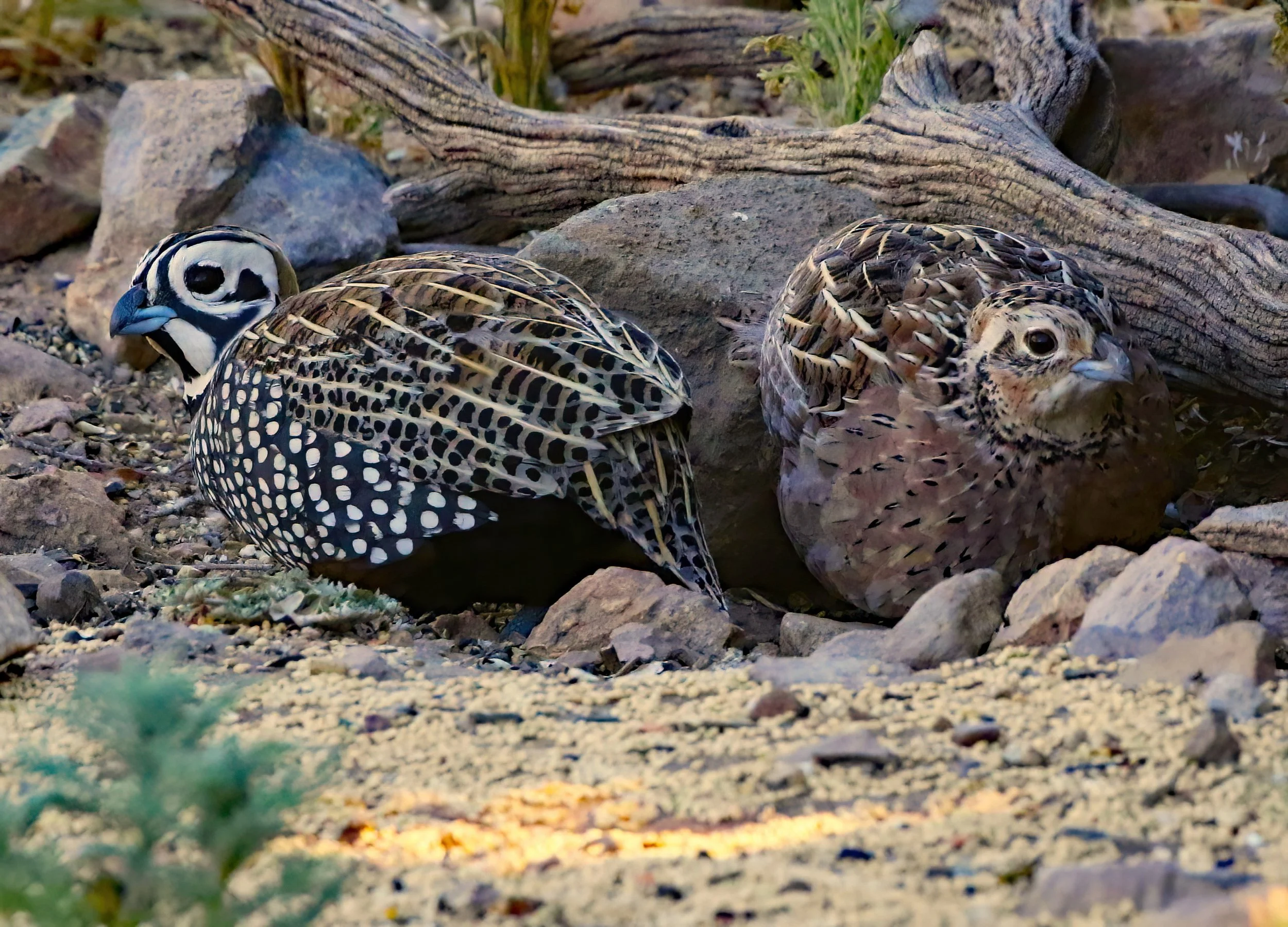
Amazing Birds!
Southeastern Arizona is home to the stunning Elegant Trogon, cryptic Montezuma Quail, and the endearing Bridled Titmouse. Our tours offer good opportunities to see many of these and more.
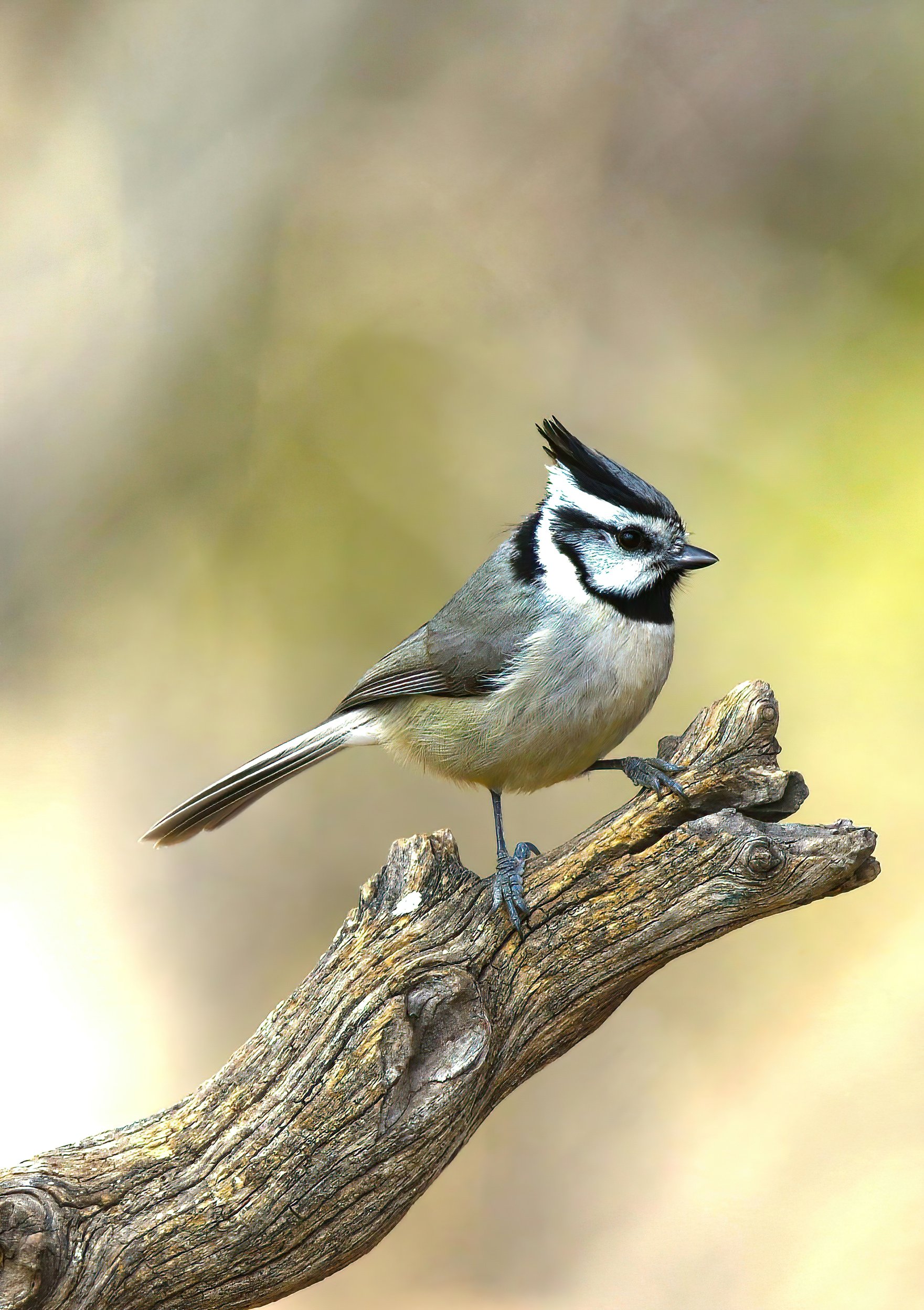
Bridled Titmouse
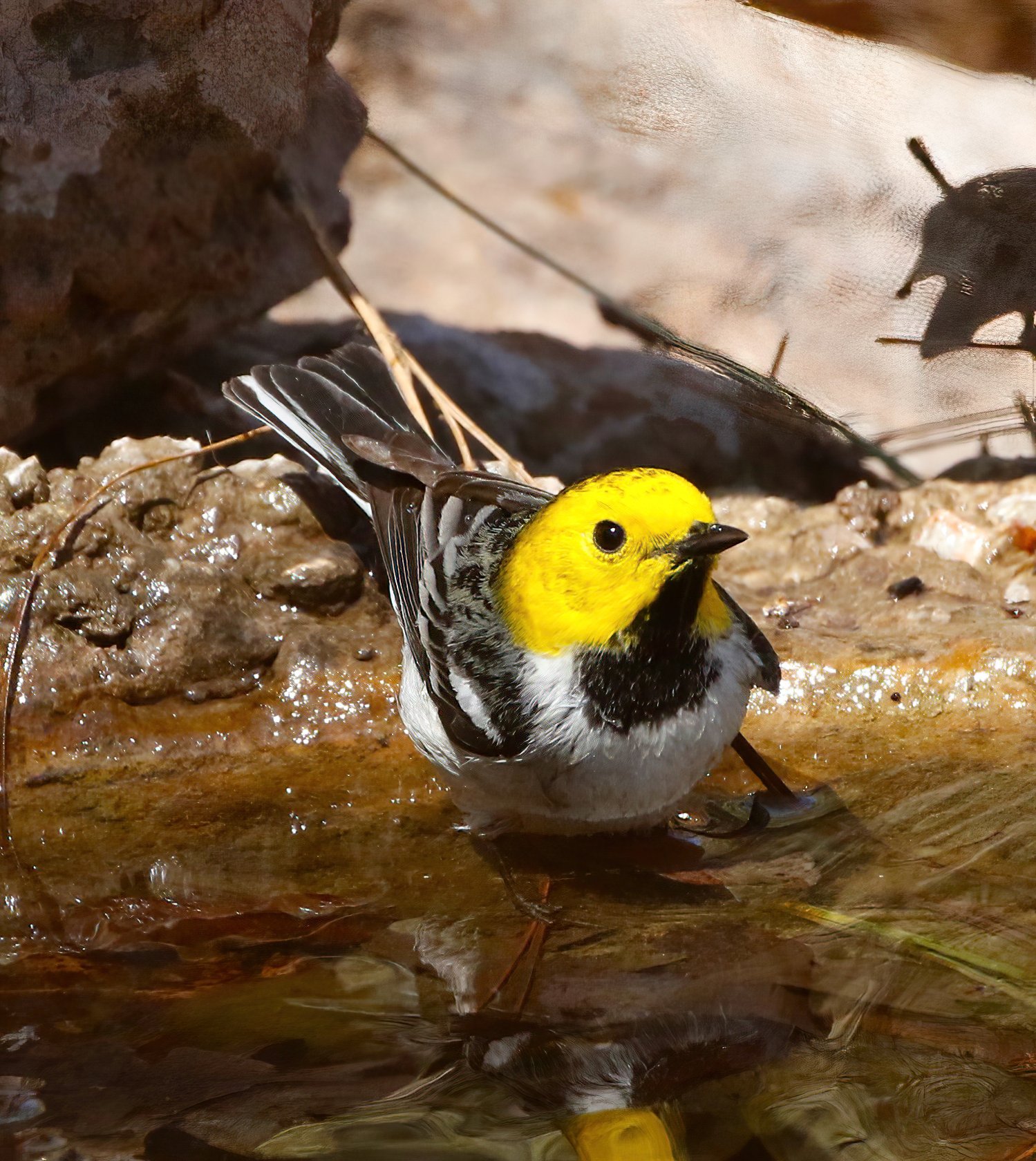
Hermit Warbler
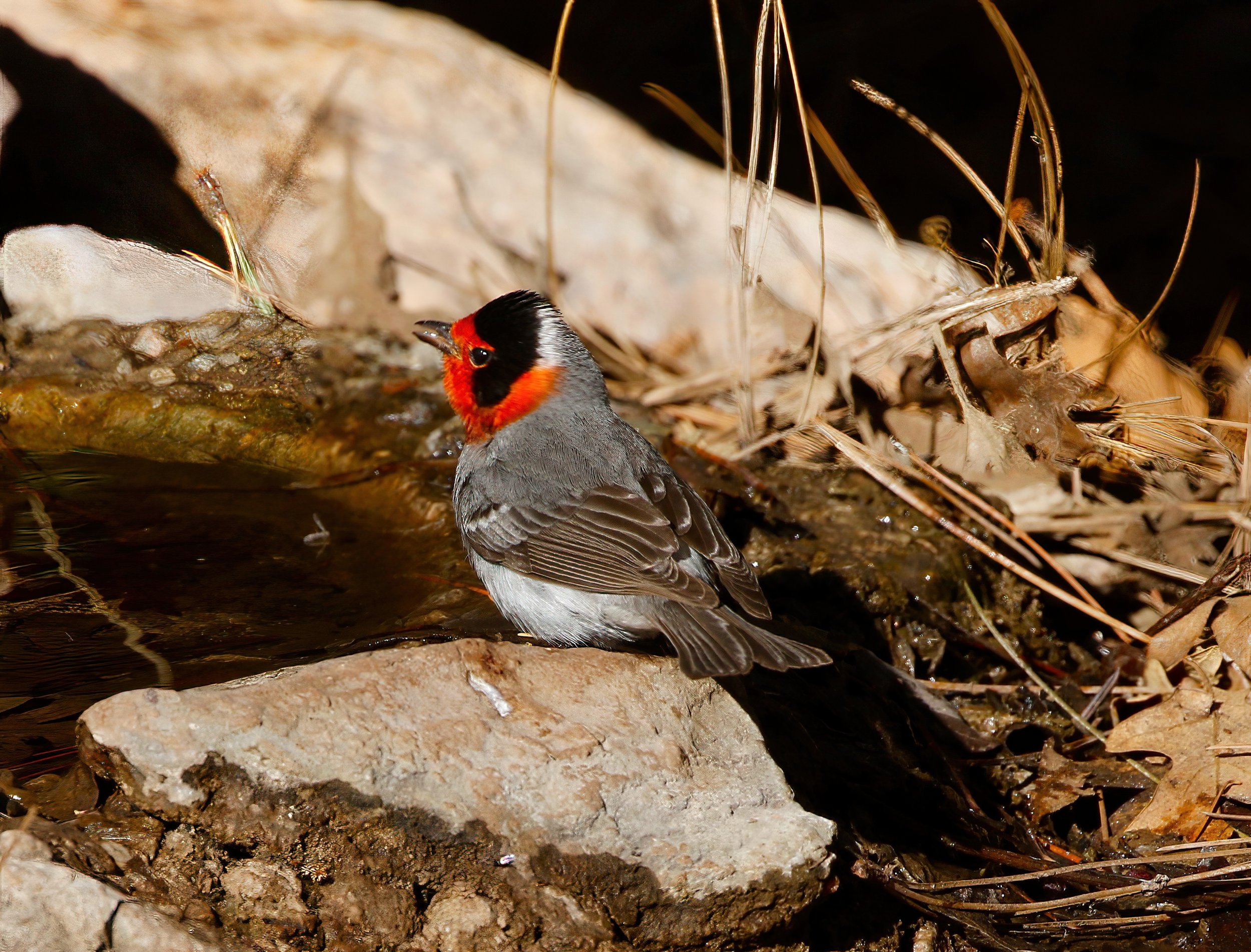
Red-faced Warbler
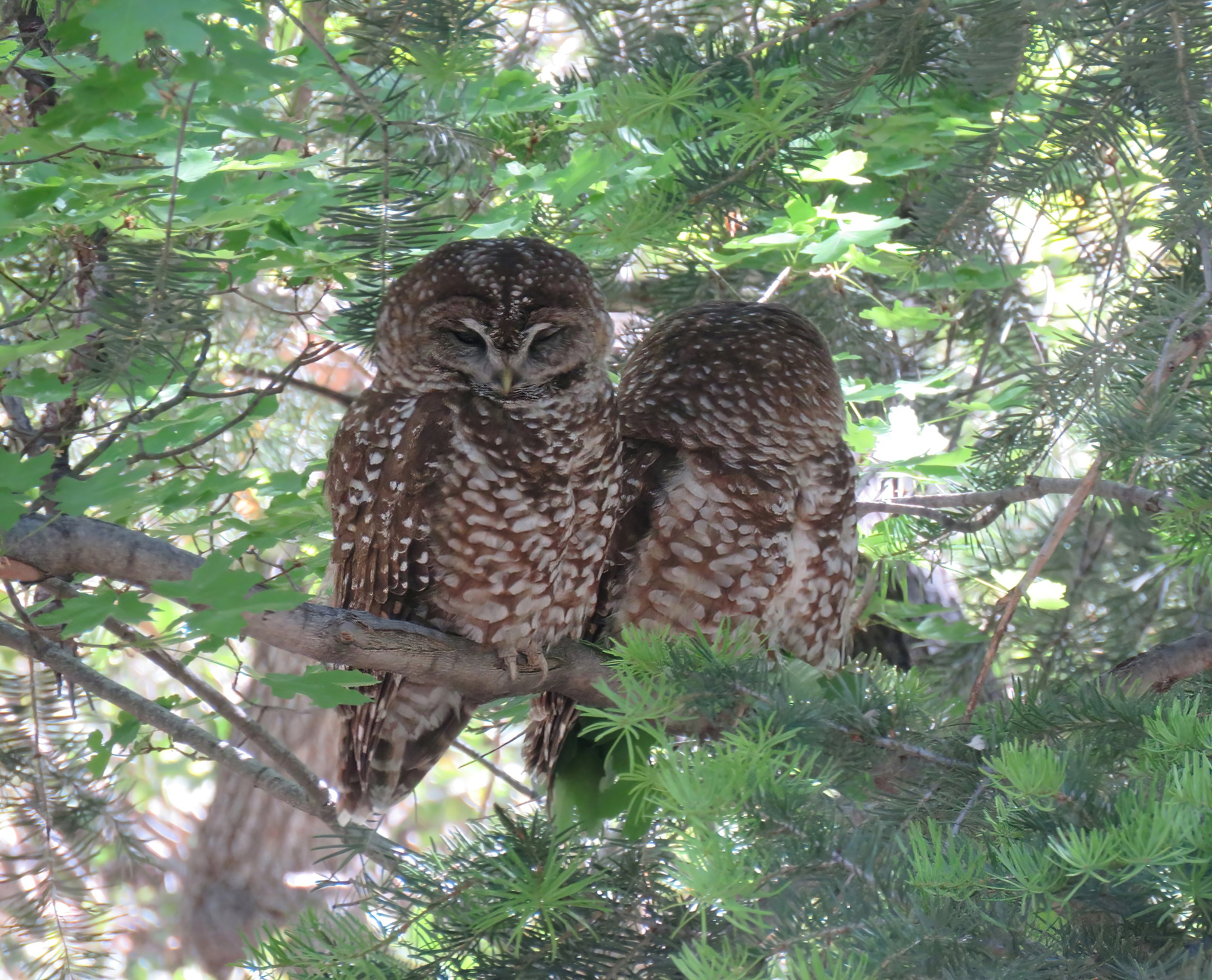
Spotted Owl
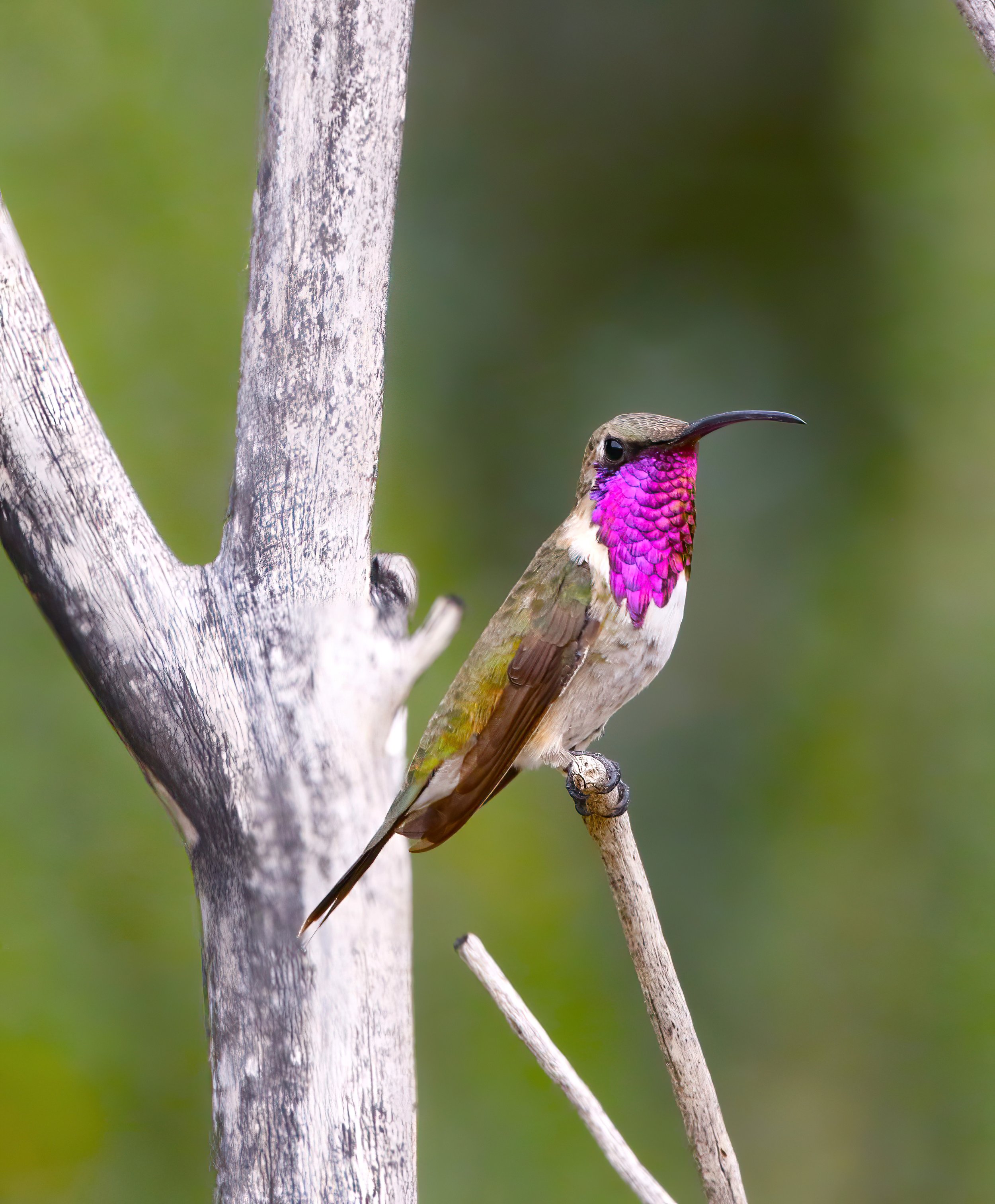
Lucifer Hummingbird
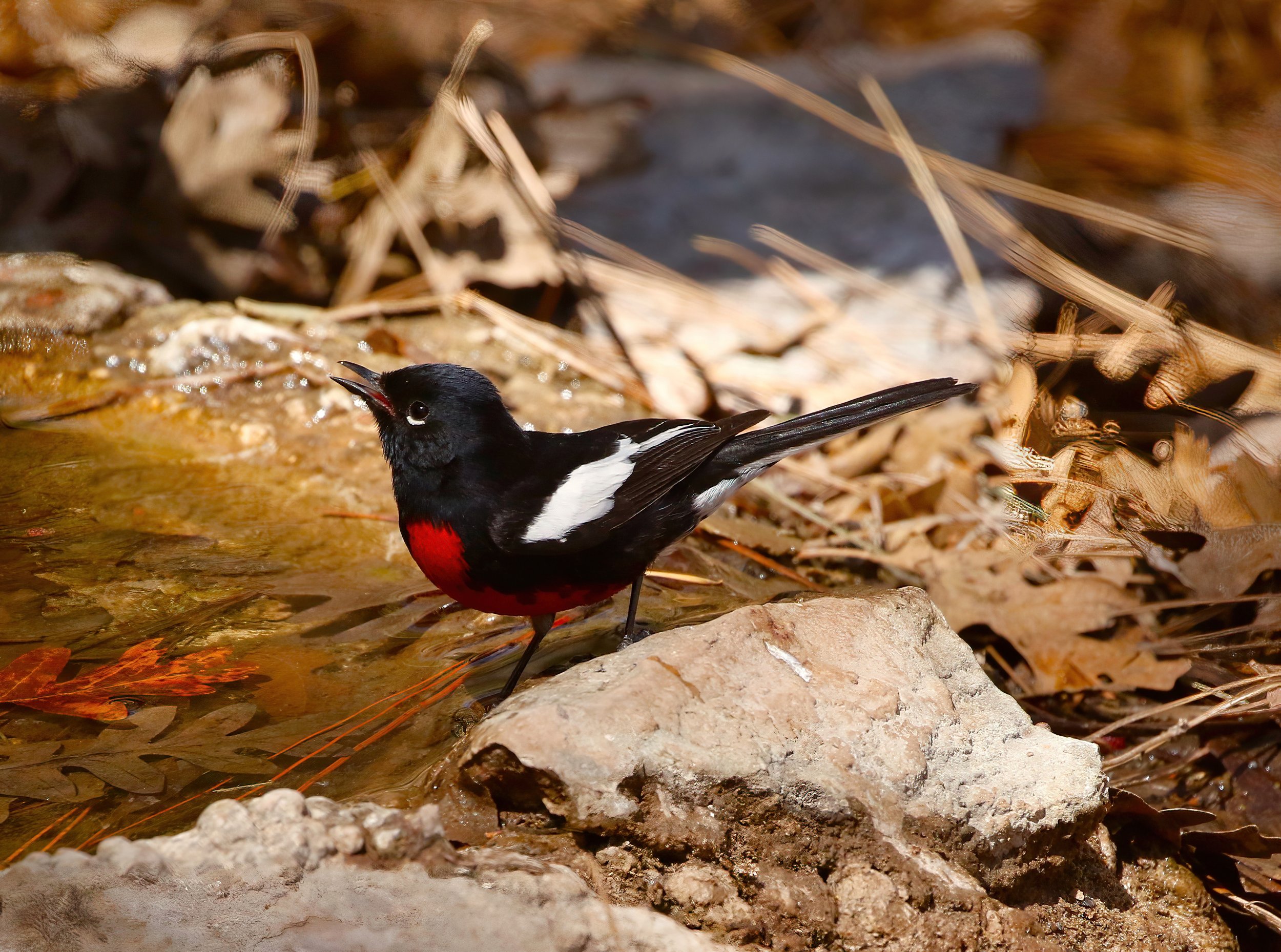
Painted Redstart
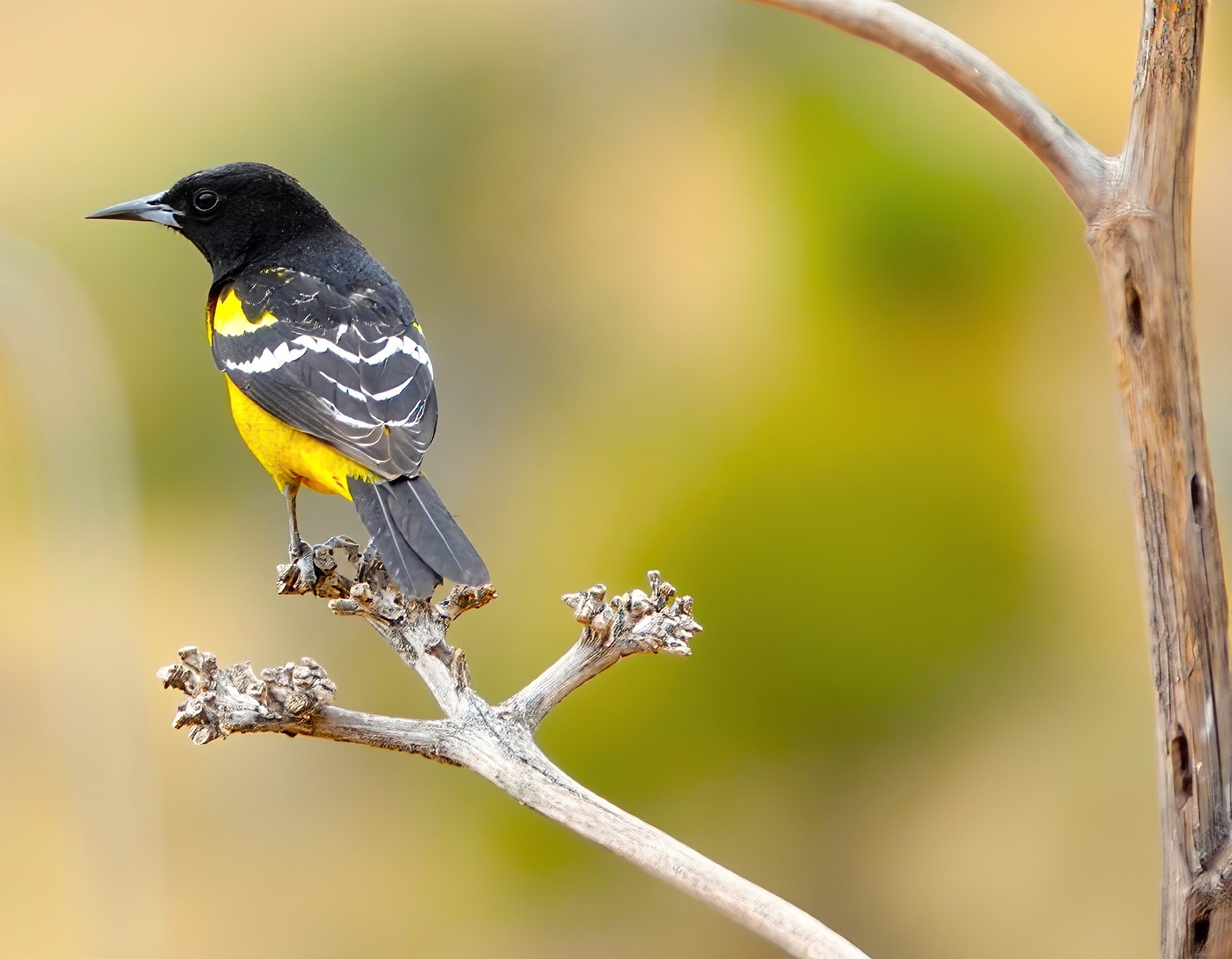
Book A Tour!
517-490-5315
Please call or email for availability and pricing.
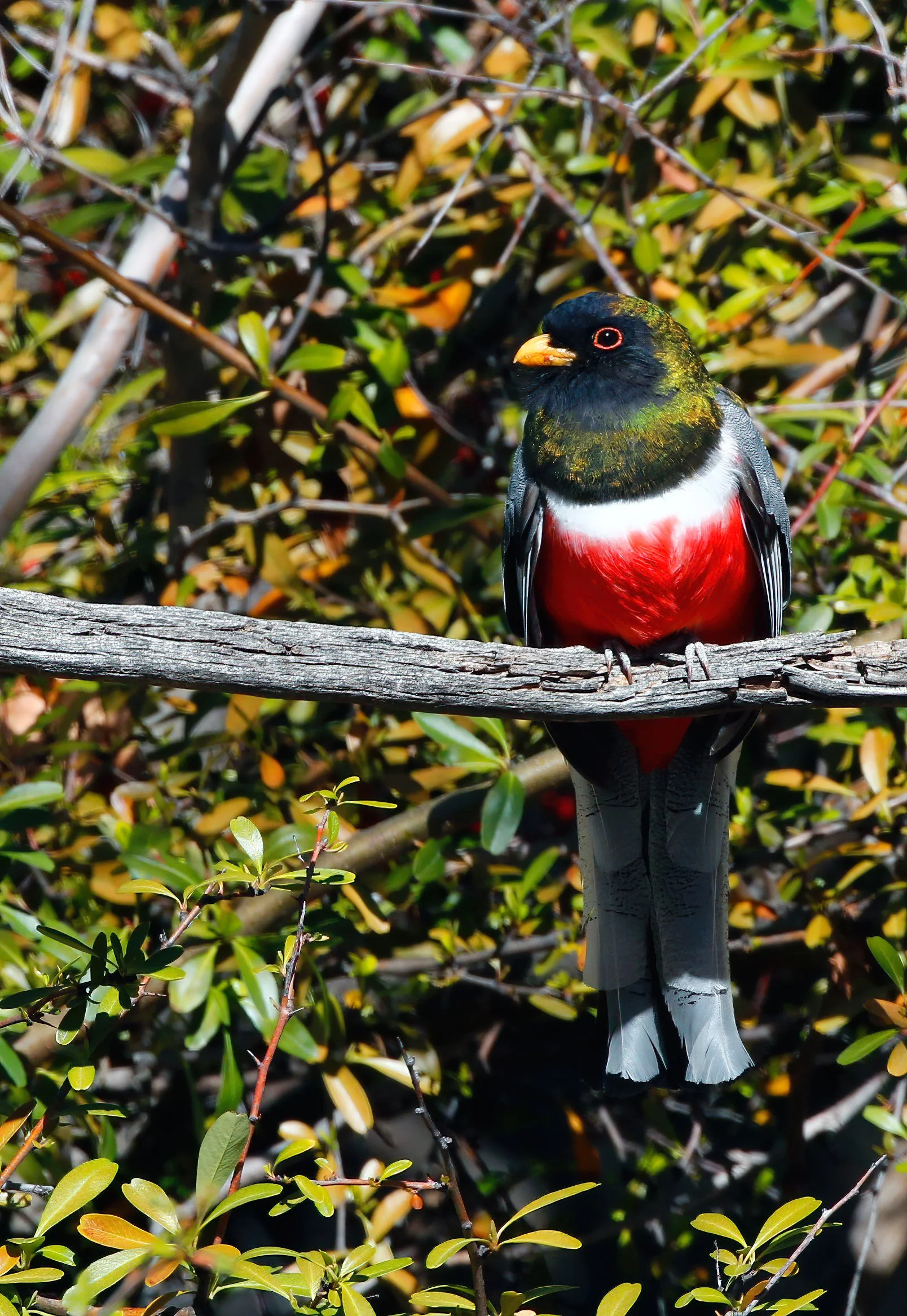
Birding Central
Don’t miss the fun! Book your tour today to explore the internationally famous sky islands of Southeastern Arizona.
“ Look deep into nature, and then you will understand everything better ”

Guest Rooms

Our Arizona bed and breakfast’s modern territorial hacienda is designed to evoke the traditional architecture of Spain and Mexico. Mexican hardwood furnishings with hand carved embellishments add an elegant touch to the setting.

Casa de San Pedro is centrally located, permitting easy day trips to other birding hotspots such as Madera Canyon, Patagonia, Empire Cienega, Garden Canyon, Miller Canyon and Ramsey Canyon.
Southeastern Arizona Bird Observatory at the Casa!

HOW YOU CAN HELP
Visit the SABO website to make donations that will help to continue the hard work that make this incredible nature site possible.
Back to Top

Bird Guides in SE Arizona
- Birding 101—books, binoculars, the basics
- Birding 102—calls and behaviors
- Birding 103—families and habitats
- Birding by Ear
- Beyond Color and Shape
- Hummingbirds
- Birding journaling
- Woodpeckers and wrens
- Flycatchers
- Eggs and nests
- Ducks/Not ducks
- Feathers and fluff
- Desert Dozen
- Backyard Birding
Casa de San Pedro Bed and Breakfast 8933 S. Yell Lane Hereford, AZ 85615, USA (520) 366-1300, Toll Free: (888) 257-2050 EMAIL: [email protected]
A Naturalist Haven!
Here you can view 355 species of birds and hundreds of butterflies. Experts agree Casa de San Pedro is one of the most romantic Arizona getaways and the most upscale Southern Arizona Bed and Breakfast. Naturalists, bird watchers, history buffs and environmentalists herald the inn as a world-class accommodation with a heart. One seasoned travel writer exclaimed that the Casa is "90 miles from Tucson, but only inches from Heaven."
- Jake Mohlmann
- John Yerger
- Keith Kamper
- Testimonials
- Rates & Policies
- When to Visit
- Where to Stay
- Covid-19 Policy
- Featured In
Southeast Arizona: Day Trips
This region showcases a wide diversity of owls and other "night life!" (Photo: John Yerger)
Elegant Trogon is one of many sought-after species in the "Sky Islands" of southeast Arizona. (Photo: John Yerger)
The charismatic Hooded Oriole joins a colorful array of warblers, tanagers, orioles and hummingbirds annually in the scenic Southwest. (Photo: Jake Mohlmann)
It's more than just flashy colors...we encounter fascinating bird behavior on every trip! (Photo: Jake Mohlmann)
Many specialties (like this Five-striped Sparrow) can be found north of the Mexican border only in southeast Arizona. (Photo: Jake Mohlmann)
The Adventure Birding Company: professionally guided birding & nature tours
The Adventure Birding Company was established in 2006 to offer bird watching and nature tours year-round in Southeastern Arizona and to select destinations worldwide . Our goal is to make each outing an exciting or remarkable experience in its own way - the very definition of "adventure!"
The guides of the Adventure Birding Company are experienced, friendly and fun-loving birders. They know that it's not just about the birds – having a good time is what birding vacations are all about! They are also well-rounded individuals, always willing to share their knowledge of the area, whether flora and fauna, culture, history, or food & drink. Importantly, Adventure Birding Company is owned and operated by the guides themselves.
Finally, we take environmental stewardship seriously. In addition to supporting local conservation organizations, we are particularly proud that our headquarters is 100% solar-powered! To our knowledge, we are the first birding tour company to be powered solely by renewable energy – all of which is produced on-site.
For more information about our services, please explore this website or contact us at:
Phone: +1-877-BIRDERS [+1-877-247-3377]
**If you get our voice mail...we're probably out leading a trip!**
IMPORTANT BEFORE BOOKING: Please read our Covid-19 Policy . For the safety of our guides and our clients, all tours MUST adhere to this policy until further notice.
The Adventure Birding Company and its guides are fully insured and hold an official outfitter/guide permit for the Coronado National Forest.
We are proud to be an equal opportunity service provider.
Learn more about Adventure Birding.
Find a Tour
Hand-picked for your birding pleasure.
Leaf through our latest thoughts.
Get in Touch
Send us a telegram. Or a paper airplane note. (Digital versions accepted.)
© 2024 Adventure Birding Company

Melody's Birding Adventures
contact us: [email protected], 520-245-4085 , the warblers are here, so many birds, so little time.
_edited.jpg)
In order to see birds, it is necessary to become part of the silence." ~Robert Lynd
Whether you are a birdwatcher or a bird nut like me, come have a Southern Arizona Adventure!
Each adventure is designed as a unique and personalized birding experience, with a schedule and pace tailored to your needs, No fifteen passenger van to crawl in and out of, plus lots of little extras a big tour company cannot offer, at about the same cost.
A bit of musing here, not meant to ruffle feathers, but perhaps a time to reflect. As we enter into migration, we birders can get in a bit of a hurry. . . this is when we use the tapes, toot a lot and pish to get the little ones to show their beauty. As a note of inquiry. . . I wonder if by using these methods when they are looking for a place to settle down and breed, if we are moving them off prime real-estate because they believe another virile male has already settled in. Let's face it those tapes sound pretty good even to those of the breeding species .
We cater to people unable or unwilling to do the rigorous schedule of a tour group. Lunch can be provided upon request.
We now accept Visa, Mastercard, Discover and American Express.
stay safe and stay healthy!! Hugs to all, Melody
Summer 2024
We are settling in to summer. The breeders are all here. A Berylline Hummer is in Madera Canyon, Five-striped sparrows in Montosa. Box Canyon is coming up with several unexpected species. Good season. Numbers are still down, but perhaps they just haven't all made it yet. Still hopeful.

May the Great Birding God smile down upon you!!
May the Great Birding God and Goddess smile down upon you.
So Many Birds, So Little Time!
Give me a call at 520-245-4085 or e-mail Melody for more info. Outfitter/guide permittee of the Coronado National Forest
According to USDA discrimination policies, Melody's Birding Adventures is an equal opportunity provider of services.
503-714-3504
Learn about upcoming trips!
Success! Now check your email to confirm your subscription.

The Chiricahua Mountains

Chiricahua National Monument

The San Pedro River

Saguaro National Park

The Huachuca Mountains

Southeast Arizona
Birding and natural history across the sky islands.
Interested in this tour?
Southeast Arizona is one of the premier birding hotspots in the United States, and a true wonderland for any naturalist. The extreme southern latitude of the region and its diverse ecosystems give us the opportunity on this tour to see birds and wildlife more typical of Mexico… species you’ll find nowhere else in the US!
The small, isolated mountain ranges of Southeast Arizona—known as ‘Sky Islands’—are home to animals and plants from both the Rocky Mountains to the north and the Sierra Madre to the south. Surrounding these mountains are two incredible arid ecosystems: The Sonoran Desert and Chihuahuan Desert.
Special birds we’ll be seeking on this tour include Elegant Trogon, Magnificent Hummingbird, Greater Roadrunner, Mexican Jay, Gila and Arizona Woodpeckers, Montezuma Quail, Harris’s Hawk, Red-faced Warbler, and Northern Jacana. And it’s possible to see more than a dozen hummingbird species here! Non-avian creatures we’ll be on the lookout for include the White-nosed Coatimundi, Gila Monster, Black-tailed Jackrabbit, and pig-like Javelina.
The tour begins with an exploration of the Tucson area, including Saguaro National Park. Then we’ll head south to Sierra Vista and the Huachuca Mountains, where we’ll really dive into what southeast Arizona birding is known for. We’ll spend time in both wild places and at bird feeding stations in the Huachucas. We’ll also search for riparian birds along the San Pedro River.
Next, we head to the Chiricahua Mountains to continue exploring quintessential southeast Arizona. In the forested canyons here, we’ll search for trogons, warblers, flycatchers, woodpeckers, and much more. We may have the opportunity to do some owling at night along the creeks. Heading further into the mountains, we’ll seek numerous high-altitude birds in this ‘Sky Island,’ such as Yellow-eyed Junco, Mexican Chickadee, and Red Crossbill.
There’s something magical about Southeast Arizona… This meeting place of the mountains and deserts has endless natural wonders for us to explore. We hope you join us!
Tour Highlights
experience the famous 'sky islands,' a region that attracts scientists and naturalists from around the world because of its wealth of biodiversity., go birding in deserts, canyons, and mountain forests to find regional specialties like elegant trogon, sulphur-bellied flycatcher, painted redstart, and gray hawk., get up close and personal with beautiful hummingbirds. southeast arizona is home to more hummingbird species than anywhere else in the us, visit saguaro national park, to experience its beautiful desert environment, and see countless examples of the park's namesake cactus up close., itinerary at a glance.
Welcome to Southeast Arizona! The tour begins with our arrival at Tucson International Airport. We’ll drive a short distance north to our lodging on the east side of town, within easy striking distance of Saguaro National Park.
Today we get an early start with a short drive to Saguaro National Park. After exploring the park, we’ll visit the Arizona-Sonoran Desert Museum, a world-renowned natural history museum and botanical garden.
Today is going to be a big bird-nature day. We’ll start early with another adventure in Saguaro NP to Rincon Creek, the only perennial creek within this popular park. From here, we’ll continue south to Madera Canyon, rated the third best birding destination in the United States. Making our way to Sierra Vista in the afternoon, we position ourselves for further adventure in Southeast Arizona.
Today will be all about the beauty and natural history of the Huachuca Mountains. These Mountains support an incredible number of populations of avian "species of conservation concern," some of which are found only in these "Sky Island" mountain ranges of southeastern Arizona. We’ll spend time in three canyons today: Brown, Ramsey and Ash. Ash Canyon bird Sanctuary is part of The Southeastern Arizona Bird Observatory. The busy feeding station at the Sanctuary has attracted 15 species of hummingbirds, including Lucifer, Broad-billed, and Rivoli’s Hummingbirds as well as Bridled Titmouse, Black-headed Grosbeak, Scott’s Oriole, Rufous-crowned Sparrow, Arizona Woodpecker, and occasionally Montezuma Quail.
This morning we explore the San Pedro river at multiple locations. Designated a Globally Important Bird Area by the American Bird Conservancy, this 56,000-acre preserve along the upper San Pedro River is home to over 100 species of breeding birds and provides invaluable habitat for over 250 species of migrant and wintering birds. After we get our fill along the river and near-by trails, we’ll continue east towards Cave Creek, stopping at Whitewater Draw Wildlife Area along the way.
Days 6 and 7
The largest of the “Sky Island” ranges in the region, the Chiricahua Mountains are home to animals and plants found nowhere else in the U.S. The town of Portal is the gateway to world-famous Cave Creek Canyon. We’ll spend two full 2 days (plus a morning!) seeking the specialty birds of the region. Exact destinations will be somewhat dependent upon recent sightings. However, areas we will likely visit include Cave Creek, Willow Tank, Rustler’s Park, and the Southwest Research station.
We’ll check out and spend the morning in the area birding a few more hotspots. After engaging a final time with the Chiricahuas, we will slowly make our way back to Tucson, stopping along the way for birding and leg stretching.
Today, after breakfast, we say our goodbyes and part company. Until next time!

FEE for TRIP: $3,645
DEPOSIT: $1,800
SINGLE SUPP.: $1,200
START DATE: May 8, 2024
DURATION: 9 days
GROUP SIZE: Up to 14
TRIP FOCUS: Birds and Wildlife
WHAT'S INCLUDED
- Double-occupancy lodging
- Ground transportation
- Breakfasts and lunches
- Excursions and park fees
- Guiding services
Get the brochure for this tour
The PDF brochure includes:
- A detailed itinerary
- Registration Info

David Jaffe has been guiding and teaching since 1991. His childhood interest in nature eventually led him to Evergreen State College, WA where he earned a B.S. in Environmental Studies and Geology. Later, he earned a M.S. in Applied Ecology from the University of Vermont.
David has led backcountry trips in Denali National Park, learned from students in Kentucky, and gained great insights while hitchhiking home from work in Yosemite National Park. He has experience as a naturalist in many of the lower 48 states and Baja California. David worked as a divemaster in Australia, Costa Rica, and India. He assisted with the establishment of a marine protected area off the coast of Madagascar and researched birds in Canada and South America. His understanding, love and enthusiasm about the natural world continues to grow.

Eryn Bordes first discovered the beauty of nature exploring loblolly pine forests of the southeastern US. Her creative nature led her to earn a degree in Art and later expressed itself in a love of exploring nature as a Botanist. She enjoyed over 20 years in California, exploring, teaching and guiding in Yosemite National Park. As a guide in Kenai Fjords National Park and the Tongass National Forest of Southeast Alaska she taught kayaking, natural history, and temperate rainforest ecology. She has worked as a Naturalist on expeditionary ships in Antarctica and southeast Alaska. She has instructed for Outward Bound school and has Wilderness Rights of Passage Training. Eryn has banded birds in Canada on the North Shore of Lake Superior, assisted with field research in the cloud forest of the Ecuadorian Amazon, and was amongst the first western visitors to a remote village in the Himalaya. Eryn has a strong passion for helping people develop curiosity, connection and comfort in Wild Places.

If you love nature travel, you’re in good hands with us
How we travel.
We gauge the success of a tour on how well it was enjoyed by all. Providing a rich, rewarding experience for each individual is our top priority. Our tours generally have an easy pace so that everyone gets to experience all a region has to offer. We create a friendly, non-competitive atmosphere that encourages tour participants to help each other in the field. Just as safety and comfort are cornerstones of our tours, so are humor and the simple joy of learning. The good cheer and camaraderie on our tours often inspire post-trip get-togethers and new, life-long friendships.
We’re crazy about birds, but they are only part of the story. Our tours offer a holistic experience by taking the time to appreciate all of the animals we encounter– including mammals, reptiles, amphibians, fish, and insects. They all interact and play vital roles in their ecosystems. We also take time on our tours to explore the plants and geology of the regions we visit. Fostering a deeper understanding of new cultures is one of our goals. On your tour, you’ll taste exotic cuisine and hear local music. You’ll have time to peruse the market, stroll through villages, and share stories with the people you meet.
Protecting the Wild
Ecotourism is a powerful tool for protecting the wild regions of the world. For example, parts of Uganda are now devoted to the conservation of the Mountain Gorilla. Though still endangered, ecotourism has pulled this species back from the precipice of extinction. We aim to make a positive conservation impact wherever we travel. We often use local guides and stay in small, locally-owned lodges. On every trip, we donate to a local conservation organization that works to protect a native species or ecosystem. When you travel with Wild Latitudes you are helping to protect wild places and the amazing species that call them home.
Get more info by email and access to special deals
What our tour participants are saying

Oaxaca Tour 2021 [Trip Report]
![birding tours southeast arizona Cape May Tour 2021 [Trip Report]](https://wildlatitudes.com/wp-content/uploads/Photo-by-Greers_1-900x506.jpg)
Cape May Tour 2021 [Trip Report]
![birding tours southeast arizona Nature Journal: Malheur Refuge in Oregon [Video]](https://wildlatitudes.com/wp-content/uploads/SE-OR_Thumbnail_1-900x506.jpg)
Nature Journal: Malheur Refuge in Oregon [Video]
- Upcoming Tours
- Trip Reports
- Terms and Conditions
- Privacy Policy
The latest from our blog
Get in touch with us.
503-714-3504 [email protected] Wild Latitudes, LLC PO Box 25115 Portland, OR 97298
Privacy Overview


Roadrunner Birding Tours
We hit the ground running!

Southeast Arizona
“the roadrunner tour”.
Cactus Wren
We will start and conclude in Tucson, the second largest city in Arizona, with travels to the Huachuca and Santa Rita mountains.
April 8th – 13th, 2025
Number of participants
Maximum of 6 participants, plus one guide.
Description
Our guided tour will visit some of southeast Arizona’s most sought after birding locations, from the the highest peak in the Santa Catalina mountains (Mount Lemmon) to Madera Canyon in the Coronado National Forest.
Arizona is filled with spectacular desert landscapes, in addition to a mix of habitats from the urban fringe to the high mountains. We will minimize our walking distances as best as possible to maximize our birding opportunities closer to the vehicle.
What species can be spotted?
Some of the species to be encountered on this tour are: Greater roadrunner (our personal favorite), Gilded flicker, Phainopepla, Cactus wren (state bird and largest wren in the United States), Curve-billed thrasher, Verdin, Pyrruloxia, an assortment of flycatchers, Western bluebird, Pygmy nuthatch, Painted Redstart, Red-faced warbler, Hepatic tanager, Red crossbill, Harris’ hawk and an abundance of hummingbirds (Broad-tailed, Anna’s, Broad-billed, Black-chinned are among the regular sightings), in addition to a chance to spot the magnificent Elegant trogon.
Day 1: Arrival into Tucson – Mount Lemmon – Traveling southbound
Our tour will commence after lunch, which allows for flights into Tucson in the morning where we can pick you up from the airport, or from your accommodation if you’ve already arrived.
We will go straight to the highest peak in the Santa Catalina mountains (Mount Lemmon) for some high-elevation birding with chances to spot Painted Redstart and Red-faced Warbler.
After birding at Mount Lemmon we will proceed to our hotel in the small town of Amada, south of Tucson. Any stops on the way will depend largely on what birds have been seen recently in that area and if time allows. Have your eyes and binoculars prepped – Greater Roadrunners hit the ground running, just like we do!
Night in Amado (D)
Day 2: Santa Rita Mountains
There are an assortment of canyons in the Santa Rita Mountains and arguably the most well-known is Madera Canyon, which will be a primary focus of our birding today. A mixture of habitats from juniper-oak woodlands to pine forests near a streambed give us a chance to find many species, including Elegant Trogon, Mexican Jay and an abundance of hummingbirds.
If we didn’t encounter a Greater Roadrunner previously, then we will scope out another canyon in the area, which has regular sightings. The Greater Roadrunner is very common throughout its range, but is quite uncommon in its movements. We are just as likely to stumble upon one as we are to find one specifically searching for it.
Night in Amado (B,L,D)
Day 3: Patagonia – Hummingbirds – Traveling eastward
After breakfast we will make a short drive to Patagonia where we will spend some time at the Tucson Audubon Society’s Paton Center for Hummingbirds, in particular to search for the Violet-crowned Hummingbird.
Patagonia Lake State Park provides some fantastic riparian habitat and a great trail to scan for more hummingbirds, doves, flycatchers, or even a Canyon Towhee.
After birding in Patagonia we will continue eastward for our next few nights in Hereford.
Casa de San Pedro (B,L,D)
Day 4: Ramsey Canyon
We will spend our morning birding The Nature Conservancy Preserve at Ramsey Canyon. It’s a very well-known birding location with opportunities to spot not only birds, but a variety of mammals and reptiles too! Oak woodlands provide the habitat for warblers and hummingbirds and hopefully Elegant Trogon if we missed it previously. Don’t forget to scan the skies for raptors.
In the afternoon we will focus our efforts alongside the San Pedro River. Phoebes, kingbirds, warblers, sparrows and hawks, among other species, will abound to keep us entertained.
Day 5: Ash and Carr Canyons
After breakfast we will drive to upper Carr Canyon to see the high pine forest. Here we may find Greater Pewee, Steller’s Jay, Hutton’s Vireo, Buff-breasted Flycatcher and a few warbler species, among others.
We will take our packed lunch to have a picnic while observing the bird feeders at Ash Canyon, which is a hotspot for woodpeckers and hummingbirds, in addition to Scott’s Oriole. Here we could see the Acorn, Arizona and Ladder-backed woodpeckers.
Day 6: Return to Tucson
We will return to Tucson by lunchtime. Guests can be dropped off at the airport if they have flights, or at accommodation in Tucson if staying longer in the Arizona desert.
There will be time in the morning to do birding before the drive back into Tucson.
This is a guide only – our tours can be modified to suit your needs.

Dates & Pricing
Custom tours only at this time
Trip Reports
Southeast Arizona: July-August 2021 (Click HERE for photo gallery)
Regional Tours
Coming soon!
Southeast Arizona: Second Spring
Southeast Arizona is one of the US’s top birding regions, with a long list of birds that can’t be found elsewhere in the country and stunning scenery. We will be visiting the desert and “sky island” mountain ranges during a time of year known as the second spring, when late summer rains green the desert.
Hummingbird diversity is at its peak and its an excellent time of year to find the many special birds of region, including Elegant Trogon, Red-faced Warbler, Arizona Woodpecker, and many others.
Itineraries will be updated with plenty of time before the next departure. Our itineraries usually show minimal changes between years, but some substantive updates can occur as birding access and information evolves. For any specific questions regarding these trips, please contact us.
SCROLL THROUGH OUR SOUTHEAST ARIZONA PHOTO GALLERY BELOW

Photo by Nathan Goldberg

Photo by Evelyn Ralston

Your Custom Text Here

SOUTHEAST ARIZONA
Southeastern arizona birding tour, dates : august 6-16, 2019 tour fee : $4,975 single/$4,340 double leaders: steve shunk plus add'l local guide questions: contact paradise birding owner steve shunk how to register: click the button below to view and download the tour itinerary and registration form ..
SPECIES LIST | PHOTOS | TOUR BLOG | PARADISE BIRDING TOUR FAQs
TOUR SUMMARY
Arizona in August?! You bet! For the magic of the monsoon season, we invite you to the “sky islands” of Southeastern Arizona, which peer down upon the Sonoran Desert floor with an air of majesty and wonder. From the saguaro forests below to the pine forests above, the birding in and around these desert oases is nothing short of awesome. Join us for our summer vacation in the desert southwest, as we experience some of the best birding on the continent. Our August itinerary places us in Southeast Arizona at the peak of monsoon season, when daily thundershowers fuel new growth in this parched environment, and breeding birds from Mexico’s Sierra Madre drift northward to feast among the “second spring” bloom. The highlight of the season is the abundance of hummingbirds—hundreds of individuals of up to 13 species—that dart between feeding stations and native blossoms throughout the region. But the hummers are only the beginning. After one experience in the Arizona monsoon, you will understand why we return again and again to the hot desert sun. -Your host and guide, Stephen Shunk
“ Thank you for a very special week of birding in southeastern Arizona. We had a great time and saw lots of birds. We appreciate all you did to make it memorable and we hope to see you on another trip. ”
“ What a fantastic trip when I actually have problems figuring out a trip bird! Could it be the iconic Montezuma Quail that enabled us to use some descriptive expletives. Perhaps it was the Plain-capped Starthroat that we had the satisfaction of adding to our ABA area trip list. Yet, the Elegant Trogons really put on a show for us as they danced around in the forest. Maybe a trip bird is one that you see everyday and never get tired of - for me that would be the Broad-billed Hummingbird. ”

Arizona Monsoon Madness
Closed - see our aug. 25 - sept. 1 departure.
August 11 - 18, 2024
- Full Itinerary
- Photo Gallery
Travel Details
- Trip Reports
- Know Before You Go
- Other Trips You May Like
Join our expert guides for a wildlife-rich journey as summer monsoon rains turn Southeastern Arizona’s mountains and deserts a surprisingly verdant green. During this “second spring,” witness up to 14 species of hummingbird, hear grassland sparrows singing on territory, and spot breeding birds of Mexican affinity just outside your door. Walk in cool, shaded canyons cloaked in oaks and mixed conifers. These are perfect for mid-day hikes; during the early mornings and evenings we explore desert and grassland terrain. This year we add a day and a third location to give you the full spectrum of species. Enjoy time at a few of our favorite local lodges: Cave Creek Ranch in Portal, just down the road from our home office and the delightful Casa de San Pedro in Hereford. From these lodges we explore cool, lush canyons of the Chiricahua, Huachuca, and Santa Rita Mountains in search of Elegant Trogon, Mexican Spotted Owl, Red-faced and other warblers, butterflies, dragonflies, and more. This three lodge route sets us up perfectly to explore the surrounding sky islands, grasslands, and local preserves. Discover secrets of the sky island’s biodiversity; we also find promise of hummingbirds galore at both public and private feeding stations. Naturalist Journeys, LLC is an official permittee of the Coronado National Forest, following Leave No Trace principles. We also abide by the ABA's Code of Ethics for birding.
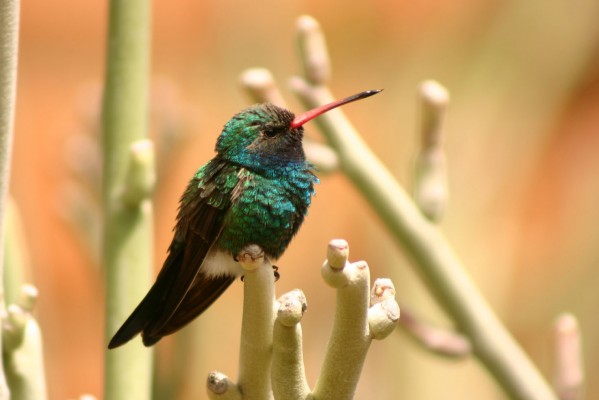
- “This is a trip every birder should take at some point, especially anyone interested in Hummingbirds. We saw 14 different species of hummingbird, with good enough views to get photos of each. Amazing! We saw many other different birds too, and I ended up with 29 "lifers", more than I ever expected. I loved everything about the trip. The scenery was spectacular, and the hotels we stayed in were great. Cave Creek Ranch in Portal was unique, nestled away in a canyon with wildlife roaming around the grounds. Casa San Pedro, a B & B in Hereford AZ was totally charming - an adobe dwelling surrounding a courtyard filled with beautiful plants and Hummingbird feeders. I highly recommend this trip and strongly suggest traveling with Naturalist Journeys. They're the best!” – Celia Gerry, 2023 Traveler
- “This is probably the best set of guides we have ever had on a birding trip. Their skills, knowledge of the species, and ability to locate and spot elusive birds in difficult conditions were remarkable. The two lodges were great choices. Casa de San Pedro speaks for itself; we had never been to Cave Creek Ranch and it was very good, with unequalled opportunity to see the blue mountain gem. We had been on this tour before, and I would like to do it again!” — Frank & Ann Holleman, 2023 Travelers
- “Beautiful tour of SE Arizona with lots of interesting birds. Wonderful and knowledgeable Guides. We believe that all target birds were found.” — Gary & Ann Carpenter, 2023 Travelers
Tour Highlights
- Start with two nights at Portal’s own Cave Creek Ranch, a perfect base to explore the Chiricahua Mountains
- Explore Cave Creek Canyon, one of the most scenic and biologically diverse places in the United States
- Look for Red-faced and Olive Warblers and Mexican Chickadee in high sky island forests during Arizona’s “second spring”
- Spend three nights at the gorgeous Casa de San Pedro—be sure to save room for their famous pie!
- Stroll along the San Pedro River and explore famous Carr and Ramsey Canyons
- Witness plentiful hummingbirds in Patagonia and Box, Florida, and Madera Canyons
- Look for Elegant Trogon, Five-striped Sparrow, Sulphur-bellied Flycatcher, and signature species of the region
- This trip is great for butterflies and mammals too—Coatimundi, Javelina, and Bobcat are all possible!
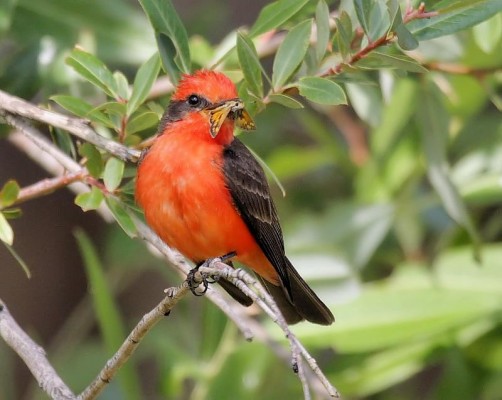
Trip Itinerary
Itineraries are guidelines; variations in itinerary may occur to account for weather, road conditions, closures, etc. and to maximize your experience.
Sun., Aug. 11 : Arrivals in Tucson | Willcox Twin Lake Ponds | Portal
Arrive in Tucson today, a vibrant city surrounded by mountain ranges that rise from the Sonoran Desert floor. Please plan to arrive by 1:00 PM. From our gathering point at Tucson International Airport (TUS), we head to one of the most beautiful areas of Southeast Arizona: colorful Cave Creek Canyon in the Chiricahua Mountains. Our route is scenic; passing through rock spires at Texas Canyon we take in views of distant sky island mountain ranges in all directions. We make a couple of birding stops, one at a local wetland at Willcox. Formerly a glacial playa lake, today twin golf course ponds attract a host of shorebirds and ducks. American Avocet, White-faced Ibis, Black-crowned Night-Heron, Western and Eared Grebes, and various phalaropes and sandpipers are often present. Upon arrival in Portal, settle in to your picturesque cabins and cottages and enjoy a welcome dinner, as well as an overview of the week ahead. Accommodations at Cave Creek Ranch, Portal (D)
Mon., Aug. 12 : Cave Creek Canyon | South Fork | Grasslands | Portal | Optional Night Birding
Enjoy the dawn chorus in this magical realm as bird calls echo through the canyons. Dusky-capped and Brown-crested Flycatchers nest in the area, as do a host of interesting warblers such as Grace’s, Virginia’s, Lucy’s, Olive, and Red-faced. Woodhouse’s Scrub-Jay quickly makes their presence known in the lower grassland reaches, while the highly-social Mexican Jay holds its own amid the oaks. Cave Creek Canyon is one of the most biologically diverse places in the United States; here the ecosystems of the Rocky Mountains, the Sierra Madres, the Chihuahuan Desert, and the Sonoran Desert intricately combine. In the maze of volcanic rock pinnacles with crenellated walls of orange tuff, you see contrasts like yuccas standing above bracken ferns and Douglas Fir entwined with Arizona Sycamore. Several pairs of Elegant Trogon have nested in the canyon for many years; their ecological story is closely tied to neighboring Mexico and the Sierra Madres. While walking the cool and shaded paths of the canyon, we’re also likely to see Painted Redstart, Cordilleran Flycatcher, Acorn Woodpecker, and Arizona Woodpecker—just to name a few highlights! The village of Portal is a birder’s mecca, and this afternoon we walk the streets of this picturesque village, seeking out tanagers, orioles, and other species that use the verdant oasis. In the late afternoon we make a run out to the grasslands to look for a whole new mix of species. Bird along State Line Road where we look for grassland specialties such as Scaled Quail, several thrashers, and Greater Roadrunner, and we take a peek at what migrants abound at Willow Tank, a birding hotspot. En route back, we enjoy dinner at a local restaurant and indulge in fabulous views of the Chiricahuas. Those that wish can go home directly, or make a couple stops to try for some night birds that may be calling—as darkness falls, check out the amazing, star-filled skies. Accommodations at Cave Creek Ranch, Portal (B,L,D)
Tues., Aug. 13 : High Mountain Birding | San Pedro River | Casa de San Pedro
Check the ranch grounds today for resident Coatimundi and a herd of resident Javelina. After breakfast, we head to the top of the Chiricahuas on a dramatic mountain road from which we witness the epic drama of fires that roared through the Chiricahua and Huachuca Mountains in May and June of 2011. Between dramatic views of the peaks and surrounding desert, we find still lovely conifer forest home to a rich array of species not found at the lower elevations. Look for Red-faced and Olive Warblers, as well as Greater Pewee. Explore beautiful mountain streams, picnic in high mountain meadows, and enjoy the peaceful setting while you discover new birds, wildflowers, and mammals like Apache Fox Squirrel, Coue’s White-tailed Deer—even Black Bear is possible! We have found Arizona’s second spring to be a superlative time to visit the Chiricahuas, as flocks of warblers spend as much as two to three weeks in the mixed conifer habitat, fattening up ahead of migration. We have had multiple species bathing in pools of water along the quiet dirt road through the campgrounds, joined at times by Mexican Chickadee, a range restricted species to this area. We pass up and over the mountain, with a picnic lunch up in the pines. We make a stop at Pinery Canyon as we head down, a primo birding location. Crossing the Sulphur Springs Valley, we may pick up some grassland species. Tonight our lodgings are at the delightful Casa de San Pedro on the San Pedro River south of Sierra Vista. The Casa de San Pedro is a nationally acclaimed inn; they say it is 90 miles from Tucson and inches from heaven. We agree! We find it the ideal location for our group with meeting space, incredible hospitality, active bird feeders, a pond, and the San Pedro River right outside our door. From the Casa, we can explore cottonwoods that fringe the river, as well as surrounding grasslands and the nearby Huachuca Mountains, a magnet for hummingbird enthusiasts. You soon discover why so many guests return here again and again. Birds of interest here include Swainson’s and Gray Hawks, Black Phoebe, Cassin’s Kingbird, Abert’s Towhee, Summer Tanager, Blue Grosbeak, Bell’s Vireo, Lucy’s Warbler, Yellow-breasted Chat, and several species of grassland sparrows. Rarely, a Green Kingfisher is present along the river or at a nearby pond. Lesser Nighthawk fly by the lights of the car park each evening. After a full day of learning and exploring, we enjoy a catered dinner at the Casa. This is a treasure of a place to stay and one we know you will enjoy. Accommodations at the Casa de San Pedro (B,L,D)
Wed., Aug. 14 : Carr Canyon | Ash Canyon | Miller Canyon
After a delicious (some say outrageous!) breakfast at Casa de San Pedro, we head out to upper Carr Canyon, driving switchbacks up a mountain road to search for the birds of the high pine forest. Here we may find Steller’s Jay, Hairy Woodpecker, Greater Pewee, Buff-breasted Flycatcher (extremely local in the U.S.), Hutton’s Vireo, Black-throated Gray, Olive and Grace’s Warblers, Yellow-eyed Junco, and—with luck—a Northern Goshawk. Beautiful Ponderosa Pines dominate our trail, which is punctuated by exhibits about the silver mines run here over 100 years ago on a geologically dramatic cliff known as “The Reef.” We enjoy a picnic lunch near local feeders where we hope to see Lucifer Hummingbird, as well as more regular Anna’s, Black-chinned, and possibly migrant Rufous Hummingbirds. Acorn, Ladder-backed, and Arizona Woodpeckers, Mexican Jay, White-winged Dove, and up to three species of orioles (including Scott’s Oriole) are all expected at the feeders. We also stop at Ash Canyon for their marvelous feeders. Mid-afternoon, we either visit Miller Canyon, a dramatic canyon cutting far into the Huachuca Mountains, home to Mexican Spotted Owl and Red-faced Warbler among many other species. At Beatty’s Guest Ranch we enjoy extensive hummingbird feeders known to attract White-eared Hummingbird among the more common Broad-billed, Black-chinned, and Rivoli's Hummingbirds. Return “home” to freshen up. This evening’s dinner is at a favorite local restaurant. Accommodations at Casa de San Pedro, Hereford (B,L,D)
Thurs., Aug. 15 : Ramsey Canyon | San Pedro River | Bisbee
Today we visit The Nature Conservancy Preserve at Ramsey Canyon—one of the first well-known birding sites in Southeast Arizona. Each canyon of the Huachucas has a flowing stream, with good monsoon flow water descending through oak woodlands, creating habitat for massive Arizona Sycamores, the favored nesting trees of Elegant Trogon. Walking up the well-maintained trail, we could see Coatimundi, Wild Turkey, Arizona Woodpecker, Golden Eagle, Black-throated Gray and other warblers, and a variety of colorful hummingbirds at close range. Butterflies occur here in abundance, as do a number of reptiles, amphibians, and dragonflies. We return to the Casa for some down time and our lunch. Those that wish to keep birding can take a stroll down to the lush shaded river. Mid-afternoon we head to Whitewater Draw, a wetland area with a new set of species. We come back through the western-themed town of Bisbee, known for its colorful mining history. Many turn-of-the-century buildings remain here, giving it lots of character. Enjoy dinner in Bisbee at one of Arizona’s best restaurants. Accommodations at Casa de San Pedro, Hereford (B,L,D)
Fri., Aug. 16 : Patagonia
After breakfast, we head to the little hamlet of Patagonia, site of one of The Nature Conservancy’s very first preserves. We drive through extensive grasslands near Sonoita, on the lookout for Pronghorn and Chihuahuan Raven, Botteri’s Sparrow, and more. Enjoy a visit to hummingbird feeders at the Tucson Audubon Society’s Paton Center for Hummingbirds. Formerly the home of the late Wally and Marion Paton who invited visitors to their backyard feeders for decades, the property was purchased in 2015 by Tucson Audubon to protect it for posterity. In addition to their usually reliable Violet-crowned Hummingbird, 210+ other species have been recorded onsite. Our lunch is in Patagonia, where we also stop at the municipal butterfly garden—close enough to the Mexican border to host an unusual stray. Learn more about native plants that frequent the area's butterfly gardens. We then continue on towards the Santa Cruz River Valley, stopping at Patagonia Lake, a state park where water and the outlet of Sonoita Creek attract a wonderful array of birds that can include Black-capped Gnatcatcher, Northern Beardless Tyrannulet, and more. A visit to the famous Patagonia Roadside Rest shows off some stunning geology and can reward us with views of Thick-billed Kingbird, Black Vulture, and Yellow-breasted Chat flitting among ash, walnut, and cottonweed trees. At some point we tear ourselves away, and drive around the southern edge of the Santa Rita Mountains through Nogales and up the Santa Cruz River corridor on I-19 that parallels this green oasis. Settle into our third hotel, and perhaps see Vermilion Flycatcher in the parking lot. Dinner is at a favorite local restaurant. Accommodations Tubac Golf Resort and Spa(B,L,D)
Sat., Aug. 17 : Florida, Box & Madera Canyons | Canoa Conservation Ranch | Local Hotspots
Today is a great last day birding blitz as we explore the Santa Cruz River corridor below Tucson. At a number of birding hotspots, we look for Rufous-capped Warbler along with Broad-tailed, Broad-billed, and Anna’s Hummingbirds, Cactus Wren, and Black-headed Grosbeak. For the last two years Box Canyon has had Five-striped Sparrow and recently there have been Black-capped Gnatcatcher here as well! This corridor is slightly lower in elevation with a great mix of habitat so there are always some wandering rarities, as well as the chance to see the sky island specialties again. Our plan is to work the canyons in the morning, and then in the afternoon visit ponds and wetland areas that are magnets for birds at this time of year. Venture to some of the sights less-birded than the major canyons—highly productive and fascinating hotspots to explore. We end with a celebratory dinner at Elvira’s in Tubac for a memorable final evening. With your guides tally up your species and share highlights of the journey. Accommodations Tubac Golf Resort and Spa (B,L,D)
Sun., Aug. 18 : Departures from Tucson
It’s time to pack up—our flock disperses today. We enjoy breakfast, then head north with a quick stop to see the historic church from the time of Padre Kino along our route. We plan to arrive at the Tucson Airport by 10:30 AM for flights out after NOON. (B)
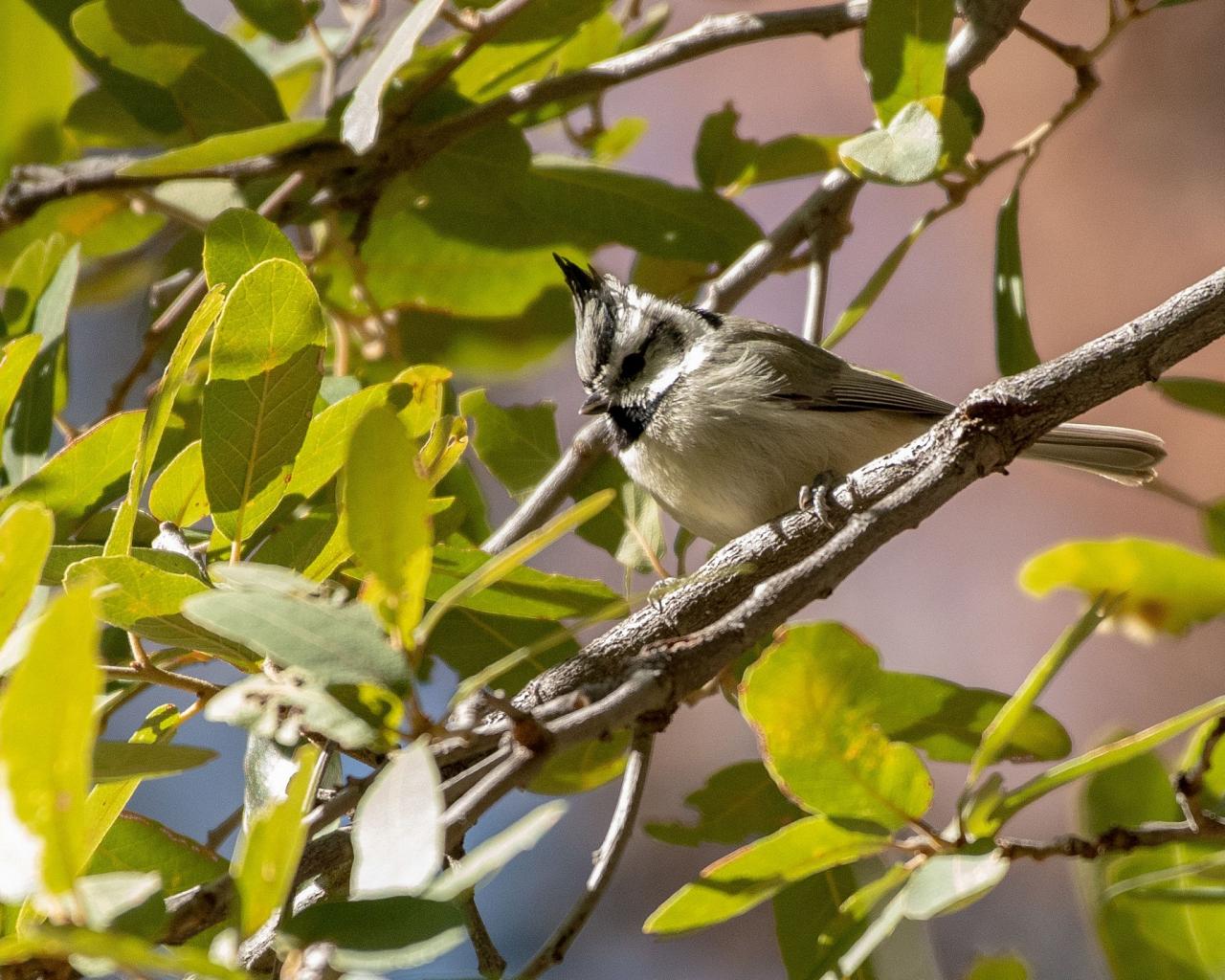
Cost of the Journey
$3190 DBL / $3710 SGL, from Tucson and includes all accommodations, meals as noted in the itinerary, professional guide services, other park and program entrance fees, and miscellaneous program expenses. Cost does not include round-trip transportation to/from Tucson, optional activities or items of a personal nature such as laundry, telephone charges, house cleaners, gratuities, or beverages from the bar.
Please plan to make air travel plans only after the minimum group size has been met. We will send you a confirmation email as soon as the trip has been confirmed.
Arrival and Departure Airport: Tucson International Airport (TUS)
Arrive: Please plan your arrival flight August 11, no later than 1:00 PM.
Depart: Please plan your departure flight August 18, after 12:00 PM.
Hotel Recommendations: If you want to relax and stay near the airport after arrival (we can pick you up at these hotels), we recommend: La Quinta Inn Tucson Airport (520) 573-3333 Courtyard by Marriott Tucson Airport (520) 573-0000 Does staying downtown and exploring the many shops and restaurants sound interesting? We would recommend: Home 2 Suites by Hilton (520) 274-7400 The Leo Kent Hotel by Marriott (520) 549-5330 If you have a rental vehicle and plan on visiting Tohono Chul , a great hotel in that area is La Posada Lodge & Casitas (520) 492-6637. There are many restaurants in this area as well.
Travel Tip: If you want to arrive a day or two early, Tucson is a great city to explore. The world-renowned Arizona-Sonora Desert Museum is a fun place to spend part of a day with a zoo, natural history museum, and botanical gardens all in one location. Tohono Chul Botanical Gardens offers easy nature trails through a variety of gardens and Saguaro National Park is a great place to visit for scenery, hiking, and to see the iconic saguaro cactus. The downtown area, which is close to the University of Arizona campus, offers many restaurants and shops. Downtown Tucson is about 8 miles from the airport and can be reached by a taxi, Uber/Lyft, or renting a car. You will need to return to the airport by 1 pm on August 11 if you are not staying at an airport hotel.
Browse below for trip reports and species lists from past versions of this and other tours from this destination.
- Species List
- Trip Report
Monsoon Madness
Sunshine & saguaros.

James grew up in New Jersey and started birding at a young age. He continued that passion by getting an undergraduate degree in Wildlife Ecology from the University of Maine. Since then, he has worked and birded extensively across the United States, including conducting point counts and banding ducks in Maine; identifying and counting waterfowl in Nebraska; counting migrating raptors in Texas, Arizona and Wyoming; and surveying for Northern Goshawks in northern California. The past three springs he has been a bird guide in the Chiricahua mountains in southeast Arizona, and he enjoys sharing his passion for birds with others. His favorite bird is the Red-headed Woodpecker.
Other trips with James Petersen
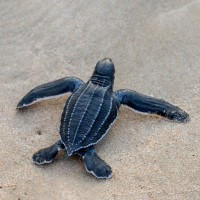
A California native who moved to Honduras in 1993 for the Peace Corps, Robert stayed to make a life there, diving headfirst into the world of tropical birds. He is now considered the country's leading authority on both avifauna and butterflies – a double expert on beautiful flying things. He leads tours for Naturalist Journeys to Panama, Honduras, Texas and Trinidad & Tobago. Robert is the current President of the Pro Nature Honduras Foundation, a small non-profit which promotes nature-based sustainable tourism and environmental education. He is also the co-founder of the Honduran Ornithological Society. He has authored two editions of the "Guide to the Birds of Honduras." He and his partner Olivia hope to publish the "Guide to the Butterflies of Honduras" sometime in 2022. The couple lives in Emerald Valley where they protect 50 acres of rich mid-elevation rainforest and are working to install a nature center with their foundation.
Other trips with Robert Gallardo
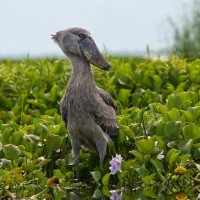
Essential Information +
This information is important for being prepared for your journey; we want you to have the best experience possible. If you only read one section, this one is key!
Ahead of Your Tour
- Please talk with your doctor about general health needs. It is a good idea to consult with your doctor about general vaccinations recommended for travel.
- Please plan to make air travel plans only after the minimum group size has been met. We will send you a confirmation email as soon as the trip has been confirmed. After you make travel reservations, please send a copy of your travel itinerary to the Naturalist Journeys office at [email protected] .
- Travel insurance in case of serious medical emergency is recommended. Full health coverage and repatriation is available through Allianz Travel Insurance .
- Soft sided luggage/duffel bags are easiest for packing the vans. Remember to pack essential medications in your carry-on luggage, as well as one day of clothing and optics in case of luggage delay.
Health Information
We will share a copy of your health and emergency contact information with your guide. This information will be kept confidential but is very important in case of a medical emergency. In addition to bringing any prescription medications with you, we recommend that you have a copy of the prescriptions in case of loss.
Pace of the Tour & What to Expect
You will receive a Schedule-at-a-Glance and list of hotels (our eContact List) a few weeks before your departure. This will serve as an outline for each day and alert you to any recent changes made in the schedule or to our hotels, if needed.
Our journeys are set up to follow the rhythm of nature. Our focus is on birding and nature; we offer full, well-planned field days and often get up early for that magical time around dawn. We generally follow the published itinerary, but we stay flexible to the weather, wildlife opportunities and the interests of the group. Your guide will keep you apprised of the next day’s schedule at each evening meal, noting what to bring and what to prepare for. Questions and/or concerns are welcome.
The pace of our Naturalist Journeys tours is moderate; to fully participate you should be able to get in and out of vehicles several times a day, and walk 1-3 miles over uneven terrain . It is important to participate with a flexible attitude as adjustments may be made in our schedule to make the most of our time in the field or for other purposes at your guide's discretion. We are not a “listing” bird company that drills down on target species, but at times we do wait for those special species unique to the places we visit. During the day, we take time to stop for photos and for educational opportunities to learn about conservation projects, landscapes, and geology. We appreciate other taxa as well as birds, with mammals often the biggest draw but plants and butterflies are also very popular. Our clients often lend their own expertise to the mix.
We like to make meals a fun and memorable part of the experience, too. Breakfasts are often at hotels, and we carry snacks, fruit, and water in the vans each day. Lunches are a mix of picnics in the field (weather dependent) and a chance to dine with locals at small cafes and restaurants. For dinner, we pride ourselves in our homework to keep up with the best choices for dining, choosing restaurants with atmosphere that specialize in local foods. On occasion we keep dinner simple to go back out in the field for sunset wildlife viewing or night walks. In some remote locations, our choices are limited. If you are tired, room service for dinner may be an option you can choose.
Food & Drink
We carry water and juices/cold drinks in the cooler each day, and sodas if people like them. Please also plan on bringing and filling your water bottle for hiking each day. We try to use as few plastics as possible!
Packing, Clothing & Laundry
Soft sided luggage/duffel bags are easiest for packing the vans. Please pack essential medications in your carry-on luggage, as well as one day of clothing and optics in case of luggage delay.
Dress is informal and is casual even at restaurants. Layering is a great way to stay comfortable. Protective clothing is essential, whether it be from sun, rain, cold, insects, or vegetation. You need closed toe shoes, and wear comfortable walking shoes with good tread. Hiking boots with good support for hiking and on rocky terrain can work well.
Spending Money
Many people ask how much to plan to bring as spending money. Part of that depends on how much you want to shop. Most shops will take VISA and MasterCard or American Express. Typical items people purchase include local souvenirs and T-shirts, caps, and natural history books. You may want to bring cash for drinks with dinner (if available) or smaller local purchases.
Expect the normal tipping protocol to apply for hotel maids and bar service. If at the end of the tour, you would like to show your appreciation to your guides, tipping is entirely appropriate but at your discretion. We hope that you will be pleased with all professional services. Gratuities for group meals are included. For your birding tour guide, we suggest $10-$15 per day per guest. Note that if there is more than one guide, this amount can be split among them.
Cell Phones & Internet Service
Wi-Fi and cell phone service are available in most US destinations, although there are some exceptions in remote locations. Wi-Fi is generally provided in all hotels, lodges, and restaurants you visit, at least in public areas. Please refrain from taking or making cell phone calls in the vehicles when traveling with other passengers unless it appears to be an emergency as this disrupts other guests – please plan cell phone calls on your own time.
Smoking is not permitted in any vehicle or in any situation where the group is participating in an activity together, such as a vehicle excursion or a guided walk. Please respect all designated smoking areas at hotels and restaurants.
Transportation
For this tour, your guides will drive travelers in either full-size or mini-vans or a combination of those two. We ask all attendees to please rotate your seating, so you ride with different drivers and alternate between front and back seats.
Photo Release & Sharing
We take many group photos and will share photos with the group. And after your tour, we will organize a chance to share photos via Dropbox or Google Photos. Please note that this is our policy and if you prefer to be excluded, we need to know ahead of your tour.
By registering for this tour, you agree to grant to Naturalist Journeys and its authorized representatives permission to record photos and/or video of your participation in the tour. You further agree that any or all of the material photographed may be used, in any form, as part of any future publications, brochures, or other printed materials used to promote Naturalist Journeys, and further that such use shall be without payment of fees, royalties, special credit or other compensation.
Please contact Naturalist Journeys by email at [email protected] or telephone our office: (520) 558-1146 or toll free: (866) 900-1146 if you have any questions. Many thanks for traveling with us and we hope you enjoy your journey.
Packing List +
Please pack light.
Soft luggage is much easier for us to pack than a more rigid hard sided piece, so if you have the choice, please use your soft luggage. Be sure your name and address are printed on the inside of the bag as well as on the luggage tag. Be sure to pack your personal medication, airline tickets, identification, binoculars, camera, and other essential items in your carry-on bag – you’ll want a daypack for field trips, so this can serve a dual purpose. We suggest verifying with your airline a week or so before your departure to double check luggage weight and size restrictions.
Dress is very informal. Early morning temperatures are generally in the mid-60°s F – low 70°s F. The temperature can be quite warm by mid-afternoon, sometimes nearing the 90° F or rarely the 100° F mark. The afternoons may bring cloud cover and short but intense rain showers which can dramatically cool things off by 20 or 30 degrees. A sweater or light jacket is perfect for the evenings.
Lightweight long sleeve shirts and long pants make ideal field clothing, as they are more protective from sun, insects and vegetation. But if you like to wear them by all means bring some shorts for casual time or travel days. Also, choose clothing you don’t mind getting dirty – and clothing that is comfortable and easy. Supportive hiking boots are essential for our walks. Sandals may be well appreciated for evenings and travel days.
Clothing and Gear
- Lightweight long pants, 2 pairs
- Shorts (optional)
- Lightweight long sleeve shirts, 2-3 (loose fitting keeps you cool)
- T-shirts or equivalent, 4-5 (remember you may be buying some there anyway!)
- Lightweight raincoat or poncho
- Windbreaker type jacket
- Hat with broad brim
- Personal underclothing and pajamas
- Socks – lightweight and easy to wash and dry
- Comfortable walking shoes and lightweight hiking boots – good tread is essential and waterproof can be nice during monsoon season
- Comfortable sandals or light shoes for evenings
- Light to medium weight jacket
- Comfortable clothes for evenings (a cleaner version of your field cloths or a skirt, etc.)
- Bathing suit (optional)
Equipment and Miscellaneous
- Photo Identification
- Airline tickets or e-ticket verification
- Walking stick (optional but recommended if you usually use one when hiking)
- Toiletries articles including moisturizer
- Binoculars (a clear shower cap works well to keep off rain and mist)
- Camera and extra batteries, battery chargers, film or digital chips, lens cleaning supplies and your instruction manual (optional)
- Tablet or laptop for personal use and/or transferring photos with charger and USB cord (optional)
- Small daypack or fanny pack for carrying your field gear
- Water bottle (or plan to refill one bought on location)
- Sunscreen/lip balm with SPF
- Gel bandana for cooling (optional)
- Sunglasses with neck strap
- Insect repellent
- Sulphur powder for possible chiggers (found at garden stores)
- Portable packages of facial tissues
- Small flashlight or headlamp with fresh batteries
- Alarm clock (if you use your phone, be sure to turn off data roaming)
- Laundry soap if you plan to do hand washing
- Umbrella (optional, compact and not brightly colored)
- Spotting scope and tripod (optional, guide will have one)
- Notebook or journal and pen (optional)
- Field guides (optional)
- Earplugs (optional)
- Small bottle of antibacterial soap
- Rechargeable power bank (optional)
WE DO NOT RECOMMEND TRAVELING WITH PRECIOUS OR VALUABLE JEWELRY – don’t tempt anyone and don’t bring things you’d regret losing, and your mind will be at ease!
Medical and First Aid Items
- Personal medication (and copy of vital prescriptions, including glasses – or have at easy reference to call or fax from home) and any medical alerts
- Motion sickness preventatives if likely to be needed on bus, van, drives, etc.
- Personal first aid kit and medications for general ailments (including band-aids, moleskin, etc. for blisters)
- Tweezers (good for removing cactus spines)
- Health insurance information
- Extra pair of eyeglasses or contacts
Suggested Reading List +
These books are, of course, optional, but recommended to help you get the most out of your trip. Also, feel free to get online and check other book listings for the area.
General Reading
Mountain Islands and Desert Seas: A Natural History of the U.S./Mexico Borderlands
The Deserts of the Southwest: A Sierra Club Naturalist’s Guide
Natural Environments of Arizona: From Desert to Mountains
Roadside Geology of Arizona
Field Guides
Birds of Southeastern Arizona
National Audubon Society Sibley Guide to Birds
Field Guide to the Birds of North America
Hummingbirds of North America: The Photographic Guide
A Field Guide to Hummingbirds of North America
Kaufman Field Guide to Butterflies of North America
Dragonflies and Damselflies of the West
Dragonflies and Damselflies of the Southwest
A Guide to the Identification and Natural History of the Sparrows of the United States and Canada
Peterson Field Guides: Hawks, 2nd Edition
Peterson Field Guides: Warblers
General Birding
Peterson Field Guides: Advanced Birding
The Birder’s Handbook: A Field Guide to the Natural History of North American Birds
The Complete Birder: A Guide to Better Birding
Lives of North American Birds
Pete Dunne’s Essential Field Guide Companion: A Comprehensive Resource for Identifying North American Birds
Site Guides
A Birder’s Guide to Southeastern Arizona
Tucson Audubon’s Finding Birds in Southeast Arizona
Your guide will also have a selection of reference books and materials for participants to share. As an Amazon Associate, Naturalist Journeys earns from qualifying purchases, and may get commissions for purchases made through links on this page at no added cost to you.
Useful Links +
- https://en.wikipedia.org/wiki/Tucson,_Arizona
- https://en.wikipedia.org/wiki/Willcox,_Arizona
- https://en.wikipedia.org/wiki/Portal,_Arizona
- https://www.discoverbisbee.com/about-bisbee
- https://en.wikipedia.org/wiki/Patagonia,_Arizona
Nature, Wildlife & Biology
Arizona Monsoons
- https://azclimate.asu.edu/monsoon/
Tucson Audubon Society
- https://tucsonaudubon.org
Birding Arizona – Fatbirder.com
- https://fatbirder.com/world-birding/north-america/united-states-of-america/state-of-arizona/
Birding Willcox - Hotspots
- https://visitwillcox.az.gov/birding
- https://birdinghotspots.org/hotspot/L266875
Birding Portal - Hotspot
- https://birdinghotspots.org/hotspot/L324045
Birding Lake Patagonia
- https://birdinghotspots.org/hotspot/L2064166
Desert Wildlife - Arizona Sonora Desert Museum:
The Desert Adaptation of Desert Birds & Mammals
- https://www.desertmuseum.org/books/nhsd_adaptations_birds.php
Reptiles and Amphibians
- www.desertmuseum.org/books/nhsd_reptile.php
Migratory Pollinators Program
- https://www.desertmuseum.org/pollination/introduction.php
Conservation, Parks & Reserves
Chiricahua National Monument – Coronado National Forest
- https://en.wikipedia.org/wiki/Chiricahua_National_Monument
Cave Creek Canyon – Coronado National Forest
- https://www.friendsofcavecreekcanyon.com/
San Pedro River
- https://www.nature.org/en-us/get-involved/how-to-help/places-we-protect/san-pedro-river/
Carr Canyon
- https://www.fs.usda.gov/Internet/FSE_DOCUMENTS/fseprd1042964.pdf
Ash Canyon Bird Sanctuary
- https://sabo.org/ash-canyon-bird-sanctuary/
Miller Canyon
- https://birdinghotspots.org/hotspot/L129031
Ramsey Canyon Preserve – The Nature Conservancy
- https://www.nature.org/en-us/get-involved/how-to-help/places-we-protect/ramsey-canyon-preserve/
Patagonia Lake State Park
- https://azstateparks.com/patagonia-lake
Patagonia-Sonoita Creek Preserve - The Nature Conservancy
- https://www.nature.org/en-us/get-involved/how-to-help/places-we-protect/patagonia-sonoita-creek-preserve/
Florida Canyon
- https://www.fs.usda.gov/recarea/coronado/recarea/?recid=25748
- https://www.fs.usda.gov/recarea/coronado/recarea/?recid=25736
Madera Canyon
- https://www.fs.usda.gov/recarea/coronado/recreation/scenicdrivinginfo/recarea/?recid=25666&actid=105
Geology & Geography
Geology of Arizona
- https://en.wikipedia.org/wiki/Geology_of_Arizona
- https://www.desertmuseum.org/books/nhsd_geologic_origin.php
Geography of Southern Arizona
- https://en.wikipedia.org/wiki/Southern_Arizona#Geography
History & Culture
Tucson’s History and Culture
- https://www.visittucson.org/things-to-do/history-and-culture/
Culture History of Southern Arizona – American Era
- https://statemuseum.arizona.edu/online-exhibit/culture-history-southern-arizona/american
Canoa Ranch: THEN AND NOW - A Historic View
- https://www.gvnews.com/news/then-and-now-a-view-of-historic-canoa-ranch/article_01a8a7d4-ce53-11ed-a016-0bd707d4ec68.html
Amerind Foundation
- https://www.amerind.org/
Bisbee’s History
- https://www.bisbeeaz.gov/2174/Bisbee-History
Southern Arizona Cuisine
- https://tucsonfoodie.com/2019/08/30/sonoran-food-guide/
Helpful Travel Websites
Tucson International Airport
- https://www.flytucson.com/
Homeland Security Real ID Act
- https://www.dhs.gov/real-id
Transportation Security Administration (TSA)
- https://www.tsa.gov
ATM Locator
- https://www.mastercard.us/en-us/personal/get-support/find-nearest-atm.html
- https://www.visa.com/atmlocator/
Date & Time
- https://www.timeanddate.com/worldclock/usa/tucson
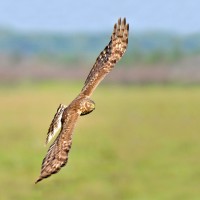
Photo credits: Banner: Cave Creek Canyon, Paul Petrus; Gila Monster by Tamara Winkler; Gila Woodpecker by Janice Petko; Montezuma Quail by Peg Abbott; Monsoon Brewing by Bryan Calk; Mountain Short-Horned Lizard by Bryan Calk; Mojave Rattlesnake by Bryan Calk; Broad-billed Hummingbird by Evelyn Earlougher; Harris's Hawk by Peg Abbott; Butterfly by Mahlon Hale; Cactus Wren by Peg Abbott; Vermillion Flycatcher by Steve Wolfe; Black-chinned Hummingbird by Peg Abbott; Elegant Trogon by Peg Abbott; Arizona Sister by Mahlon Hale; Mexican Spotted Owl, Greg Smith; Gila Woodpecker, Janice Petko; Rattlesnake, John Rosner; Casa de San Pedro, courtesy of the Inn; Broad-billed Hummingbird, Evelyn Earlougher; Lucy’s Warbler, Peg Abbott; Calliope Hummingbird in Flowers, Karen LeMay; Zebra-tailed Lizard, Greg Smith
Like what we do?
Sign up for our weekly enews to stay up to date, get to know our favorite destinations each week. we promise no spam..
JAVASCRIPT IS DISABLED. Please enable JavaScript on your browser to best view this site.
Southeastern Arizona Bird Observatory

- The Faces Behind SABO
- MOTUS PROJECT
- Barn Owl Nestcam
- Calendar of Events
- Activities Map
- Workshops & Tours
- Hummingbird Activities
- Hummingbirds (and More!) of Ecuador
- Presentations
- Policies and Disclaimers
- ACBS: History
- Plant Profile: Littleleaf Sage
- Plant Profiles: Autumn Sage
- Plant Profiles: Parry’s Penstemon
- Plant Profile:Darcy Sage
- Plant Profile: Superb Beardtongue
- Plant Profile: Beardlip Penstemon
- Plant Profiles: Ocotillo
- Plant profile: Cardinal Flower
- Plant Profile: Chuparosa
- Plant profile: Firecracker
- Plant Profile: Canyon Penstemon
- Plant Profile: Mountain Sage
- Plant Profile: Mexican Bush Sage
- Other Wildlife of Ash Canyon Bird Sanctuary
- Preventing window collisions
- Ash Canyon Bird Sanctuary FAQ
- Support ACBS
- Lucifer HB Membership
- Photo Blind Reservations
- Live Webcam!
- The Five Seasons
- Comfort and Safety
- Better Birding
- Tucson and Vicinity
- Santa Cruz County
- Huachucas & San Pedro
- Sulphur Springs Valley and Mule Mountains
- Chiricahua Mountains
- Birder-friendly Businesses
- Birding in Mexico
- Hummingbird FAQ
- Hummingbird Banding
- Make a Donation
- Manage Member Profile
- Contact SABO
Welcome to SABO!
The Southeastern Arizona Bird Observatory (SABO) is a non-profit organization dedicated to the conservation of the birds of southeastern Arizona, their habitats and the diversity of species that share those habitats through research, monitoring and public education.
SABO offers a variety of resources for the birding and naturalist communities and opportunities for residents and visitors to connect with the birds and other wildlife of southeastern Arizona, including Ash Canyon Bird Sanctuary . We also serve as regional advocates for science-based management of birds and their habitats and responsible, low-impact economic development. These activities are supported by our members and donors, people like you who value wildlife and wild places. Please consider joining SABO or making a donation today!
SABO is a federally recognized tax-exempt charitable organization as defined under § 501(c)(3) of the Internal Revenue Code; contributions are tax-deductible.

Professional Birding Guides
Our guides are among the top birders in Arizona and beyond. We have team members based across the state including Patagonia, Tucson, Phoenix, Prescott, and Flagstaff. You’re in the best possible hands with Arizona Birding Tours.
Felipe Guerrero Owner & Guide
graduate school, non-profit adventures, and what has been a particularly wonderful 6 years of poking around the most remote and under-birded corners of the state, Arizona Birding Tours was born in 2018. Felipe love birds and loves sharing the excitement and good times of birding with his clients. Birding with Felipe isn’t just about seeking Arizona’s specialty birds, it’s about celebrating the astonishingly diverse biological treasure that is Arizona.
Felipe is currently a member of the Arizona Bird Committee, and an eBird reviewer for Yavapai, Navajo, and Apache Counties. In the past he served as Field Expeditions Chair and board member for Arizona Field Ornithologists, as well as board member for Prescott Audubon Society.
Jake Thompson Guide & Administrator
A habitat of special interest to Jake is Arizona’s high elevation mixed conifer forests. Jake is passionate about wildlife conservation and outreach, always looking to bring that appreciation to others through birding. Through leading family bird walks for both local and regional Audubon societies he has grown his admiration for even the most common species and appreciates getting a chance to turn novice naturalists into full blown birders
Jake has participated in AZGFD survey point counts as well as contributed to AZ’s Breeding Bird Surveys. Jake is also a board member for Desert Rivers Audubon Society.
Nolan Walker Guide
Nolan particularly enjoys any type of migration, especially morning flight, sea-watching, hawk-watching, and listening for nocturnal flight calls. Additionally, he finds nothing more exciting than exploring an under-birded region to find unexpected species or rarities. Nolan loves sharing amazing experiences with clients and seeing the joy on their faces when they see new birds!
Nolan has the pleasure of helping compile the North American Birds seasonal reports for Arizona. In Tennessee, he helped compile data for various CBCs, fall counts, and spring counts. Additionally, he has spent time hawkwatching in Cape May Point State Park.
Kadynn Hatfield Guide
In his endeavors to see birds on their breeding territories, in migration, and on their wintering grounds, Kadynn has pursued them across the U.S. and Belize. He now calls Arizona home and relishes the diverse birdlife it offers, courtesy of the state’s ranging elevations and climates which allows for many habitats to visit and rarities to list. He loves to help others reach their birding goals and share their appreciation of the avian world.
Kadynn is an eBird state reviewer for Iowa, has worked 7 years with waterfowl and game birds in captivity and has helped as a volunteer hawkwatcher. He’s enjoyed several CBC’s and a season of guiding for Sandhill Cranes on the Platte River.
Eric Hough Guide
to exploring seldom-visited areas. He is particularly interested in the distribution of vegetation and associated ecosystems.
His undergraduate and graduate degrees at Northern Arizona University, and several years of field work as a biologist, further honed his interests and expertise in the natural world to include plants, reptiles and amphibians, dragonflies, and more recently, butterflies. Eric has traveled through much of the U.S. and since 2013, has made several trips deep into Sonora, Mexico. He loves teaching others about nature as much as he enjoys learning about it, and currently works as an interpretive ranger with Maricopa County Parks in the Phoenix area, where he gets to connect others with the natural world.
Eric has served on the Arizona Bird Committee, as Field Expeditions Chair and a board member for Arizona Field Ornithologists, is an eBird reviewer for Navajo and Apache Counties in Arizona, and has coordinated and helped with multiple Christmas Bird Counts and other volunteer bird survey efforts.
Louie Dombroski Guide
and Arizona. Louie spent years guiding visiting birders in Madera Canyon, and now resides for most of the year in the bird-rich town of Patagonia, Arizona. Louie has been part of ornithological research projects in Alaska, Colorado, and northern Mexico. In addition to his extensive birding experience in southeast Arizona and the Great Lakes region, the pursuit of birds has also taken him to many corners of North America as well as to Costa Rica and Colombia. Louie’s enthusiasm is evident whenever he runs into people trying to connect with birds. He finds that showing people life birds that he’s seen many times over is like reliving the experience of seeing them for the first time himself.
Louie contributed to the Arizona Breeding Bird Atlas and was employed to work on the Michigan Breeding Bird Atlas (both versions I and II). Louie was long involved in a successful effort to bring Whitefish Point, site of Michigan Audubon Society’s renowned Whitefish Point Bird Observatory, under the protection of the National Wildlife Refuge system. He has authored many seasonal bird survey reports for Michigan Audubon Society’s natural history journal, and presently serves (and has served as chair in the past) on the Michigan Bird Records Committee.
Caleb Strand Guide
In addition to his love of exploration, Caleb enjoys watching the look of amazement on the faces of his clients as they observe the beauty of the diverse wildlife and landscapes of Arizona and the Southwest. From watching California Condors soaring over the cliffs of the Grand Canyon to observing a pair of Elegant Trogons visiting their nesting cavity in a sycamore in the sky Islands of southeast Arizona, Caleb truly loves his home state of Arizona!
Caleb is an eBird Regional Reviewer for Maricopa, Yavapai, Gila, Graham, Greenlee, Navajo, and Apache Counties in Arizona, a current member of the Arizona Bird Committee, and has also served on the Arizona Field Ornithologists Expeditions committee, leading trips into under-birded areas across the state
David Griffin Guide
raptors, and Sky Island specialties, and also has in-depth knowledge of reptiles, amphibians, mammals and plants.
He has studied the ecology of Yellow-eyed juncos and Aplomado falcons, and for his graduate work wrote a Conservation History of the Peregrine Falcon in New Mexico. David was a field team member on the Arizona Breeding Bird Atlas and he’s traveled and studied the birdlife of Arizona ever since. Dave’s an adventurer and loves to explore new and overlooked areas for birds and wildlife. He loves to learn from others, and to share, educate and expose people to the wonders of the natural world.
David served as President for the Mesilla Valley Audubon Society, was an advisor for New Mexico Game and Fish’s Gray Vireo Recovery Plan, an invited Instructor for the Doña Ana County Master Naturalist program: Avian Ecology & Birds of the Chihuahuan Desert, a Field Trip Leader for Tucson Audubon Society, Buenos Aires NWR, and Port Louisa NWR, and coordinated several Christmas Bird Counts and volunteer bird surveys. Dave has also volunteered his time as a Bicycle Mechanic for a Children’s Holiday Bike Program and as a Children’s Bike Safety Course Instructor and Criterium Race Marshall.
Gary Rosenberg Guide
went to Arizona State University where he studied Biology, and then went to Louisiana State University for a Master’s degree studying Ornithology where he studied Neotropical birds in Peru, and has been involved in the discovery and description of three new birds to science. He has published several papers and articles on birds, including a few on new North American records from Gambell, Alaska.
Gary spent 24 years leading tours for WINGS, and then started his own small birdwatching tour company, Avian Journeys, specializing on Arizona, where he has led more than 75 tours, as well as other areas in the United States, particularly Alaska, and the Neotropics in countries such as Costa Rica, Ecuador, and Peru. In 1987, Gary moved back to Arizona, and has been heavily involved in the Arizona birding community since. He was the Arizona regional editor for North American Birds for 30 years, and has been on the Arizona Bird Committee, and currently serves as its secretary.
Levi Plummer Guide & Social Media
and obtaining quality documentation of rare bird species. He has won multiple awards for his work. In addition to bird photography, he is also fascinated by the distribution of species in mountainous regions, and late-arrival breeders. Levi relishes the opportunity to share the incredible avian diversity Arizona has to offer with others and loves working with people and helping create the best birding experiences possible!
Levi is an eBird regional reviewer for Maricopa County, and has participated in many Christmas Bird Counts and bird surveys, and helped run photography workshops.
John Wilson Guide
At the age of 15, John was introduced to birding and has since spent his time traveling across Arizona adding to his ever growing life list. For him, birding is a treasure hunt and a great excuse to enjoy all that nature has to offer.
John has found a particular fascination with migration and vagrant traps. Something about finding a species in a totally new area just holds an added fascination to the already interesting life each bird lives. Past birding, John has become a Naturalist with a particular interest in Herps and Insects, but anything living and of even minimal interest is absolutely captivating to him.
John has been an AZGFD Bald Eagle nest watcher for the past six years, a Yellow-billed Cuckoo surveyor for two years, an independent contractor for Burrowing Owl and Kit Fox surveys for one year, and has been heavily involved in his local Audubon societies, guiding for both Northern Arizona Audubon while he attends classes at Northern Arizona University and White Mountain Audubon in his hometown of Taylor, AZ. He has also been a part of the Arizona Field Ornithologists field expedition committee and most recently has become a regional eBird Reviewer for Navajo and Apache counties.
Alex Patia Guide
with others is what prompted him to get a Masters in Environmental Education in 2013. He has since worked in seven states including leading puffin cruises in Maine, as a naturalist in all three of Washington’s national parks, on whale watching trips in the Puget Sound, leading overnight trips to Santa Cruz Island, handling raptors for education programs at the New Mexico Wildlife Center, and as a wildlife guide in Jackson Hole, Wyoming. Alex has birded in all 50 U.S. states but Arizona has been his favorite state to bird in almost every year since first visiting in 2011. Alex is excited to now call Arizona home and share the amazing diversity of its wildlife and stunning landscapes with visitors!
Alex also shares his passion for birds as the Sweetwater Wetlands Coordinator for Tucson Audubon. He has participated in multiple Christmas Bird Counts, bird surveys, banding stations, and was formerly the eBird Regional Reviewer for Teton and Park counties Wyoming.
ARIZONA BIRDING TOURS HOLDS A SPECIAL USE PERMIT with the U.s. Forest Service and is Authorized FOR OUTFITTING AND GUIDING ON CORONADO NATIONAL FOREST.
In accordance with Federal civil rights law and U.S. Department of Agriculture (USDA) civil rights regulations and policies, the USDA, its Agencies, offices, and employees, and institutions participating in or administering USDA programs are prohibited from discriminating based on race, color, national origin, religion, sex, gender identity (including gender expression), sexual orientation, disability, age, marital status, family/parental status, income derived from a public assistance program, political beliefs, or reprisal or retaliation for prior civil rights activity, in any program or activity conducted or funded by USDA (not all bases apply to all programs). Remedies and complaint filing deadlines vary by program or incident. Persons with disabilities who require alternative means of communication for program information (e.g., Braille, large print, audiotape, American Sign Language, etc.) should contact the responsible Agency or USDA’s TARGET Center at (202) 720-2600 (voice and TTY) or contact USDA through the Federal Relay Service at (800) 877-8339. Additionally, program information may be made available in languages other than English. To file a program discrimination complaint, complete the USDA Program Discrimination Complaint Form, AD-3027, found online at http://www.ascr.usda.gov/complaint_filing_cust.html and at any USDA office or write a letter addressed to USDA and provide in the letter all of the information requested in the form. To request a copy of the complaint form, call (866) 632-9992. Submit your completed form or letter to USDA by: (1) mail: U.S. Department of Agriculture, Office of the Assistant Secretary for Civil Rights, 1400 Independence Avenue, SW, Washington, D.C. 20250-9410; (2) fax: (202) 690-7442; or (3) email: [email protected] . USDA is an equal opportunity provider, employer and lender.
Automated page speed optimizations for fast site performance
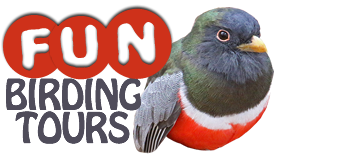
About Fun Birding Tours in SE Arizona
Introducing arizona birding guide, richard fray.
Hi, I’m Richard Fray, professional birding guide in southeastern Arizona. I was born in Leicester, England and lived there until I moved to Tucson, Arizona in 2002. Having spent eight years studying the wildlife of southeast Arizona, I started my company, Fun Birding Tours, in January 2010, and I’ve been guiding birders full-time ever since.
I live in Rio Rico in Santa Cruz County, 15 miles north of the USA/Mexico border in great birding habitat. I offer my services as a birding guide in southeast Arizona.

Richard (left) birding with brother Rob (right) and a friend, c.1985
I grew up in Leicester, England in a wildlife-mad household, and I’ve been a birder since I was big enough to pick up binoculars. I was inspired by my dad, who ran the local youth birding club, and my older brother, Rob Fray, who was twice named Britain’s Young Ornithologist of the Year. I became involved in several local wildlife organizations in the UK, and held various positions with the Leicestershire & Rutland Ornithological Society and Leicestershire & Rutland Dragonfly Group.
I moved to Tucson, Arizona in 2002 and finally became a US citizen in 2019. I served on the Board of Directors of Tucson Audubon Society from 2008 – 2012 and occasionally write for the Vermilion Flycatcher magazine. I’m a regular volunteer for Tucson Audubon, representing the society at public events, leading free field trips, and participating in a variety of local birds surveys, including specific Important Bird Area (IBA) surveys for Yellow-billed Cuckoo, Elegant Trogon, and Chestnut-collared Longspur.
Over the years I’ve worked with a number of national and regional organizations, including leading field trips for the American Birding Association (ABA), American Ornithological Society (AOS), US Fish & Wildlife Service (USFWS), Arizona Field Ornithologists (AZFO), and Arizona State Parks.
Every year I lead trips for some of the biggest birding festivals, such as the Southeast Arizona Birding Festival, Southwest Wings Birding Festival, Rio Grande Valley Birding Festival, and Wings Over Willcox.
As well as Fun Birding Tours, I’ve also led trips for well-known birding companies such as Naturalist Journeys, Borderland Tours, Quetzal Tours, Adventure Birding, Lanius Bird Tours, and Wings.
Since its creation in 2013, I was one of the administrators of the popular Arizona Birding Facebook Group for eight years.
I’m a consultant on bird vocalizations of Western USA for iSpiny Nature Apps, developers of ChirpOMatic, the automatic birdsong identification app.
My wildlife photos have appeared on the iBird Pro 2 app, and in a number of publications including The Birds of Scotland, Rick Taylor’s Birds of Southeastern Arizona, Nightjars of the World, British Birds, Birding World, Birdwatch Magazine, Birdwatching Magazine, LROS Annual Bird Reports (including the cover in 2003), The Purple Martin Update (cover in fall 2020), and Vermilion Flycatcher, among others.
I have a pretty simple philosophy when it comes to birding – enjoy it! As you’ll discover when you meet me, I’m a fairly laid back guy, easy to get along with and in possession of a typically English sense of humor. I like to be laid back when I’m birding, too, but equally I enjoy birding intensely and locating as many birds as I can, particularly scarce birds.
I’ve found a number of rare and scarce birds in Arizona, including the USA’s 12th (or so) and Pima County’s first Tufted Flycatcher, Arizona’s 9th Ruff, 10th Laughing Gull, 16th Bay-breasted Warbler, 20th Philadelphia Vireo, Navajo County’s first Blackpoll Warbler, Santa Cruz County’s first Black-bellied Plover, breeding Least Grebes, first breeding of Lucifer Hummingbirds in Pima County, several Rufous-backed Robins, a couple of Heermann’s Gulls and Ruddy Ground-Doves, Pacific Loon, Surf Scoter, Eurasian Wigeon, Short-tailed Hawk, Lapland Longspur, Golden-crowned Sparrow, and new US locations for Five-striped Sparrow, Rufous-capped Warbler, and Black-capped Gnatcatcher.
While I lived in the UK, I was lucky enough to find rarities such as Yellow-breasted Bunting, Great Reed Warbler and Gull-billed Tern.
I chase the odd rarity and keep a few lists, but I don’t approach birding with a particularly competitive edge (with the exception of my SE AZ “found” list which I’m always keen to improve). My main goal is always to increase my own knowledge and enjoy the birds I see.
It’s not just birds, I’m interested in all aspects of the natural world. I’m particularly fond of butterflies and dragonflies, and increasingly keen on mammals and reptiles, living in such a great place to see them. I’m no expert in any of these areas but I have a good background knowledge.
I get a real kick out of showing people the birds, wildlife and beautiful scenery of my adopted home of southeast Arizona, and I’m especially thrilled when I get the chance to show people birds they’ve never seen before. You’ll find that I’m always enthusiastic about what we see, and I’m not putting it on; I’m like that even when I’m birding on my own!
Away from birding and wildlife – yes, it does happen occasionally – I enjoy spending time with my dog, Minno, and my cat, Juniper, watching comedy and sport (often combined in the case of my favorite soccer team, Leicester City) and spending as much time as possible with my beautiful partner, Tucson Audubon’s Bird Conservation Biologist, Jennie MacFarland.

- Birding in SE AZ
- SE AZ Specialty Birds
- Latest SE AZ Bird News
- SE AZ Birding Checklists
- SE AZ Birding Sites
- SE AZ Birding Tips
- SE AZ Birding Accommodation
- SE AZ Weather
- Other Birding Guides
Fun Birding Tours LLC
- Share full article
For more audio journalism and storytelling, download New York Times Audio , a new iOS app available for news subscribers.

- June 7, 2024 • 30:00 Real Teenagers, Fake Nudes: The Rise of Deepfakes in American Schools
- June 6, 2024 • 23:38 The Fight Over the Next Pandemic
- June 5, 2024 • 30:42 Biden’s Push to End the War in Gaza
- June 4, 2024 • 29:17 A Conversation With President Zelensky
- June 3, 2024 • 32:07 How Trump’s Conviction Could Reshape the Election
- May 31, 2024 • 31:29 Guilty
- May 30, 2024 • 25:21 The Government Takes On Ticketmaster
- May 29, 2024 • 29:46 The Closing Arguments in the Trump Trial
- May 28, 2024 • 25:56 The Alitos and Their Flags
- May 24, 2024 • 25:18 Whales Have an Alphabet
- May 23, 2024 • 34:24 I.C.C. Prosecutor Requests Warrants for Israeli and Hamas Leaders
- May 22, 2024 • 23:20 Biden’s Open War on Hidden Fees
Real Teenagers, Fake Nudes: The Rise of Deepfakes in American Schools
Students are using artificial intelligence to create sexually explicit images of their classmates..
Hosted by Sabrina Tavernise
Featuring Natasha Singer
Produced by Sydney Harper and Shannon M. Lin
Edited by Marc Georges
Original music by Marion Lozano , Elisheba Ittoop and Dan Powell
Engineered by Chris Wood
Listen and follow The Daily Apple Podcasts | Spotify | Amazon Music | YouTube
Warning: this episode contains strong language, descriptions of explicit content and sexual harassment
A disturbing new problem is sweeping American schools: Students are using artificial intelligence to create sexually explicit images of their classmates and then share them without the person depicted even knowing.
Natasha Singer, who covers technology, business and society for The Times, discusses the rise of deepfake nudes and one girl’s fight to stop them.
On today’s episode
Natasha Singer , a reporter covering technology, business and society for The New York Times.

Background reading
Using artificial intelligence, middle and high school students have fabricated explicit images of female classmates and shared the doctored pictures.
Spurred by teenage girls, states have moved to ban deepfake nudes .
There are a lot of ways to listen to The Daily. Here’s how.
We aim to make transcripts available the next workday after an episode’s publication. You can find them at the top of the page.
The Daily is made by Rachel Quester, Lynsea Garrison, Clare Toeniskoetter, Paige Cowett, Michael Simon Johnson, Brad Fisher, Chris Wood, Jessica Cheung, Stella Tan, Alexandra Leigh Young, Lisa Chow, Eric Krupke, Marc Georges, Luke Vander Ploeg, M.J. Davis Lin, Dan Powell, Sydney Harper, Mike Benoist, Liz O. Baylen, Asthaa Chaturvedi, Rachelle Bonja, Diana Nguyen, Marion Lozano, Corey Schreppel, Rob Szypko, Elisheba Ittoop, Mooj Zadie, Patricia Willens, Rowan Niemisto, Jody Becker, Rikki Novetsky, John Ketchum, Nina Feldman, Will Reid, Carlos Prieto, Ben Calhoun, Susan Lee, Lexie Diao, Mary Wilson, Alex Stern, Sophia Lanman, Shannon Lin, Diane Wong, Devon Taylor, Alyssa Moxley, Summer Thomad, Olivia Natt, Daniel Ramirez and Brendan Klinkenberg.
Our theme music is by Jim Brunberg and Ben Landsverk of Wonderly. Special thanks to Sam Dolnick, Paula Szuchman, Lisa Tobin, Larissa Anderson, Julia Simon, Sofia Milan, Mahima Chablani, Elizabeth Davis-Moorer, Jeffrey Miranda, Maddy Masiello, Isabella Anderson, Nina Lassam and Nick Pitman.
Natasha Singer writes about technology, business and society. She is currently reporting on the far-reaching ways that tech companies and their tools are reshaping public schools, higher education and job opportunities. More about Natasha Singer
Advertisement

IMAGES
VIDEO
COMMENTS
Tour Overview. Southeast Arizona birding tour highlights borderland specialties like Elegant Trogon, Spotted Owl, Rose-throated Becard, Mexican Chickadee, Thick-billed Kingbird and many more! This tour is timed for the start of the monsoon season, known also as the second spring; the desert blossoms at this time, and it is the best season to ...
Whether you're new to bird watching or a veteran birder, your Arizona birding experience will be greatly enhanced with the help of someone who knows the birds, and how to find them. Based in Rio Rico, Santa Cruz County, Richard Fray has lived and birded in southeastern Arizona for more than 20 years, guiding full time for the last 13.
Day 1: The tour begins this evening in Tucson. Night in Tucson. Everything was perfect. Jake is a superb leader with tremendous birding skills as well as great people skills. The B&B was comfortable and charming, and the food ws fantastic. Even the birds put on a show, and Jake had us in a perfect place to watch. MaryAnn Teal, Feb 2019.
May 6 - 15, 2025. Few places in the U.S. offer the remarkable combination of scenery, biological diversity, and experience like the sky island mountain ranges of Southeastern Arizona. These ranges rise from deserts and grasslands; the elevation changes afford rich biodiversity, rare in such a small geographic area.
If we go birding again in southeast Arizona, we will ask for Alex! We had such a rich experience with him! Sincerely, Betsy Keyack, Highlands Ranch, Colorado . Betsy Keyack. 1715474073. ... My mom and I booked two full day tours with Arizona Birding-- one in Phoenix with Levi and one in Patagonia with David.Levi is incredibly kind ...
This ten-day set departure tour of Southeast Arizona commenced in Tucson, Arizona on the 14 th of August 2022 and concluded back in Tucson on the 23 rd of August 2022. On this tour we visited numerous fantastic birding locations including Santa Rita Lodge, Mt. Lemmon, Sweetwater Wetlands, Montosa Canyon, Paton's Center for Hummingbirds, Ash ...
G.J., ARIZONA: BIRDING THE BORDER 2019. We have currently scheduled through 2026, with details including limits, guides, fees, and space available listed below. Guided by: Tour Manager: Tour Limit: 7. Status: - Space is still available on this tour, and we are accepting provisional bookings. No deposit is required until you receive the itinerary.
Book A Tour! 517-490-5315. [email protected]. Please call or email for availability and pricing.
For those interested in southeast Arizona birding, Casa de San Pedro is centrally located, permitting easy day trips to other birding hotspots ... Individual, small group, and customized daily guide services and Life-Bird Tour Itineraries in SE Arizona , Texas and the Southeast Contact: (770) 317-8486 [email protected] Website ...
The Adventure Birding Company: professionally guided birding & nature tours. The Adventure Birding Company was established in 2006 to offer bird watching and nature tours year-round in Southeastern Arizona and to select destinations worldwide. Our goal is to make each outing an exciting or remarkable experience in its own way - the very ...
So Many Birds, So Little Time! Give me a call at 520-245-4085 or e-mail Melody for more info. Outfitter/guide permittee of the Coronado National Forest.
6-Day / 5-Night Arizona Birding & Nature Tour w/ James Petersen & Chris Harbard; $2,590 DBL / $3,140 SGL, from Tucson; Airport is Tucson International (TUS) Pace of the Trip. A Birder's Pace. We walk at a birder's pace, fewer than four miles a day, with breaks along the way. Moderate, with full days of birding and walks on quiet roads and ...
Join Naturalist Journeys on a Southeast Arizona birding tour, Southeast Arizona nature tour, or a private Portal birding tour. Guided Group Tours. Group travel is rewarding and fun! With more eyes you see more species. Travel Planners of Naturalist Journeys have been creating memorable journeys for 40+ years. We offer you small-group birding ...
The tour begins with an exploration of the Tucson area, including Saguaro National Park. Then we'll head south to Sierra Vista and the Huachuca Mountains, where we'll really dive into what southeast Arizona birding is known for. We'll spend time in both wild places and at bird feeding stations in the Huachucas.
Description. Our guided tour will visit some of southeast Arizona's most sought after birding locations, from the the highest peak in the Santa Catalina mountains (Mount Lemmon) to Madera Canyon in the Coronado National Forest. Arizona is filled with spectacular desert landscapes, in addition to a mix of habitats from the urban fringe to the ...
Tours By Date. 2024 2025 Tours by Region. North America ... Southeast Arizona: Second Spring. Southeast Arizona is one of the US's top birding regions, with a long list of birds that can't be found elsewhere in the country and stunning scenery. We will be visiting the desert and "sky island" mountain ranges during a time of year known ...
Southeastern Arizona Birding Tour Dates: August 6-16, 2019 Tour Fee: $4,975 single/$4,340 double Leaders: Steve Shunk plus add'l local guide Questions: Contact Paradise Birding owner Steve Shunk How to Register: Click the button below to view and download the tour itinerary and registration form.
November 11 - 17, 2024. Join us in November for an Arizona birding and nature tour, a gorgeous time to explore Arizona's saguaro deserts. Temperatures are typically perfect and light is ideal for photography. Birds abound as wintering species arrive to join residents such as Greater Roadrunner, Vermilion Flycatcher, Verdin, Gambel's Quail ...
August 11 - 18, 2024. Join our expert guides for a wildlife-rich journey as summer monsoon rains turn Southeastern Arizona's mountains and deserts a surprisingly verdant green. During this "second spring," witness up to 14 species of hummingbird, hear grassland sparrows singing on territory, and spot breeding birds of Mexican affinity ...
The WINGS birding tour through Southeast Arizona offered an unparalleled experience in diverse habitats teeming with avian life. Madera Canyon offered views of Rivoli's Hummingbird, a multitude of juncos and roving Mexican Jays. Patagonia presented sightings of rare wintering birds like Rufous Hummingbirds and Rufous-backed Robin, while the ...
The Southeastern Arizona Bird Observatory (SABO) is a non-profit organization dedicated to the conservation of the birds of southeastern Arizona, their habitats and the diversity of species that share those habitats through research, monitoring and public education. SABO offers a variety of resources for the birding and naturalist communities ...
About US Professional Birding Guides Our guides are among the top birders in Arizona and beyond. We have team members based across the state including Patagonia, Tucson, Phoenix, Prescott, and Flagstaff. You're in the best possible hands with Arizona Birding Tours. Felipe GuerreroOwner & Guide Felipe started birding in Arizona 16 years ago as a
Introducing Arizona Birding Guide, Richard Fray. Hi, I'm Richard Fray, professional birding guide in southeastern Arizona. I was born in Leicester, England and lived there until I moved to Tucson, Arizona in 2002. Having spent eight years studying the wildlife of southeast Arizona, I started my company, Fun Birding Tours, in January 2010, and ...
A disturbing new problem is sweeping American schools: Students are using artificial intelligence to create sexually explicit images of their classmates and then share them without the person ...